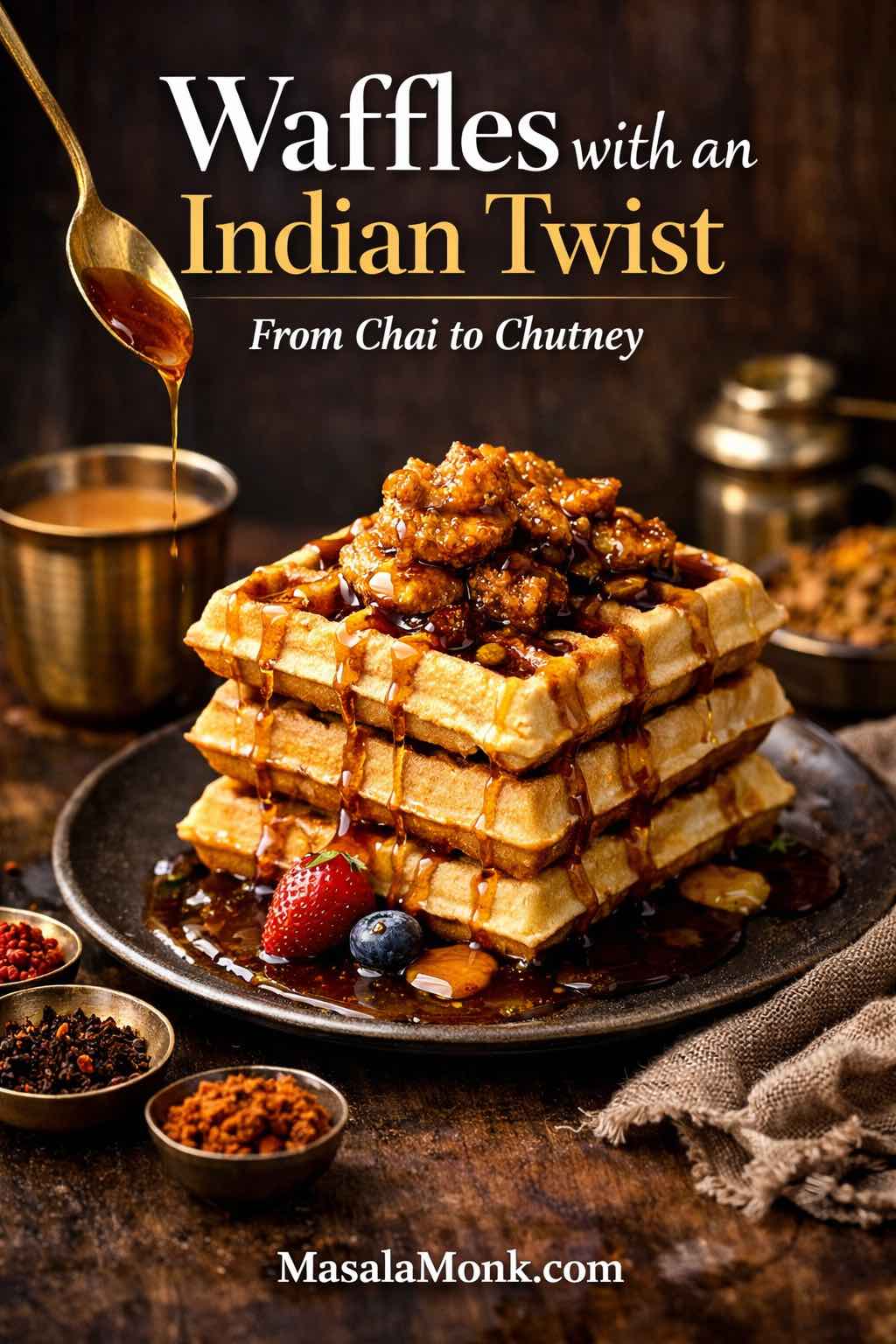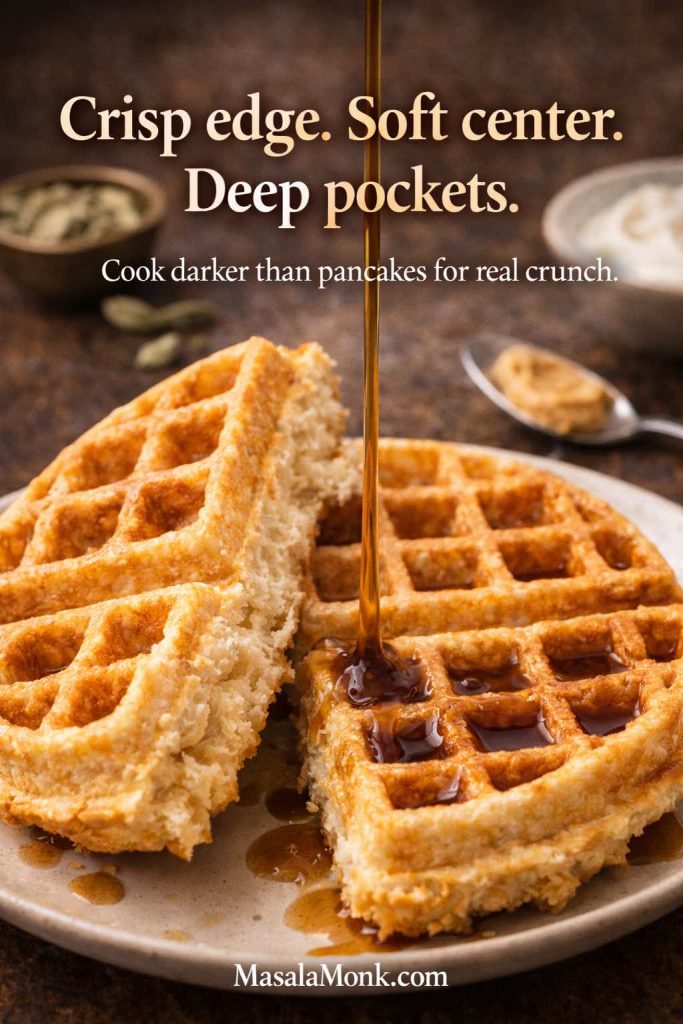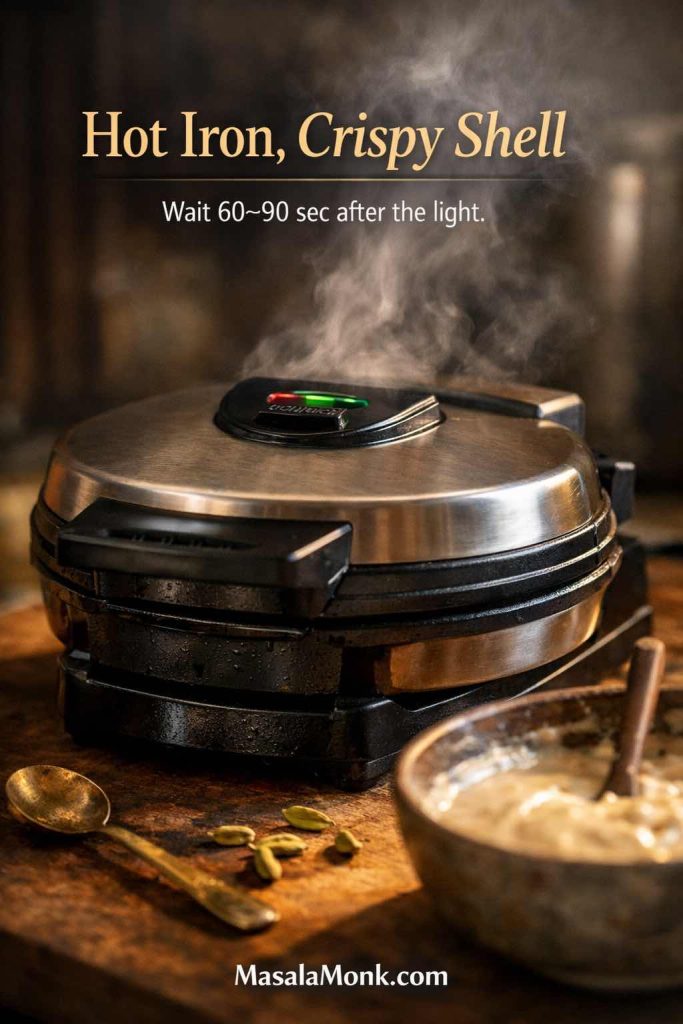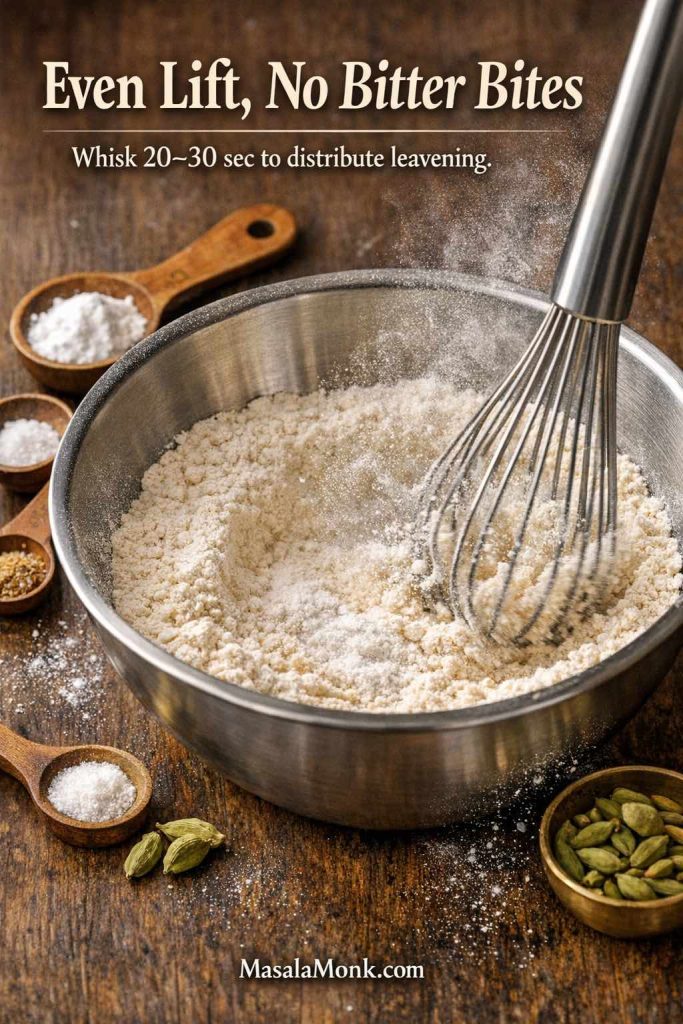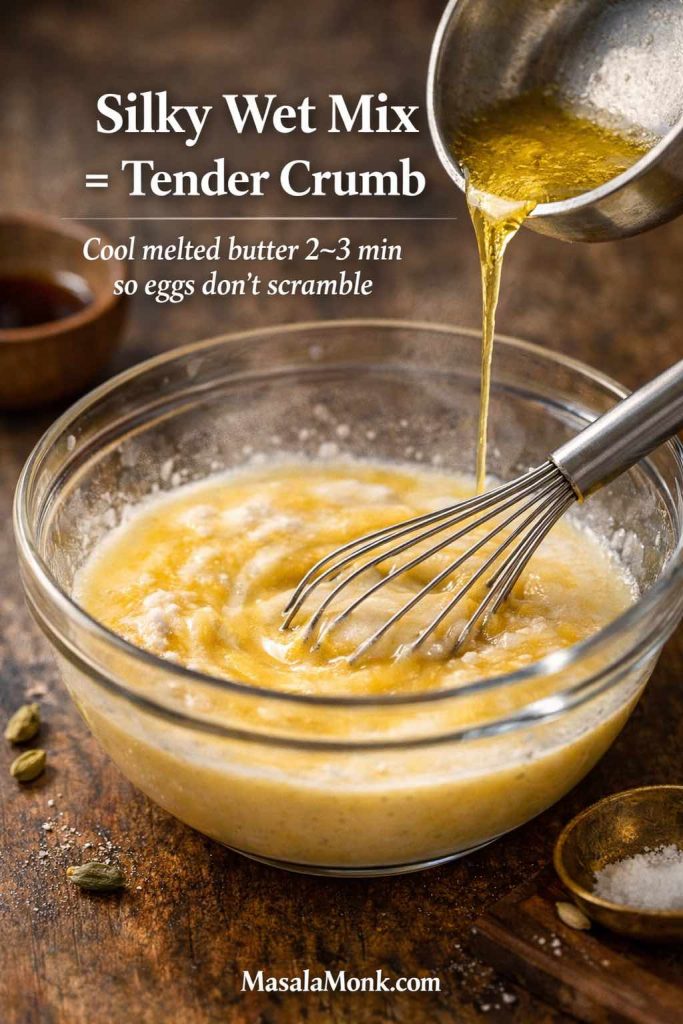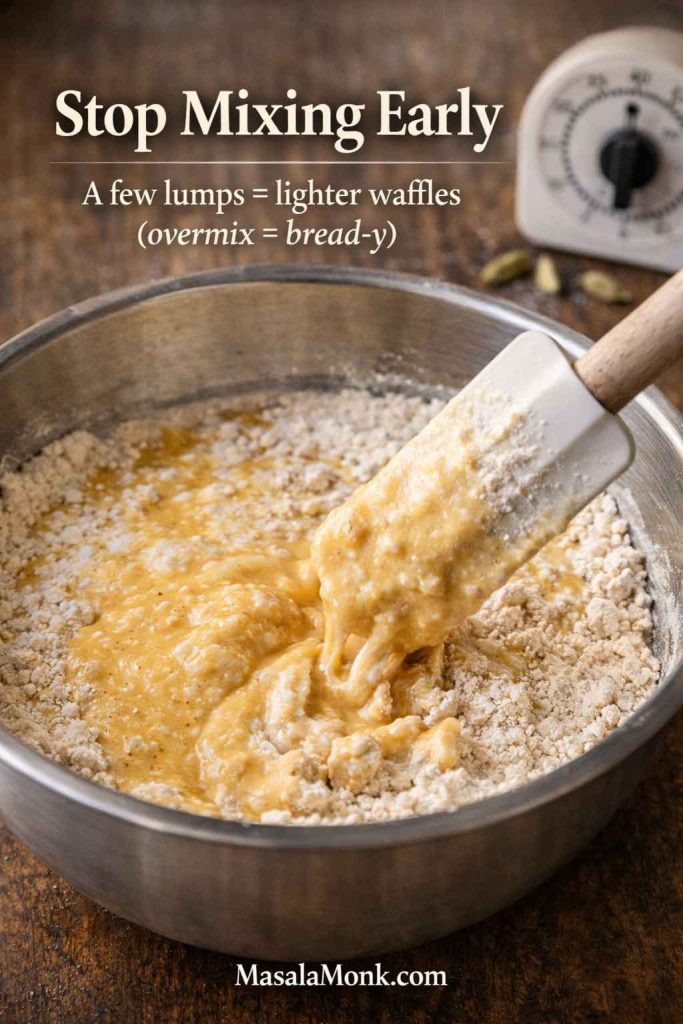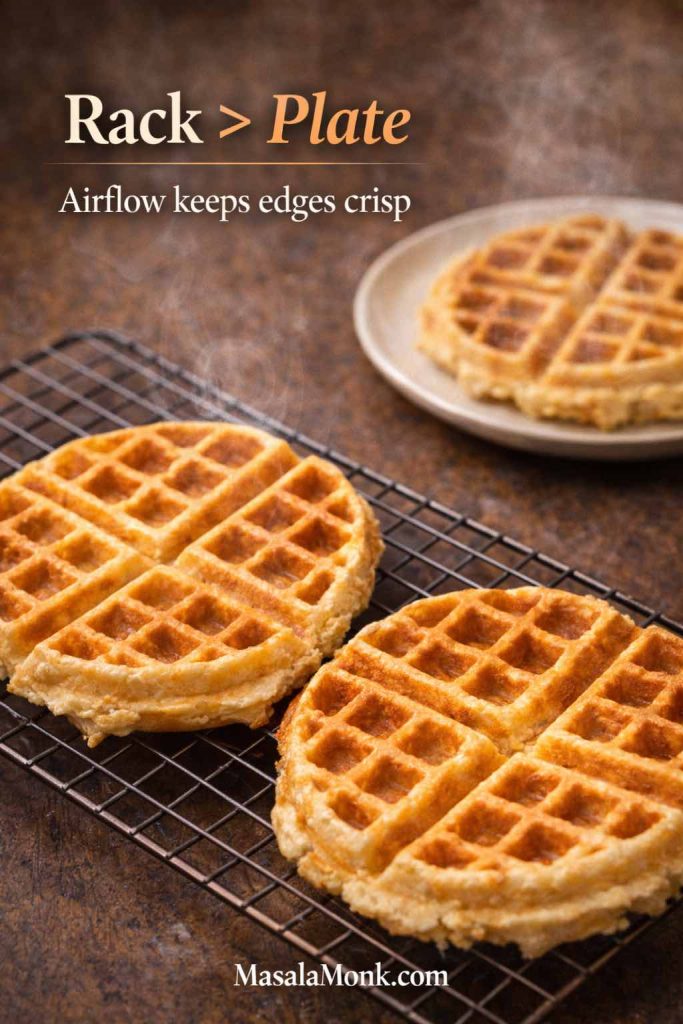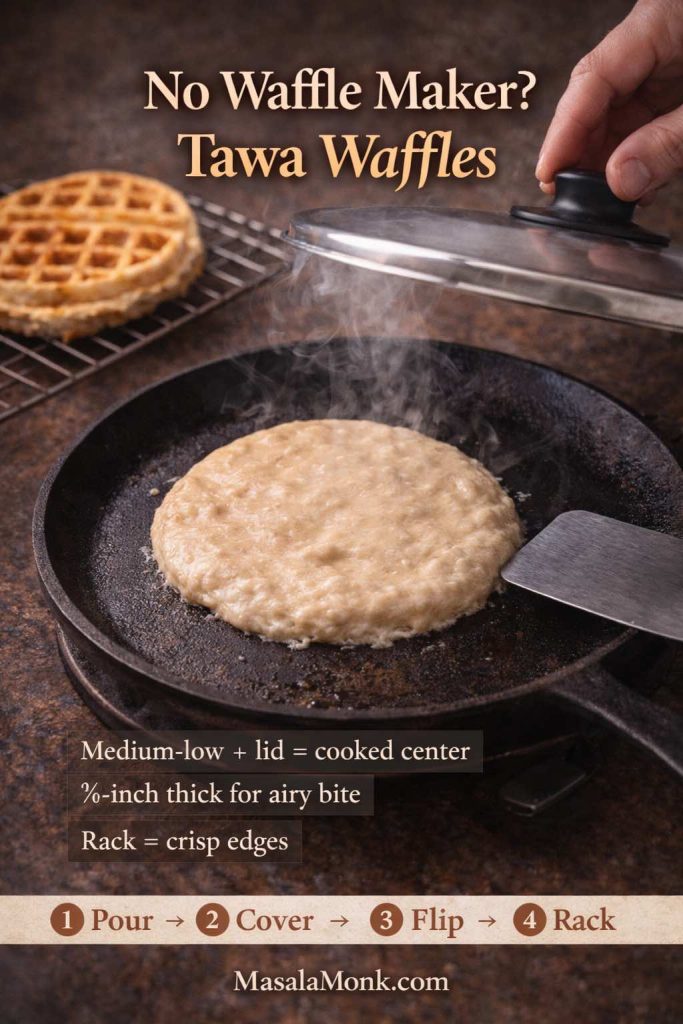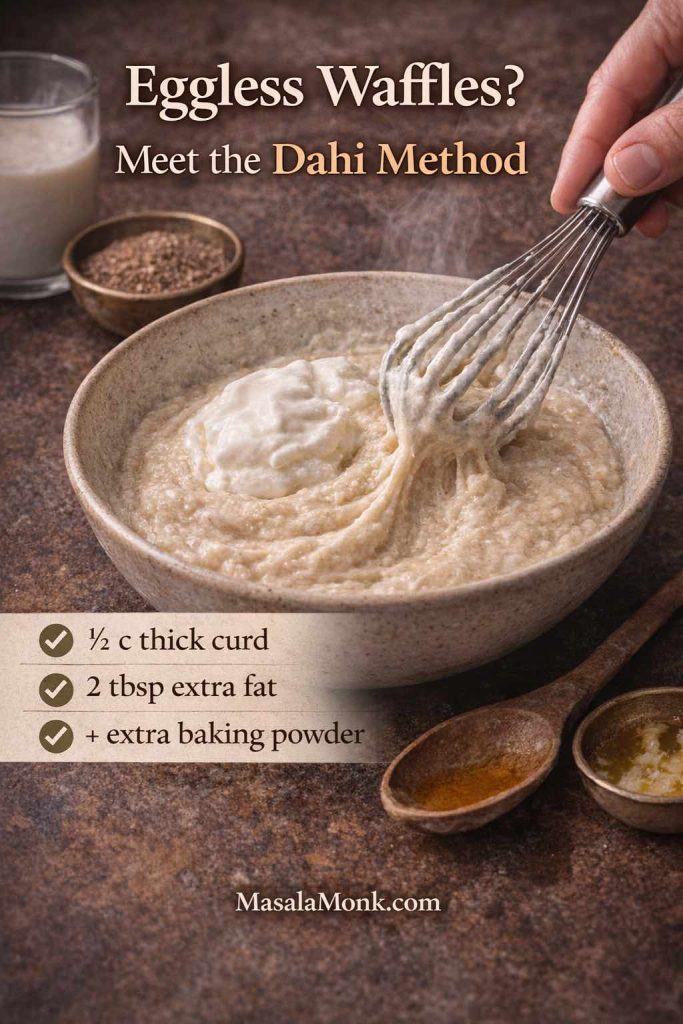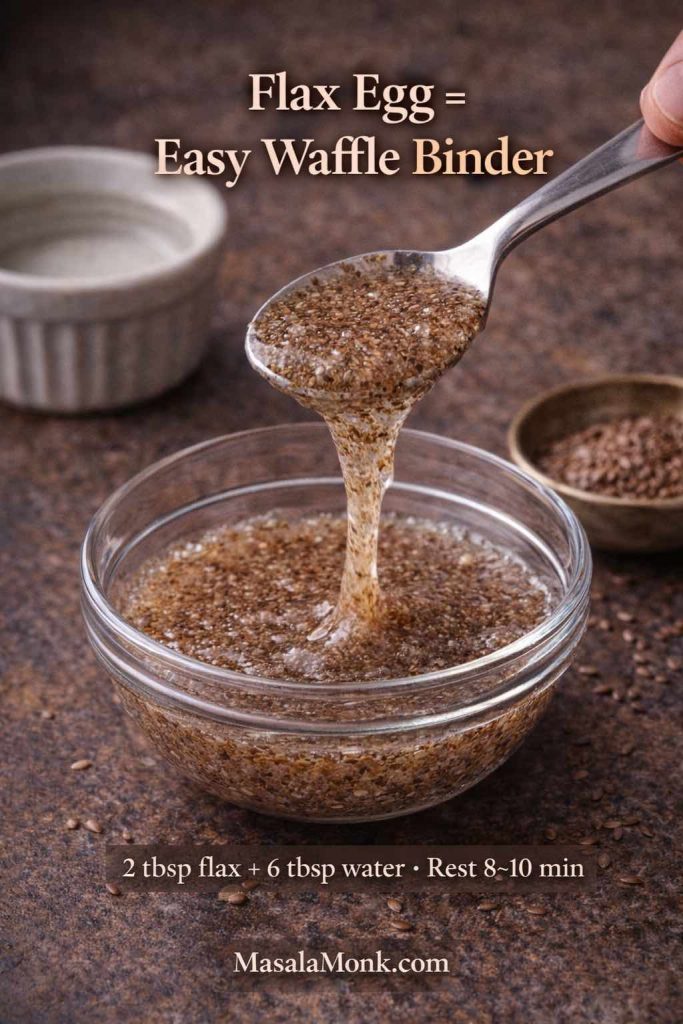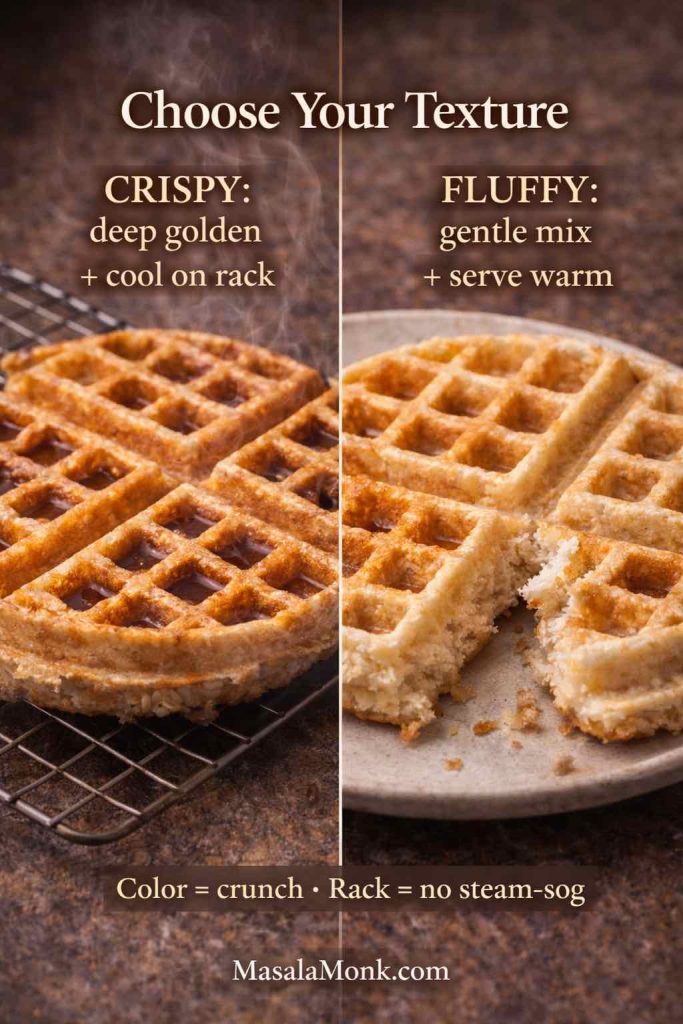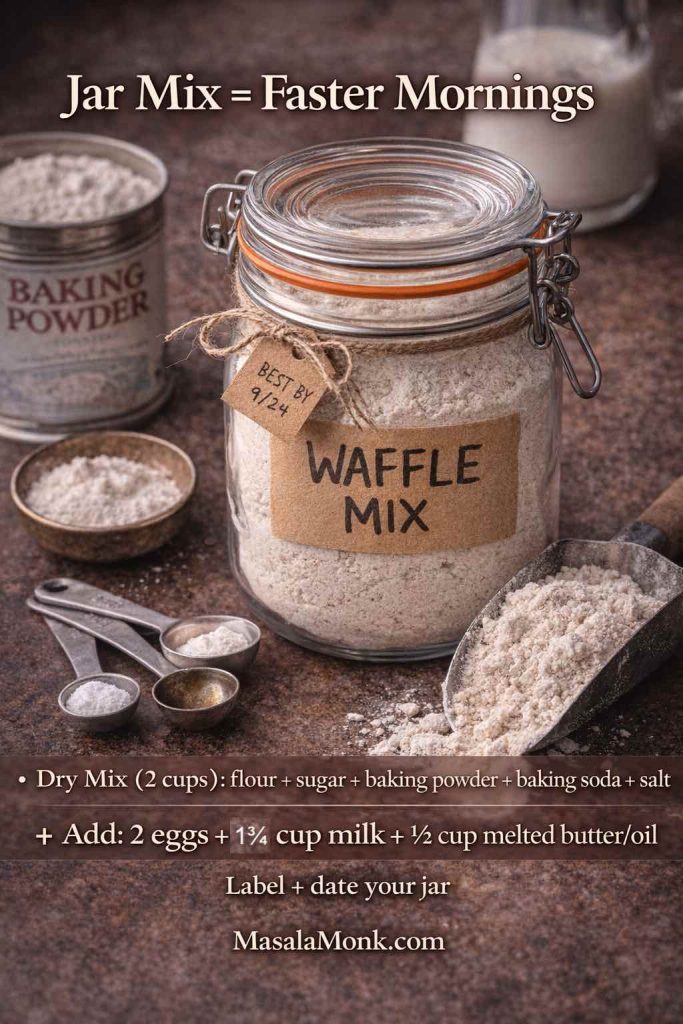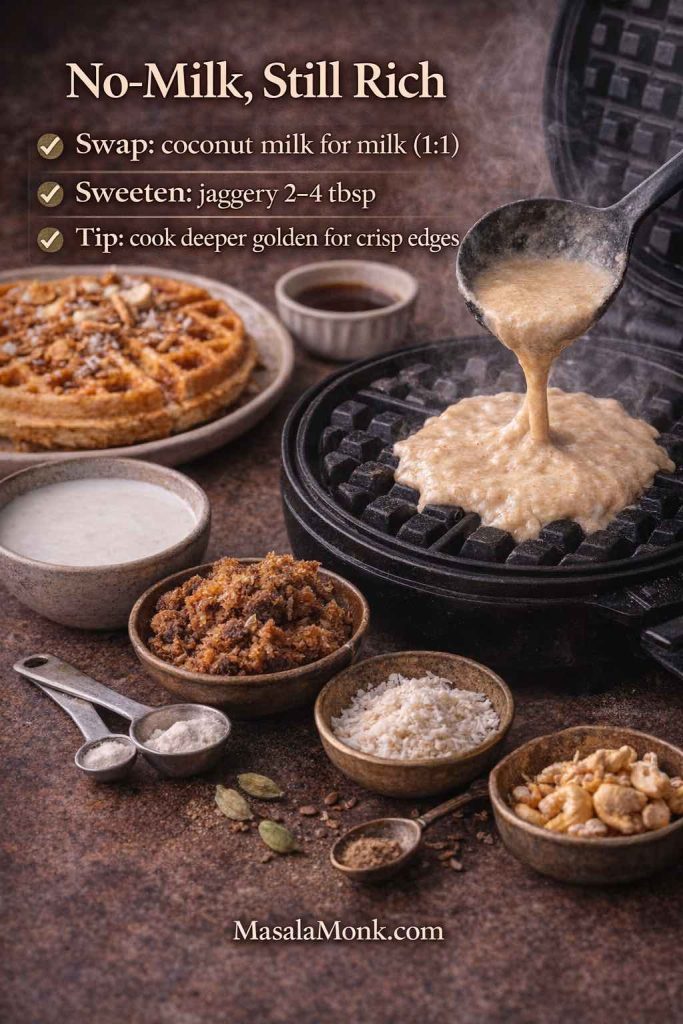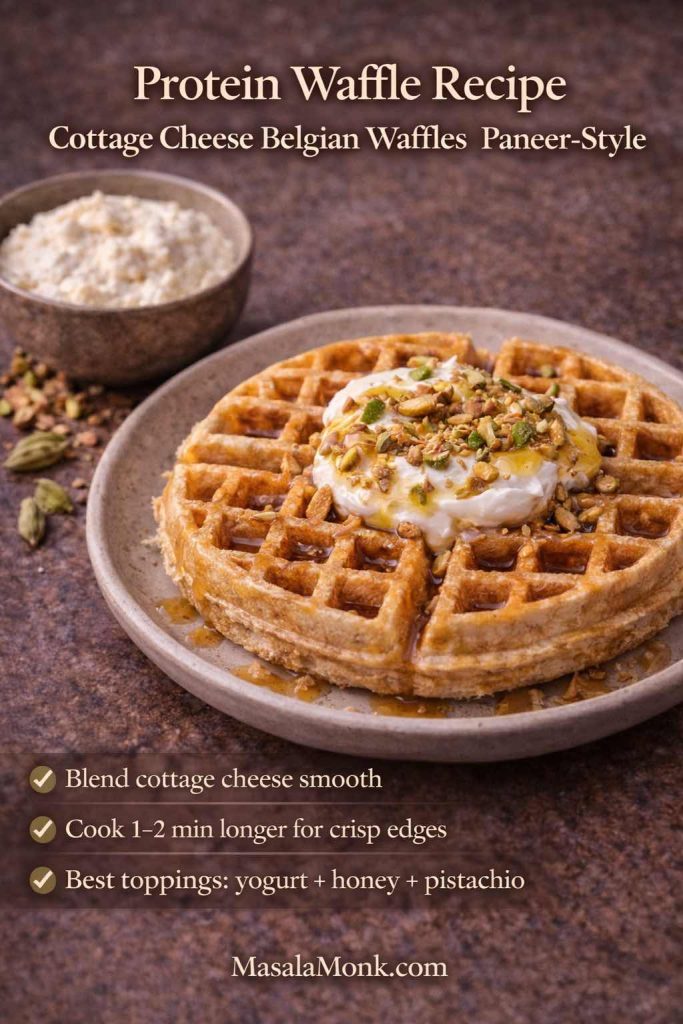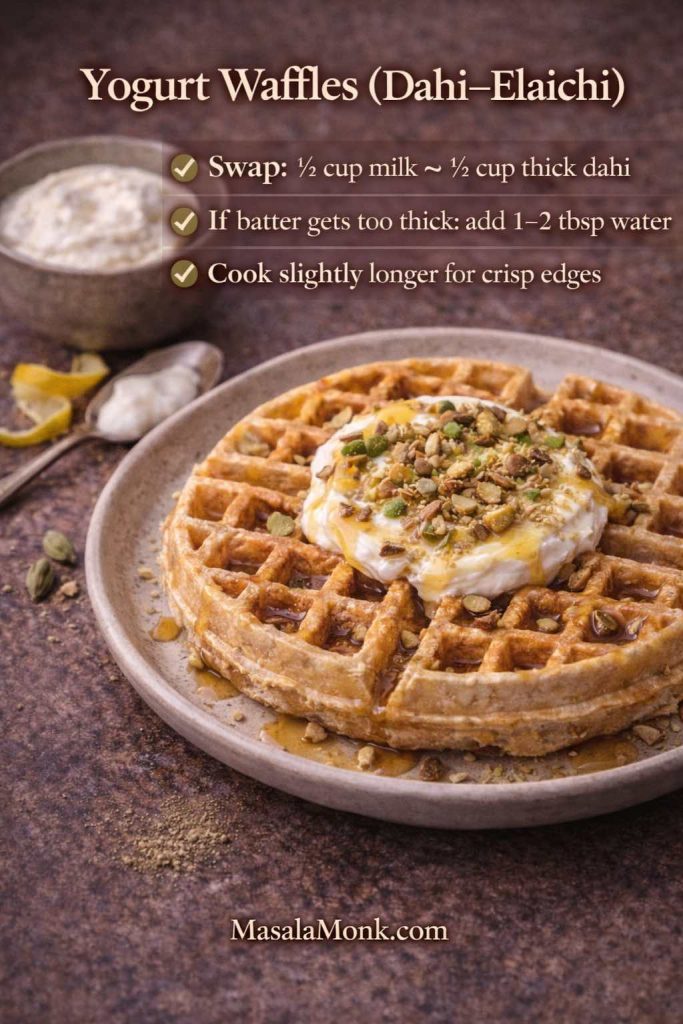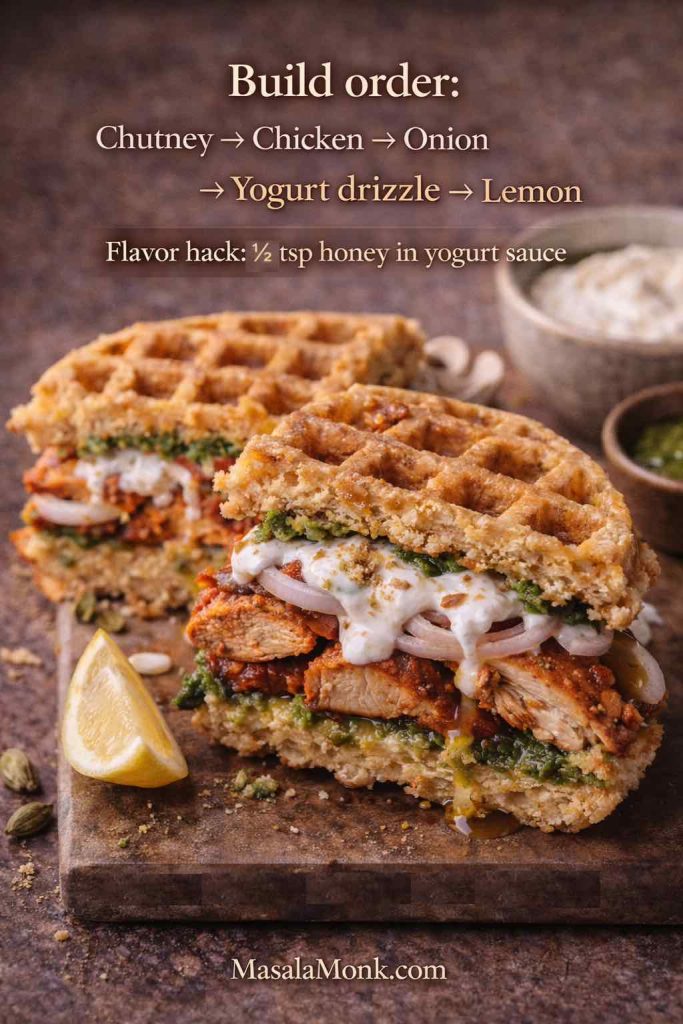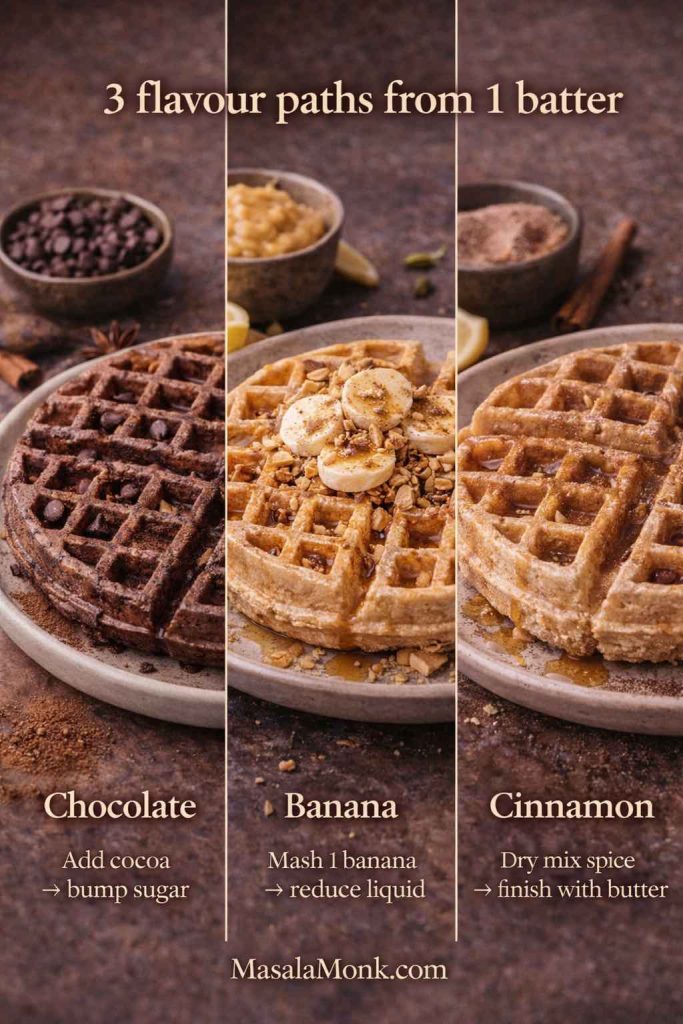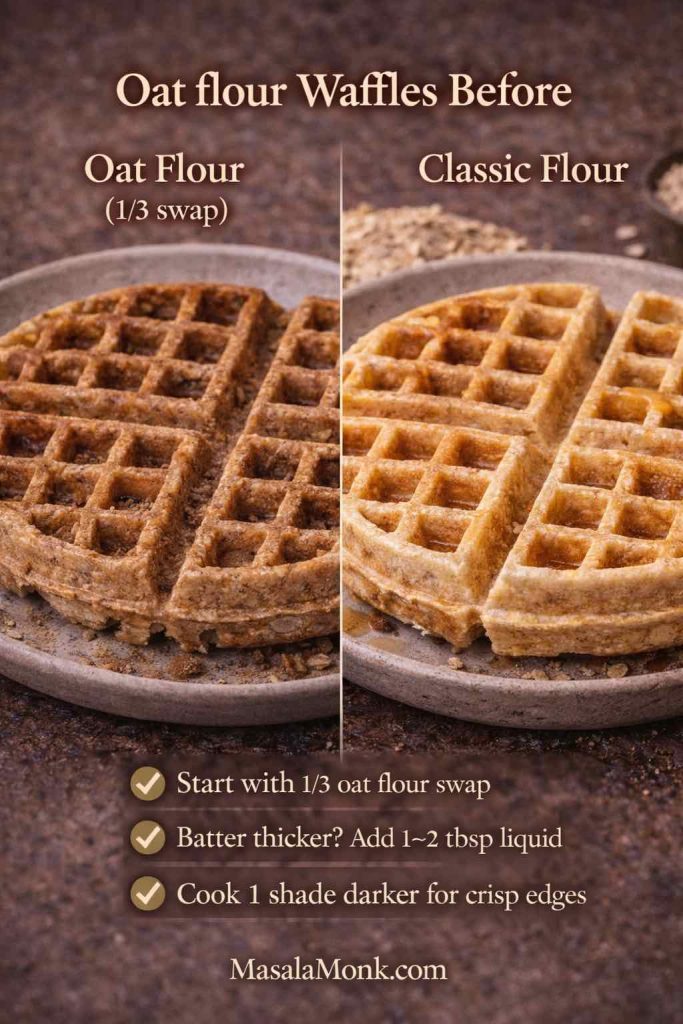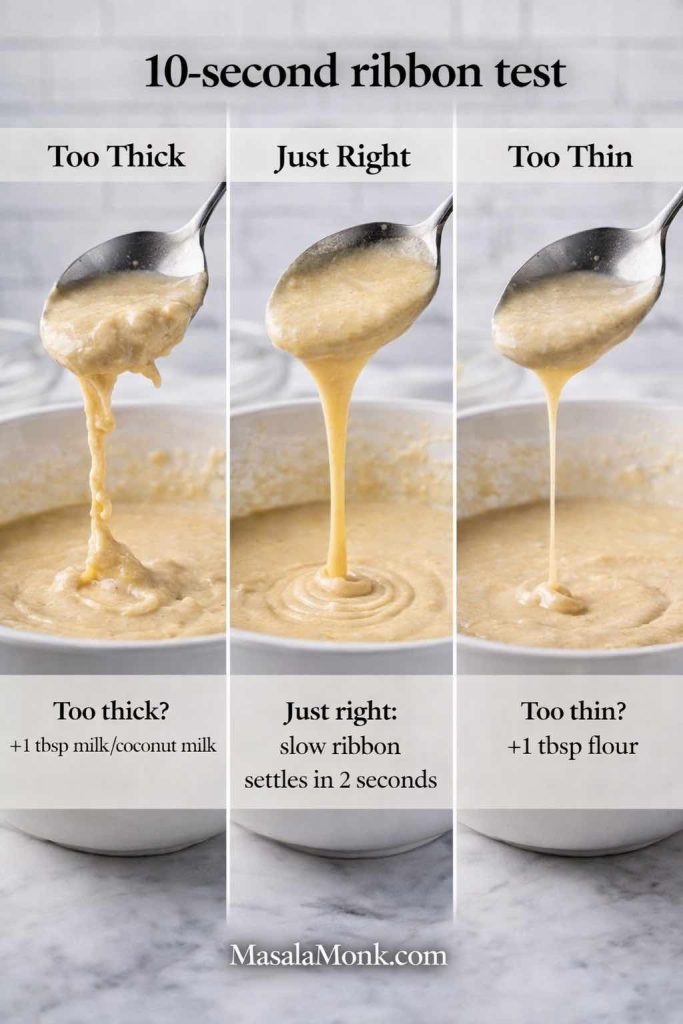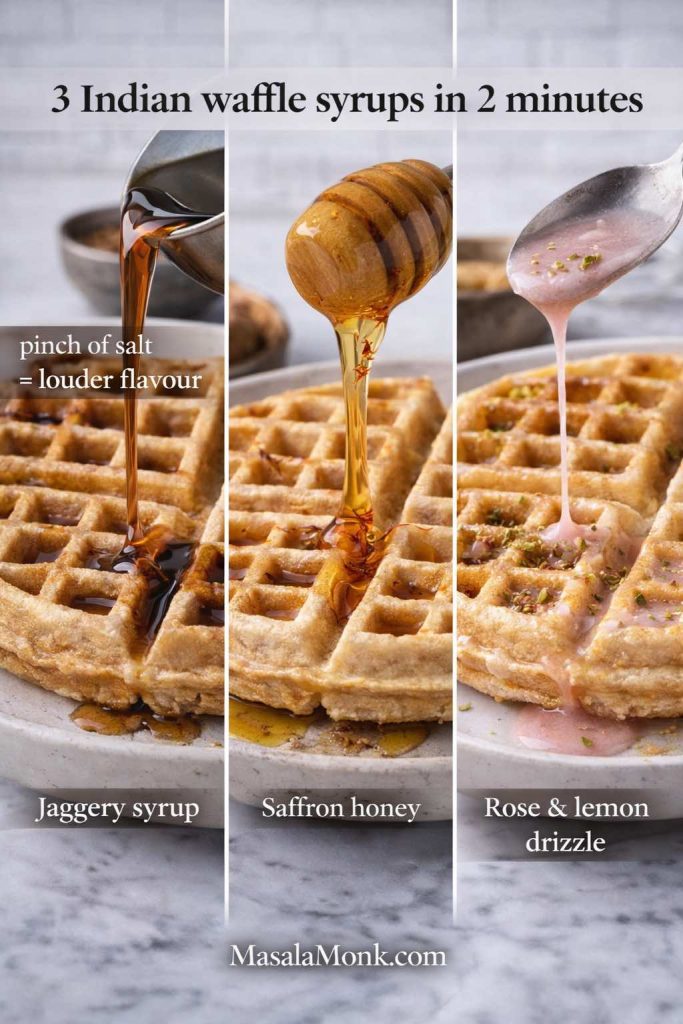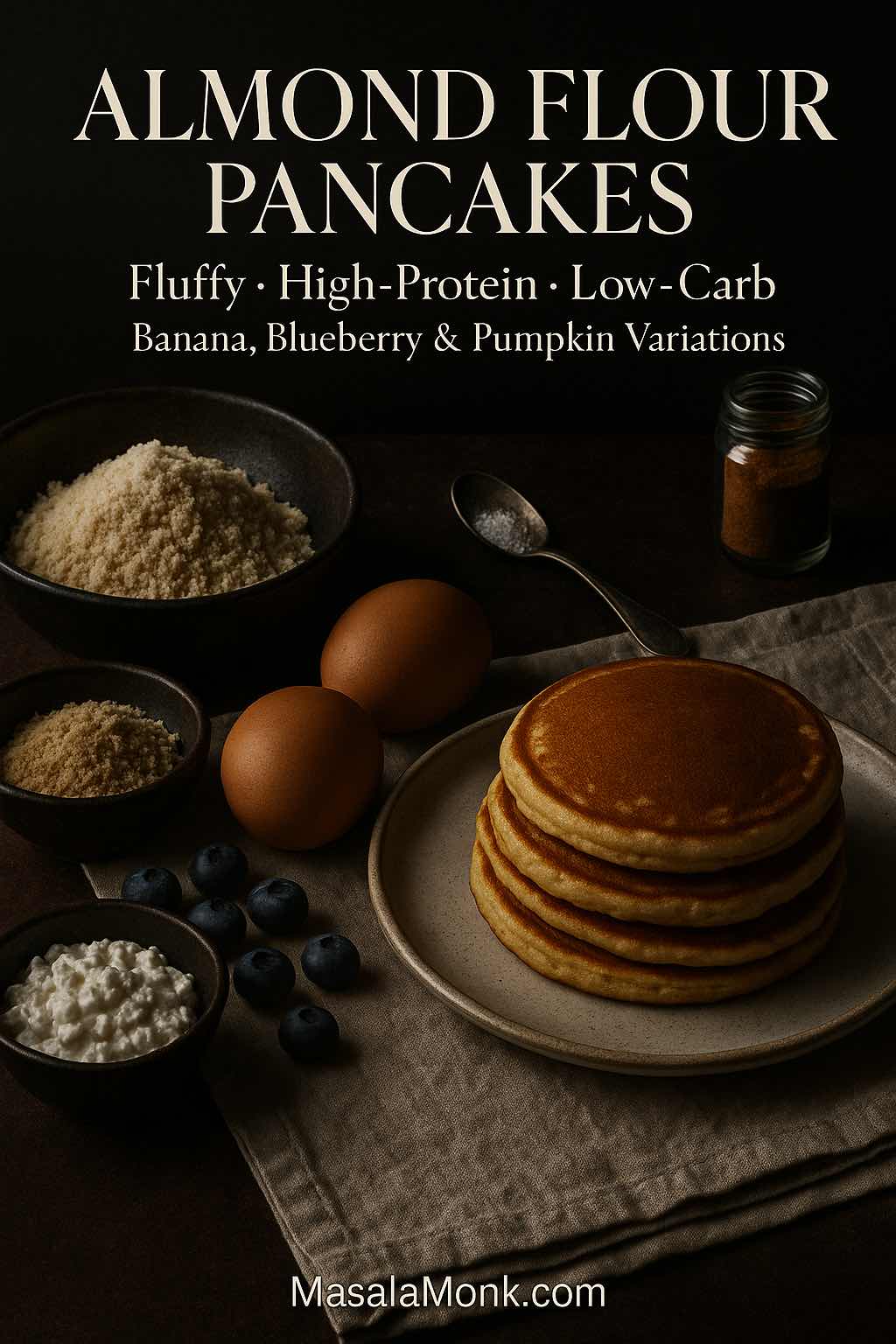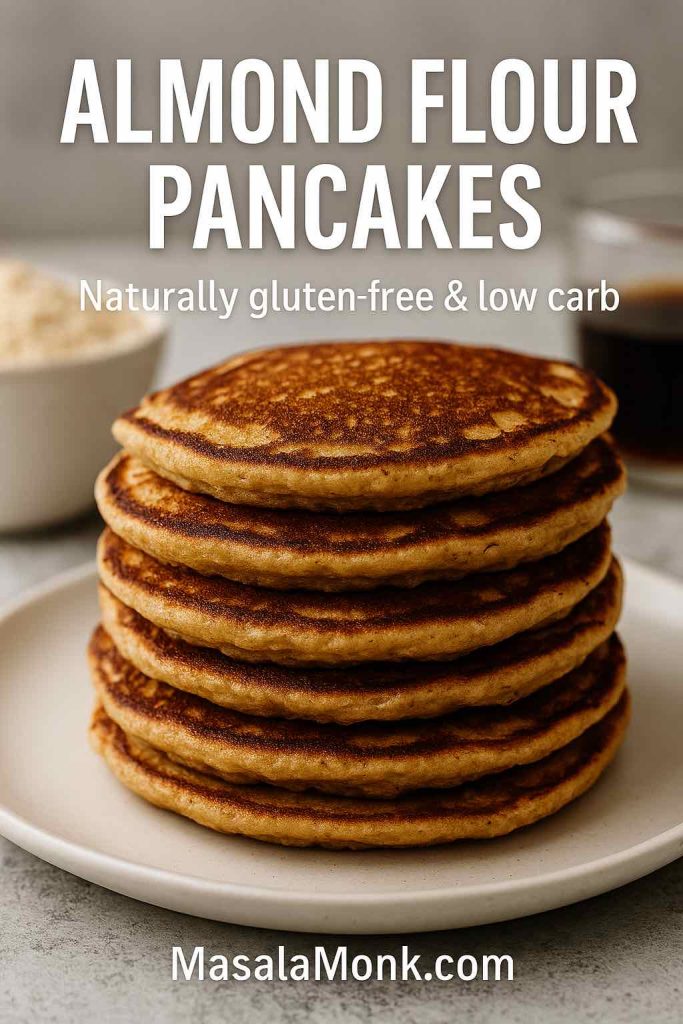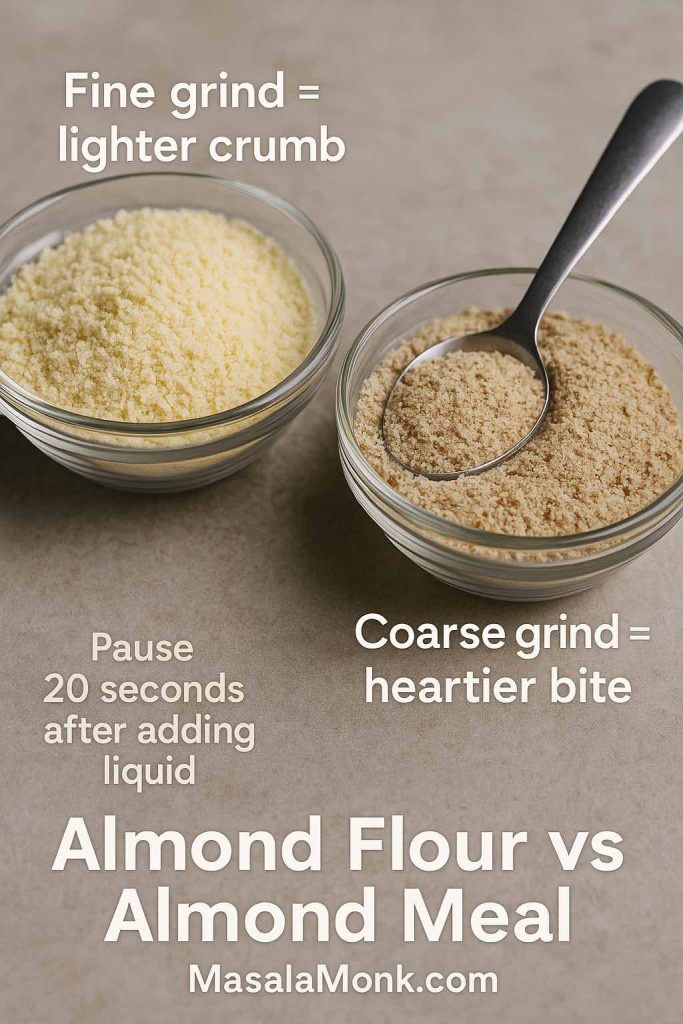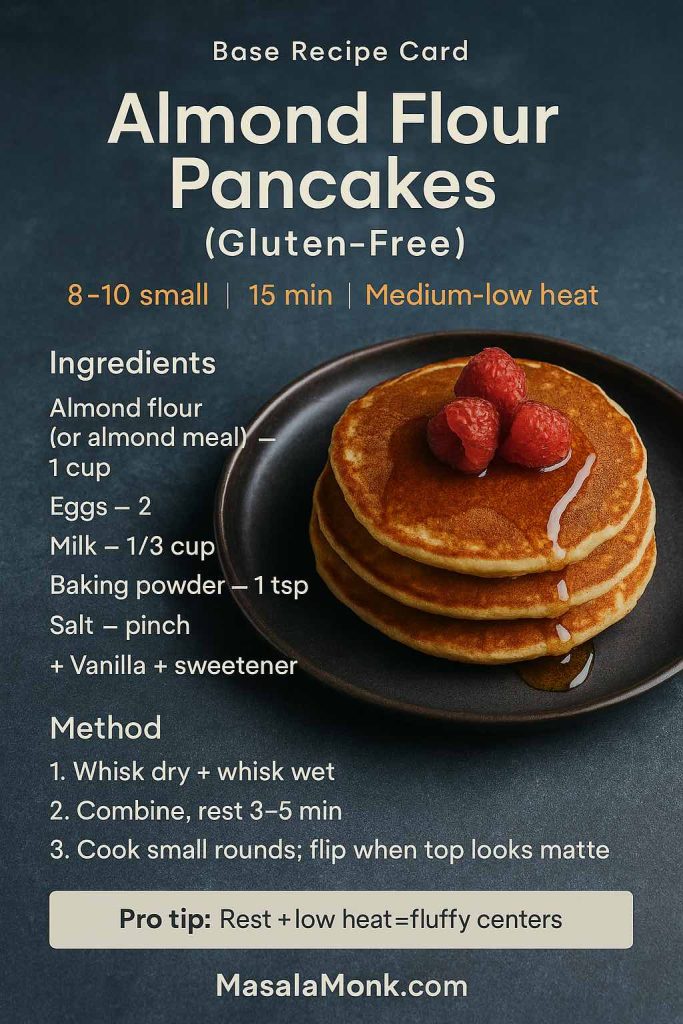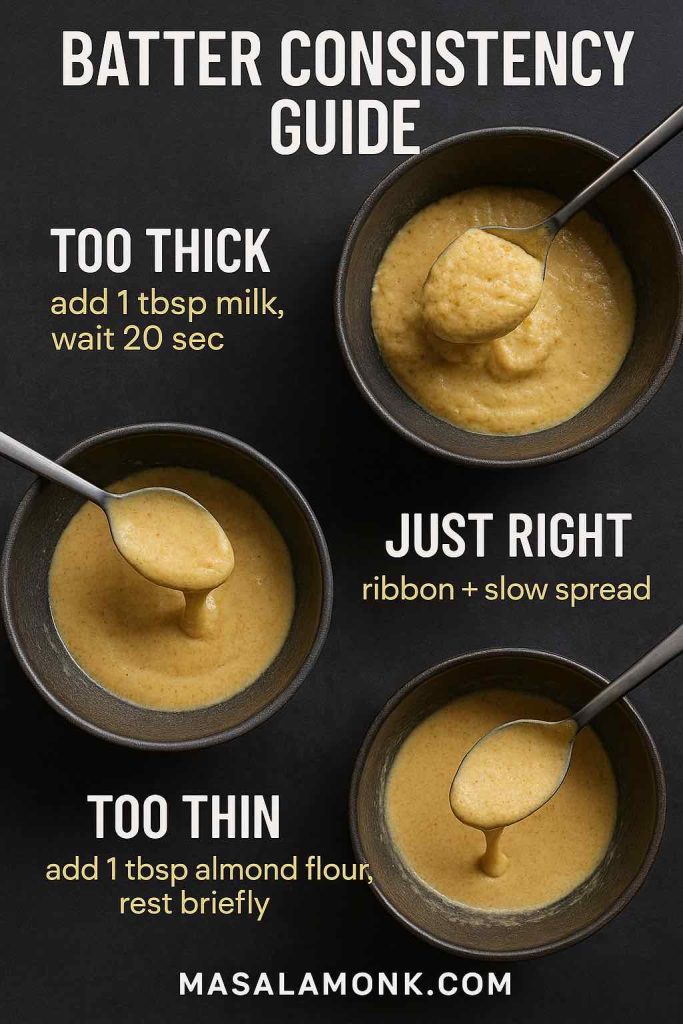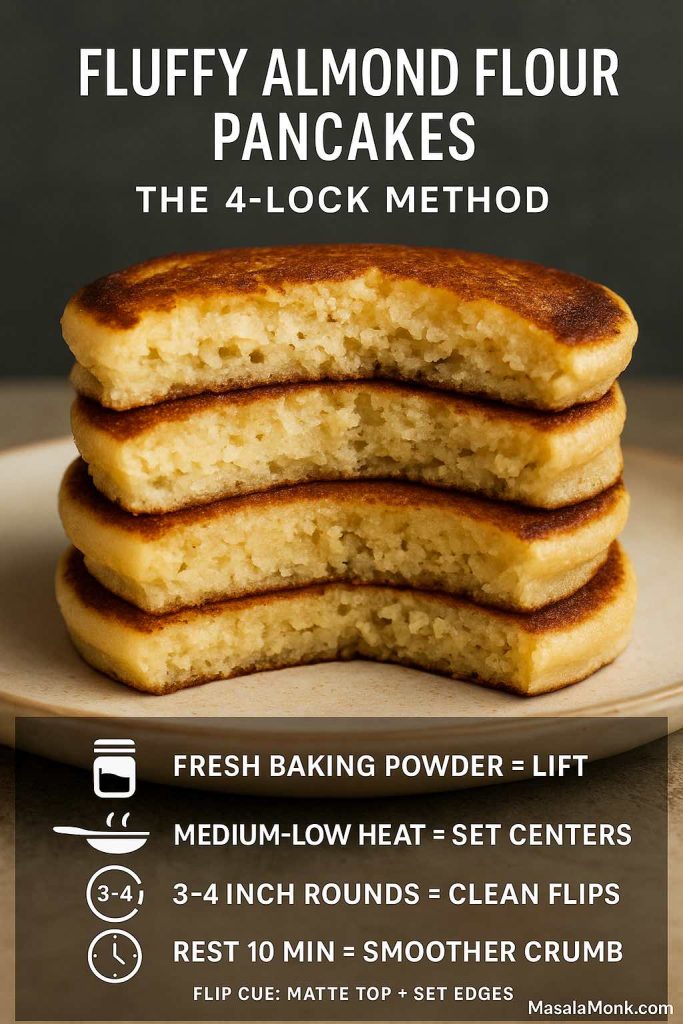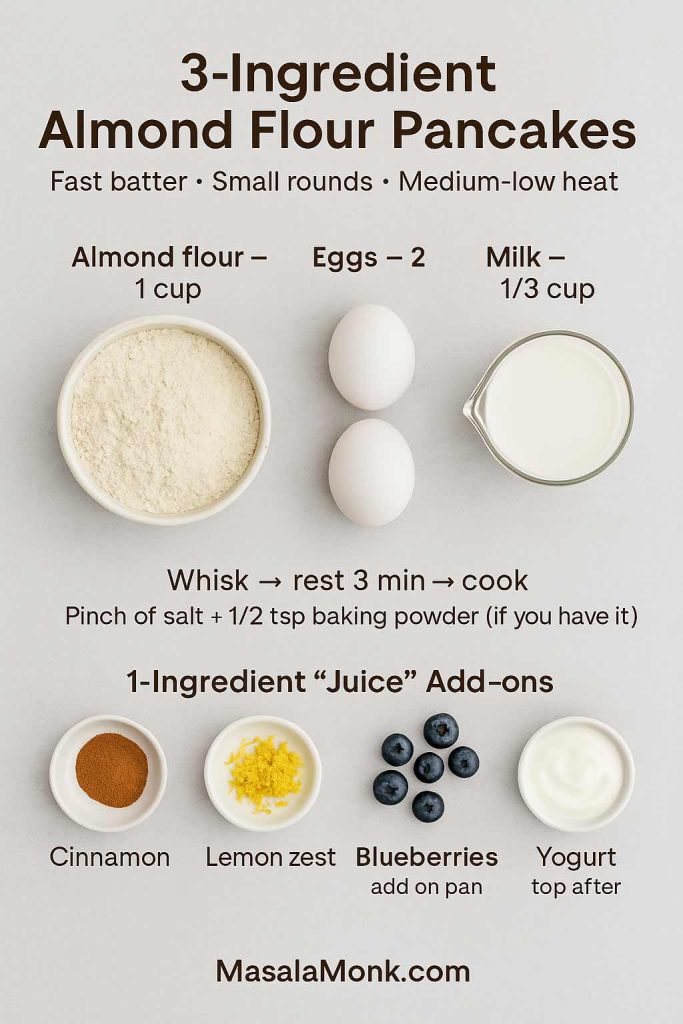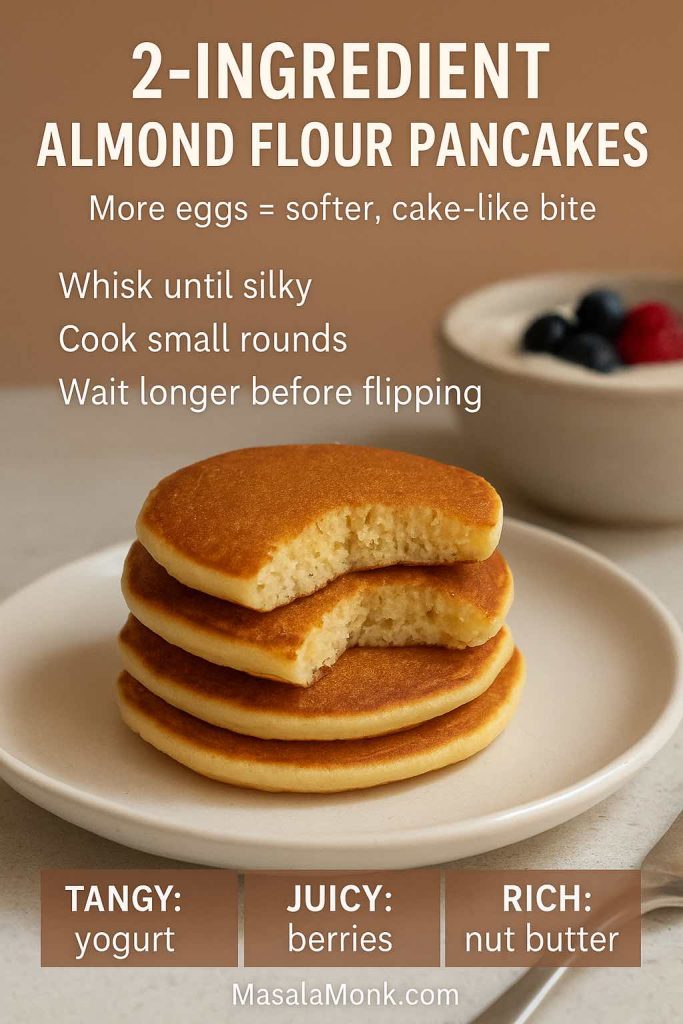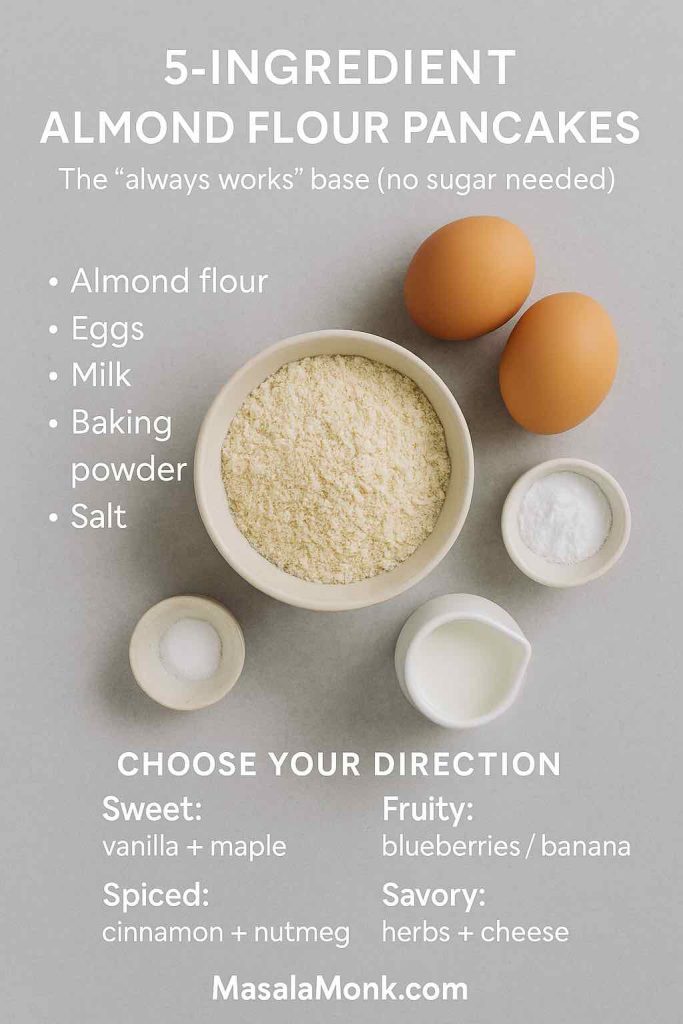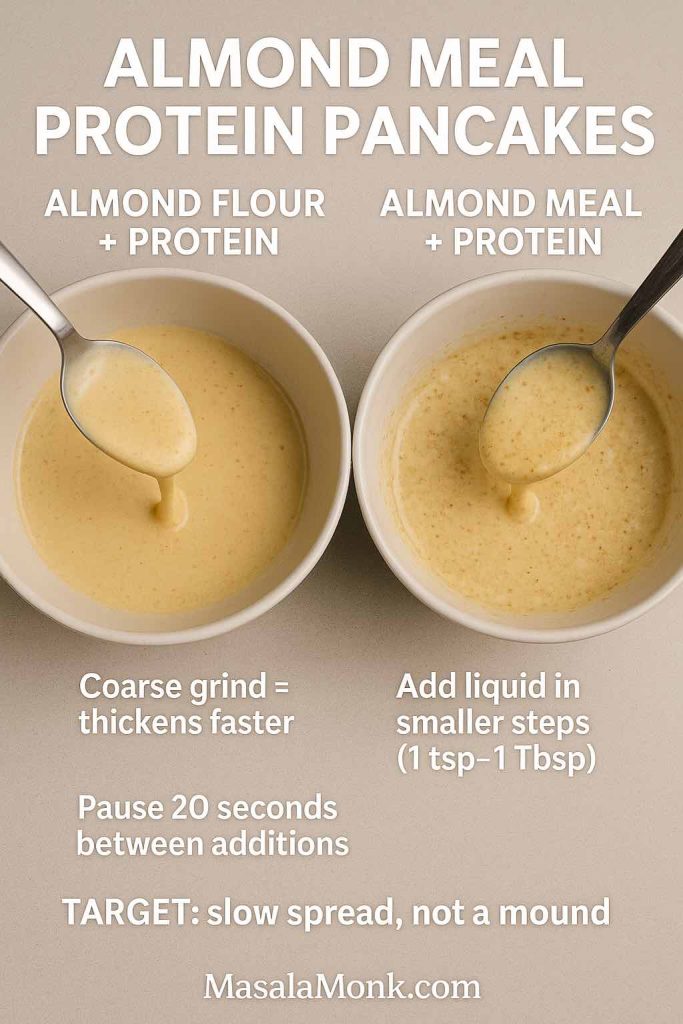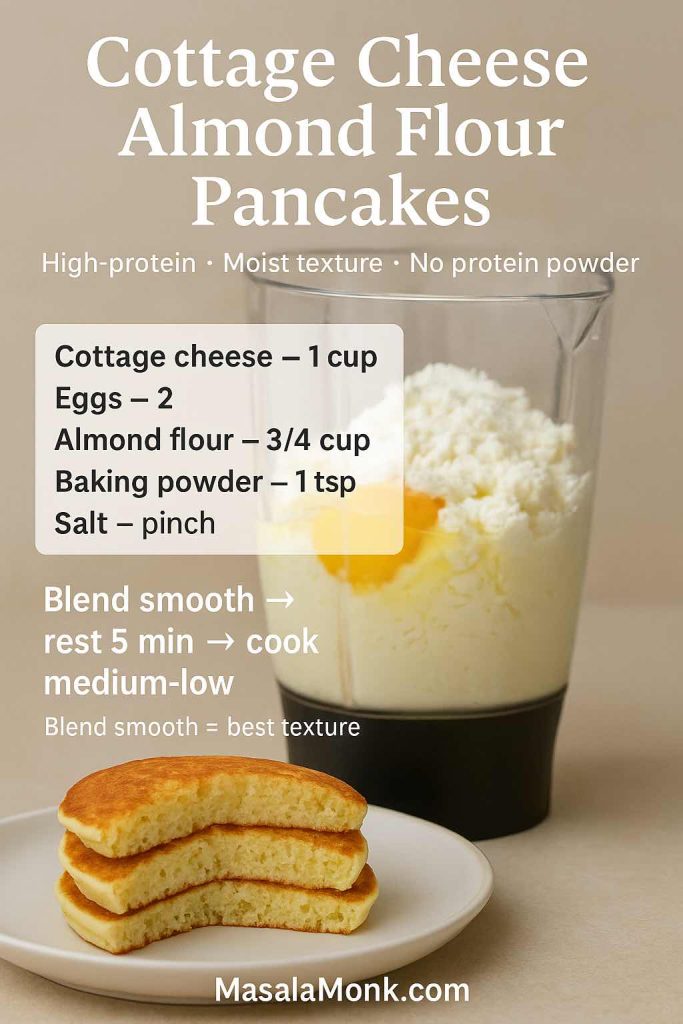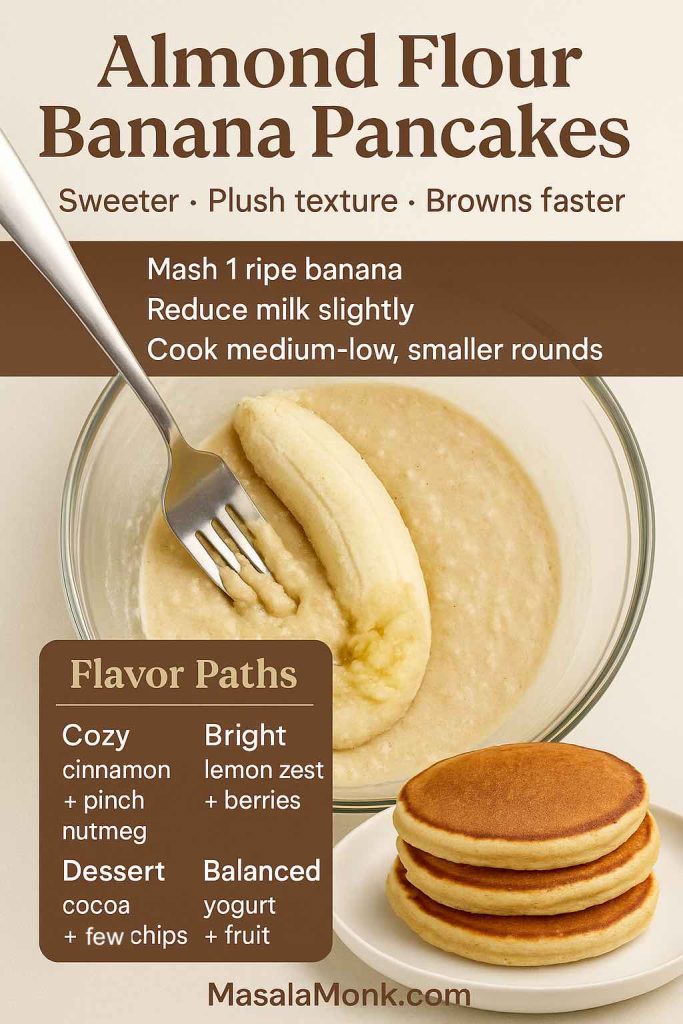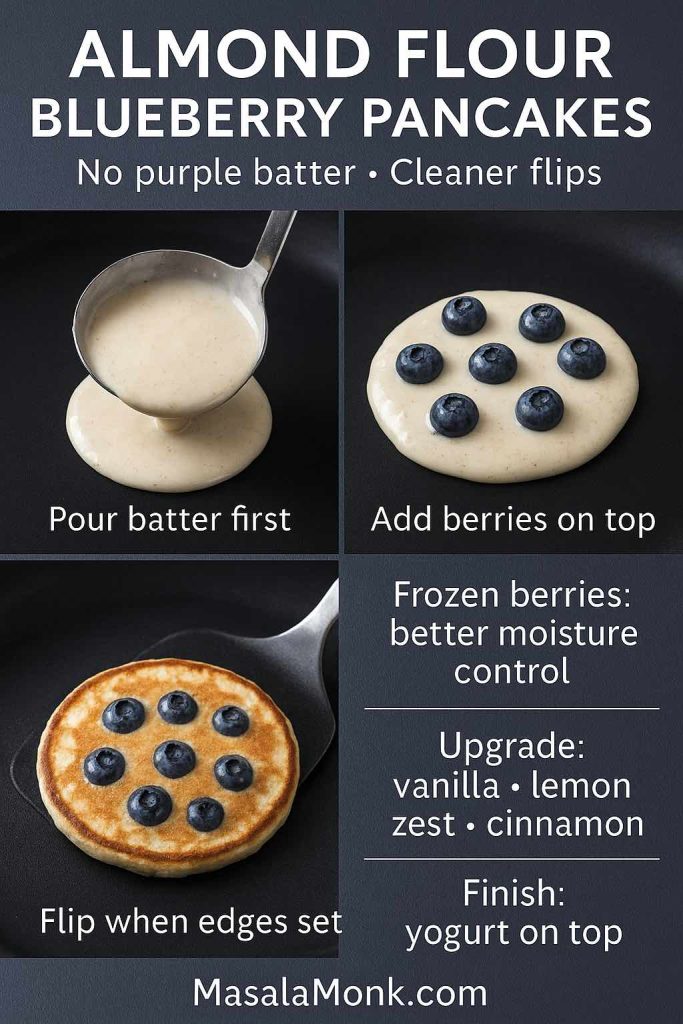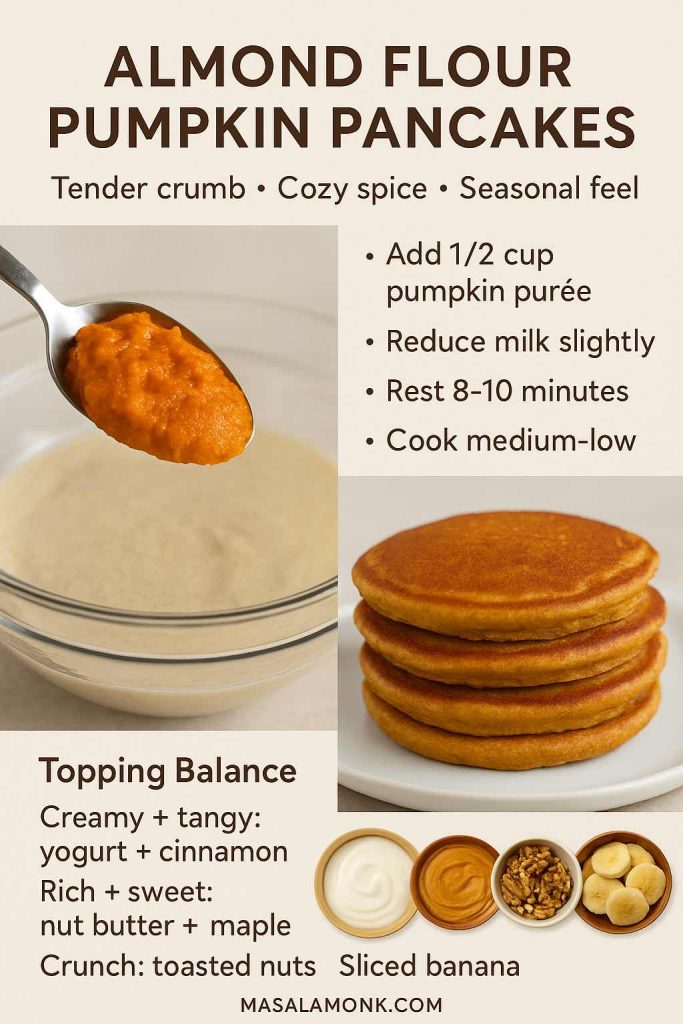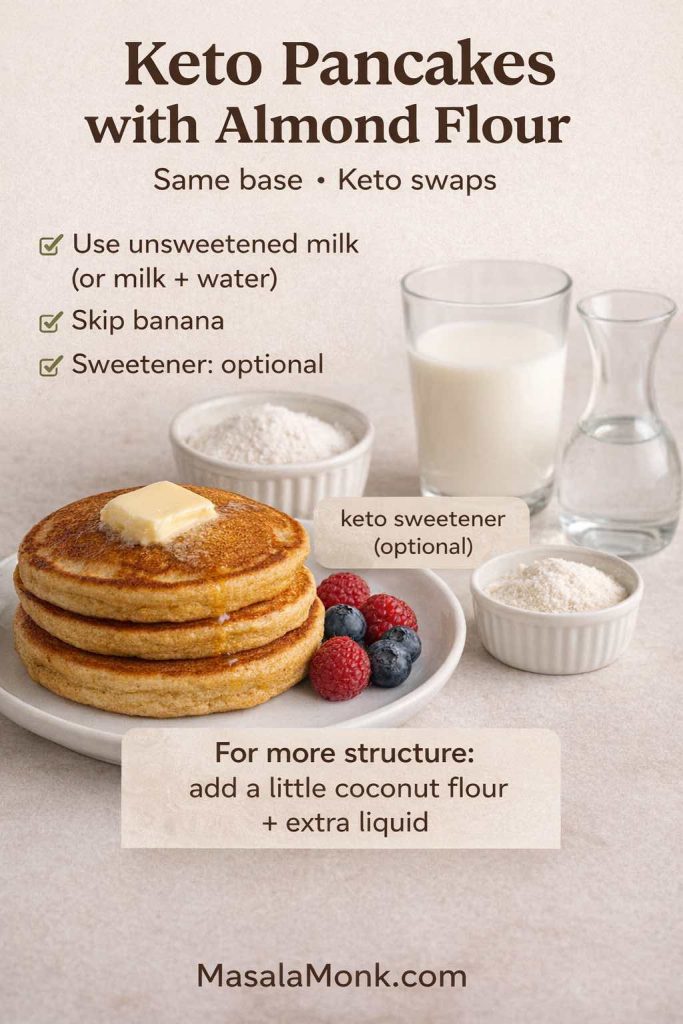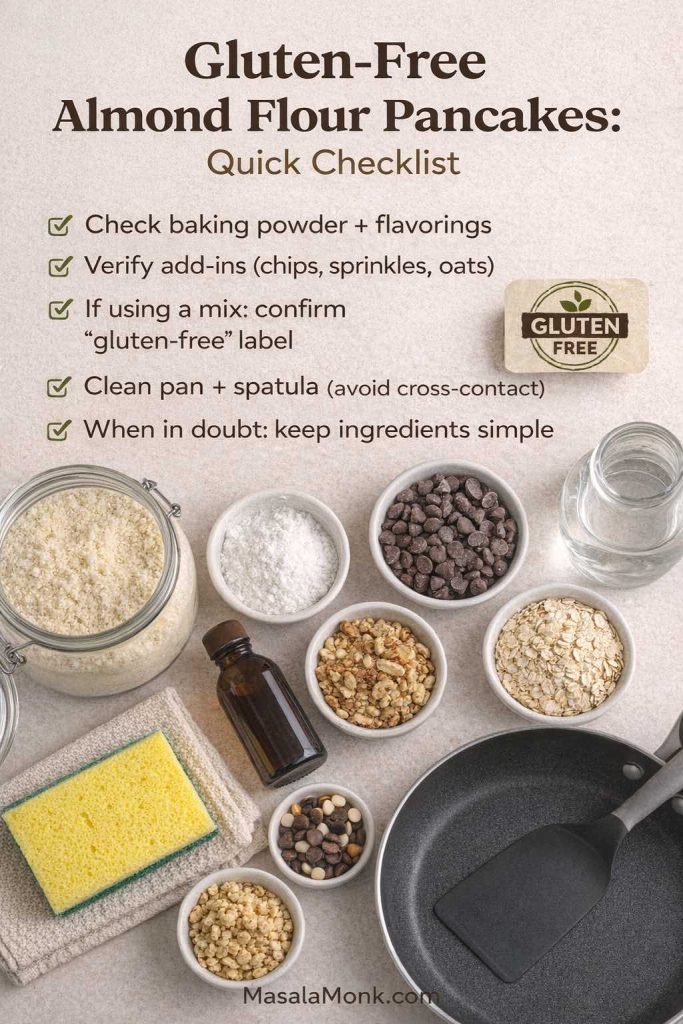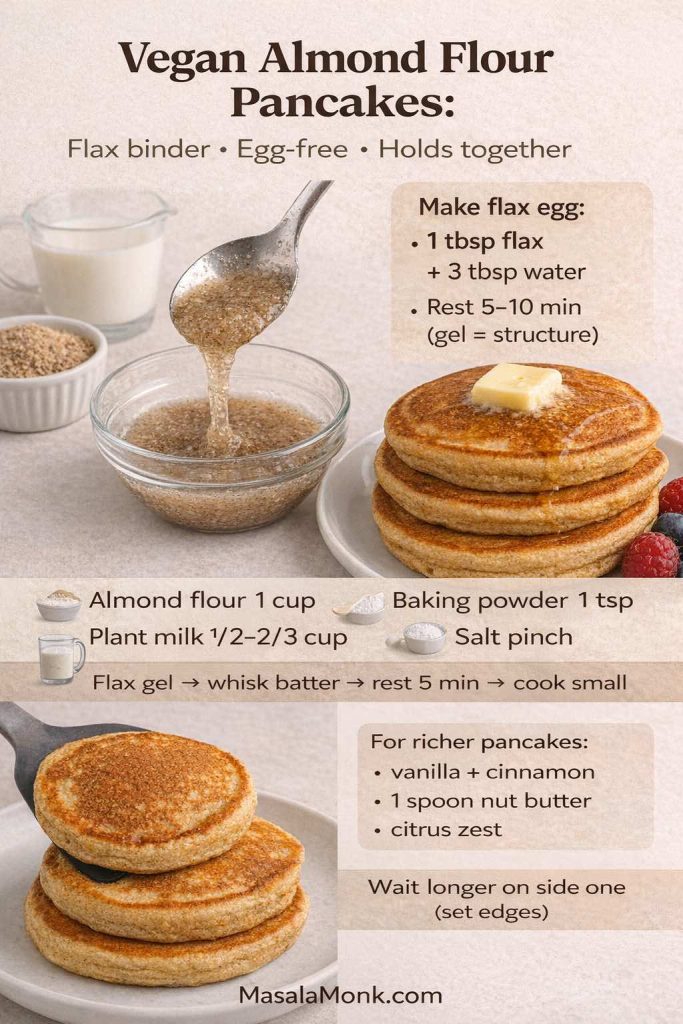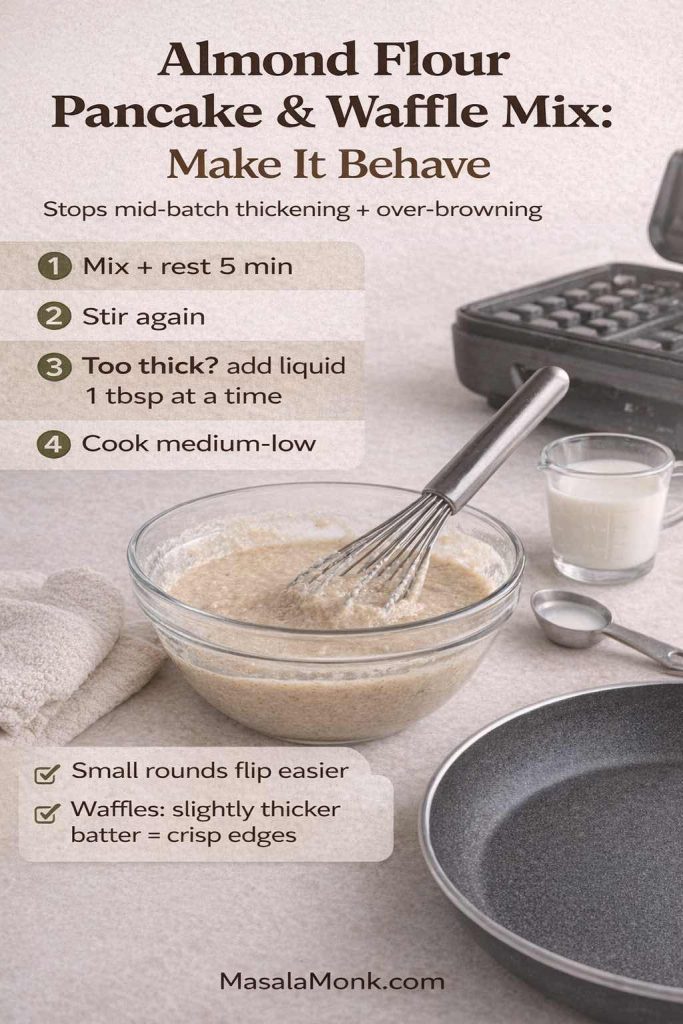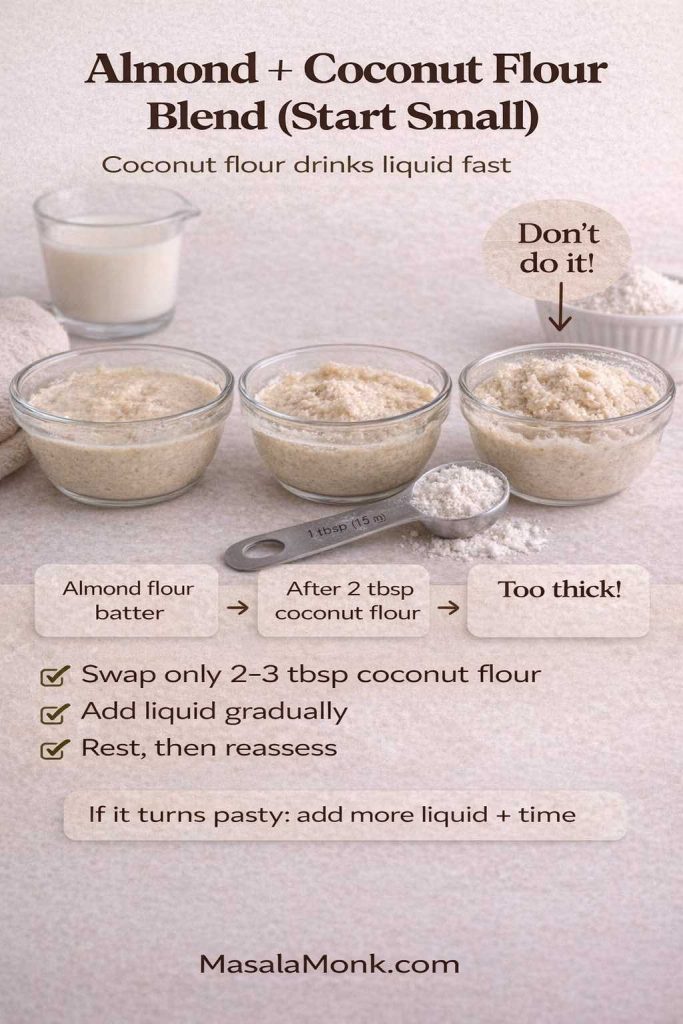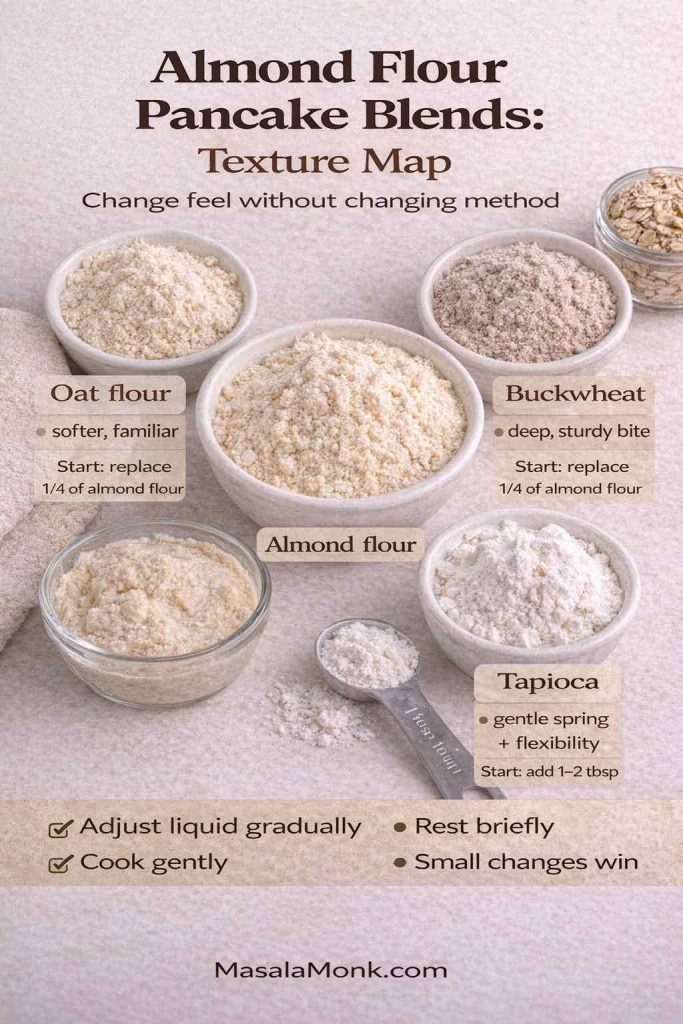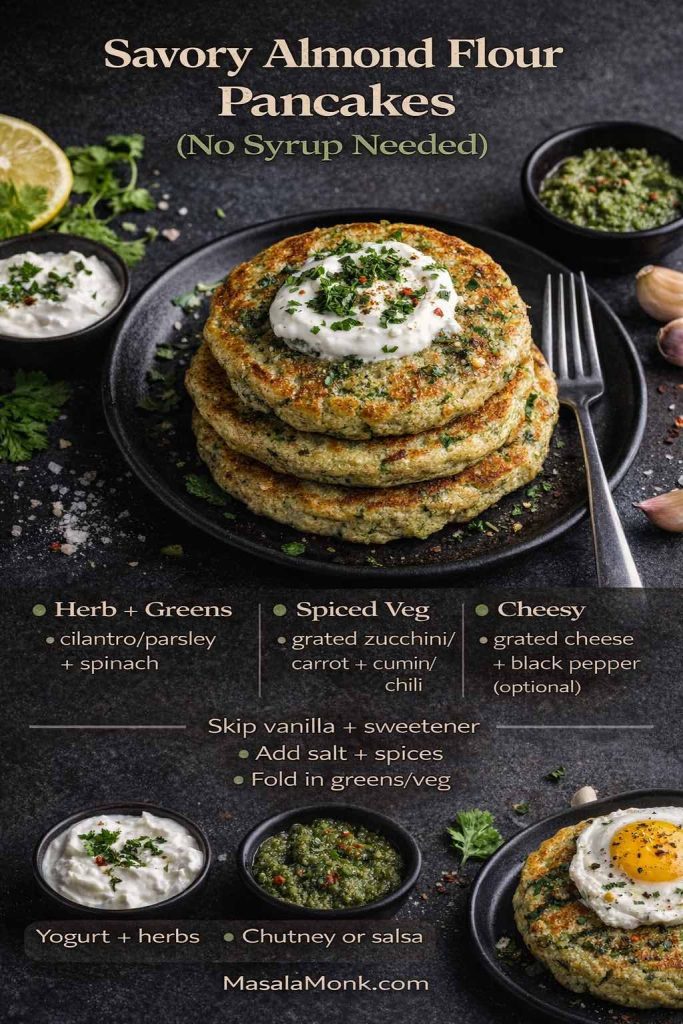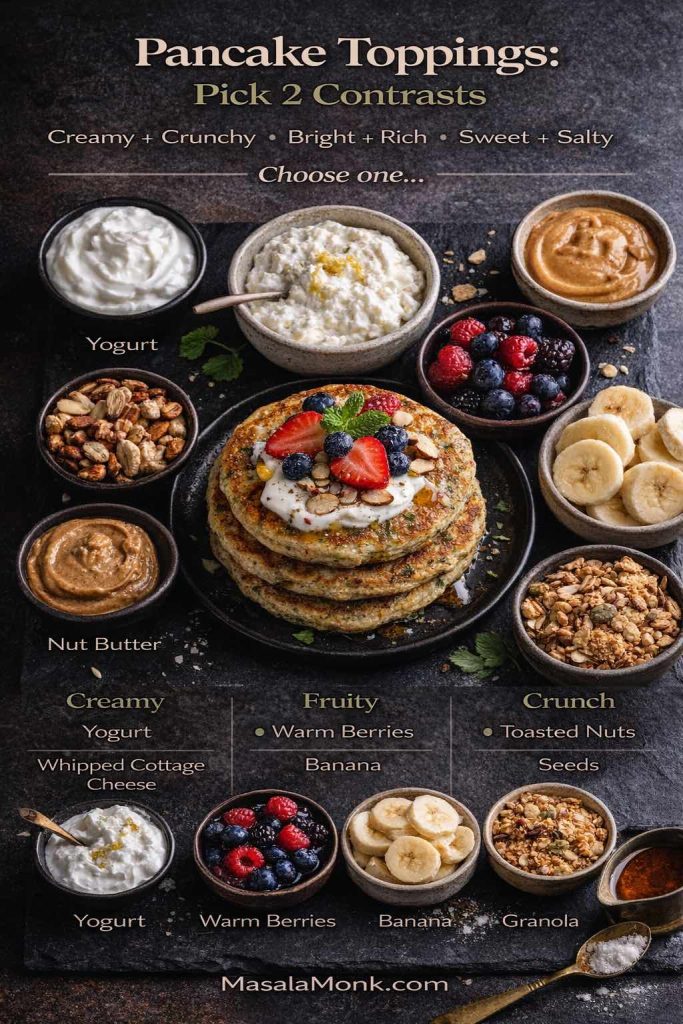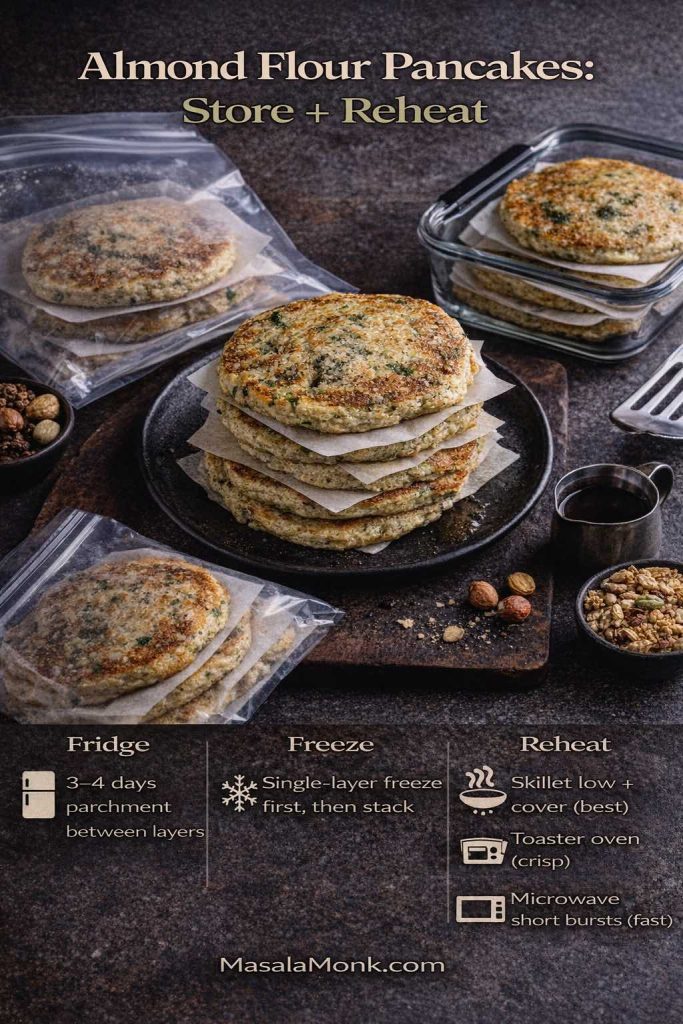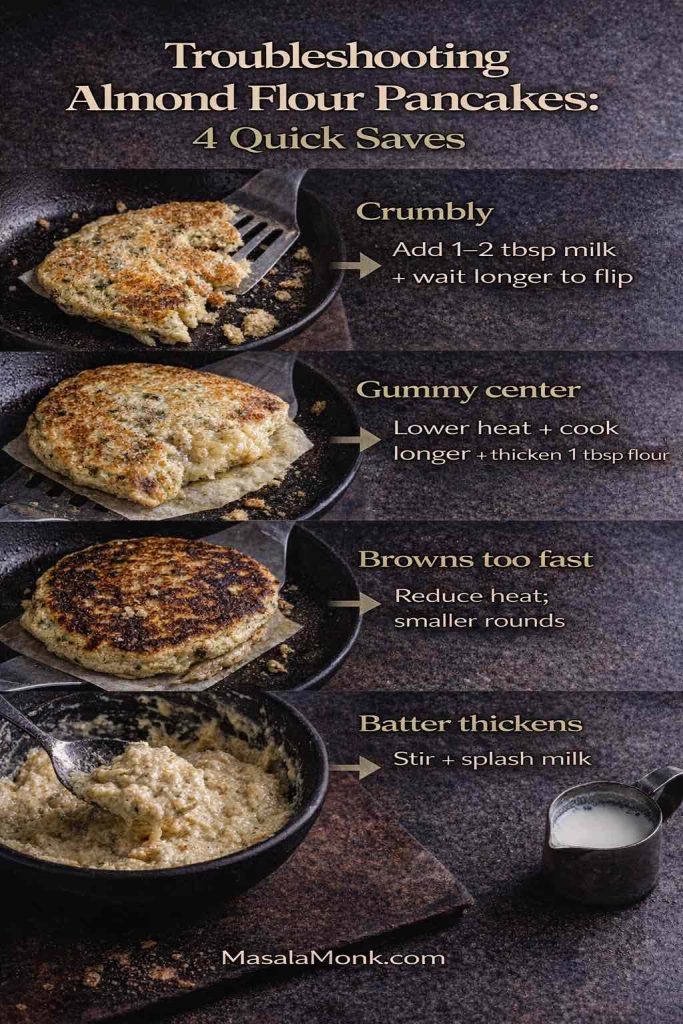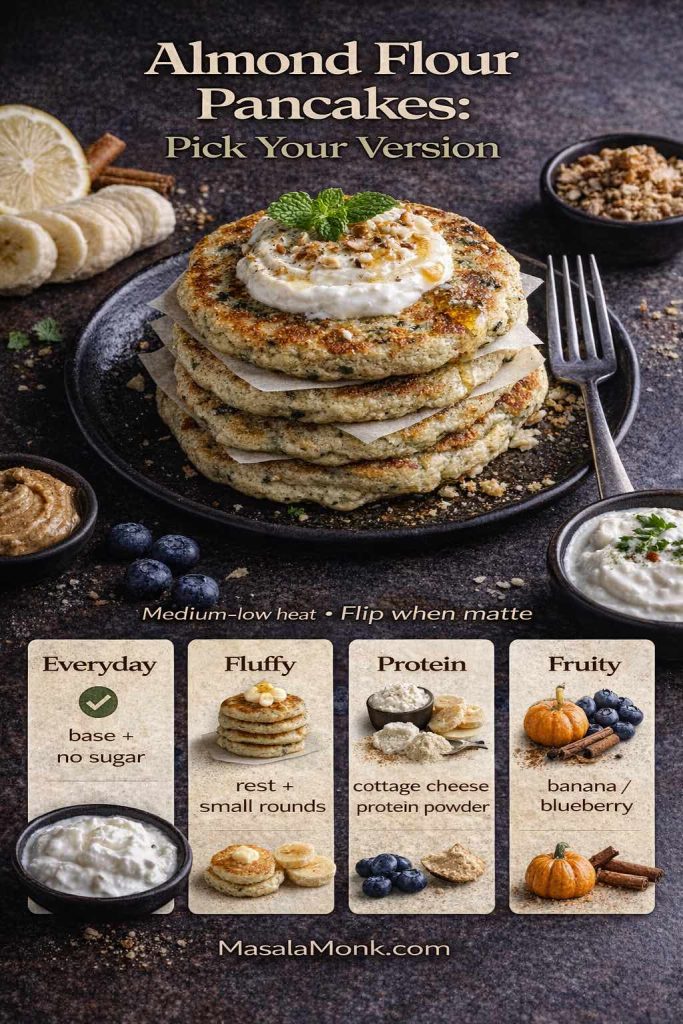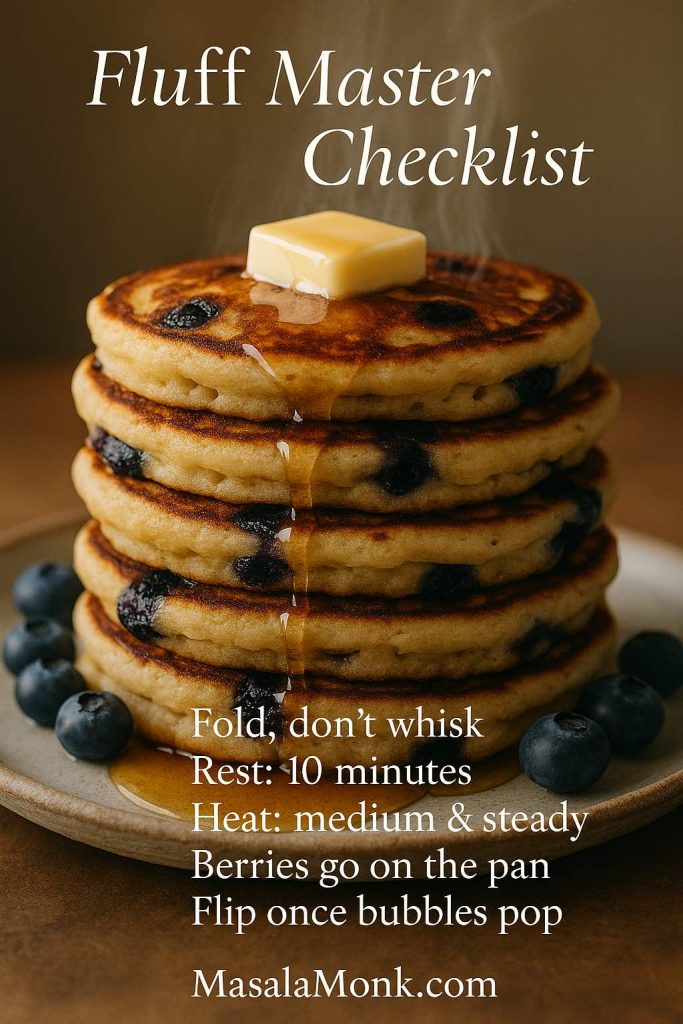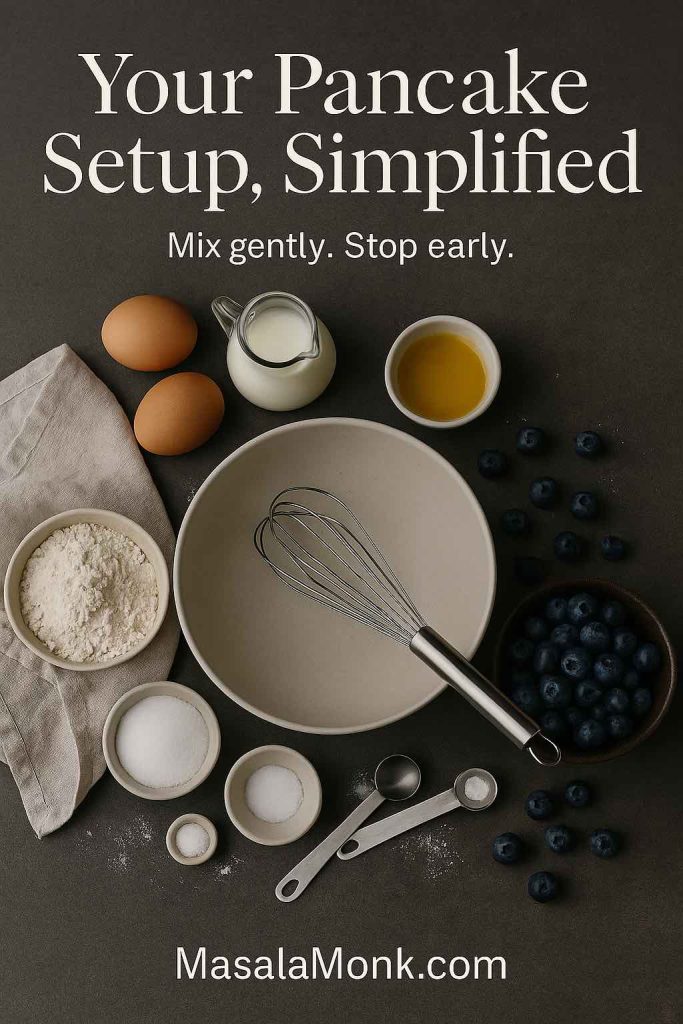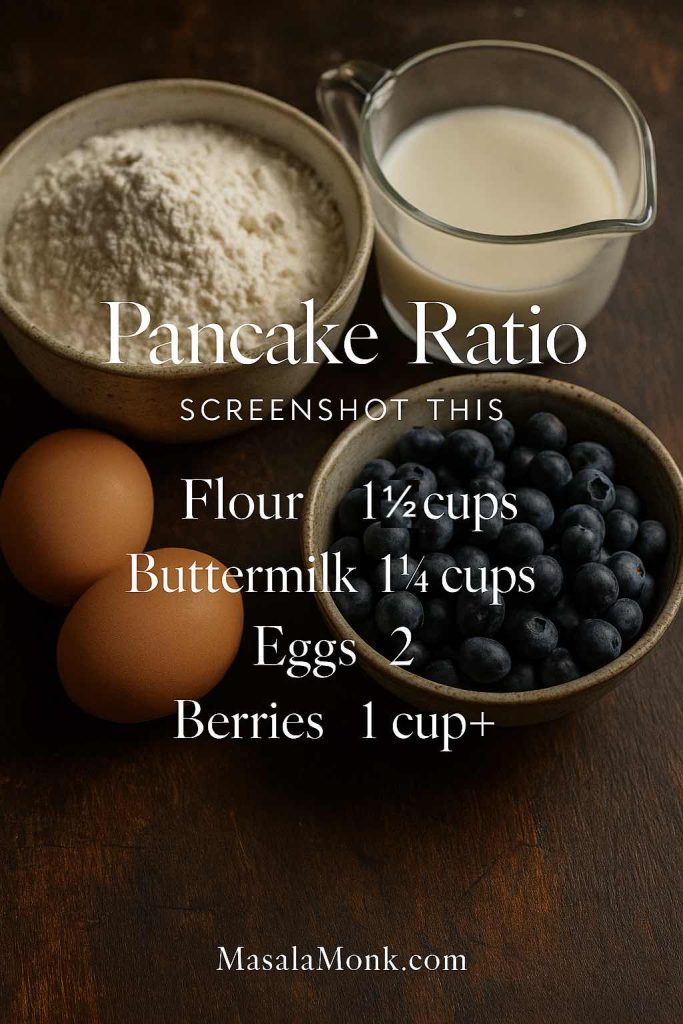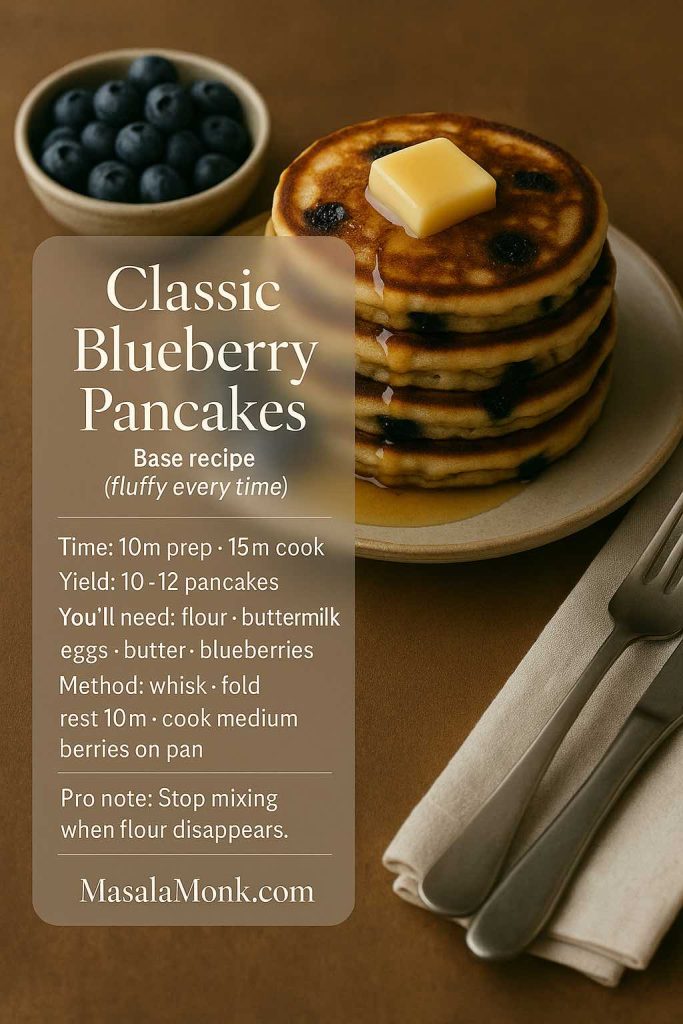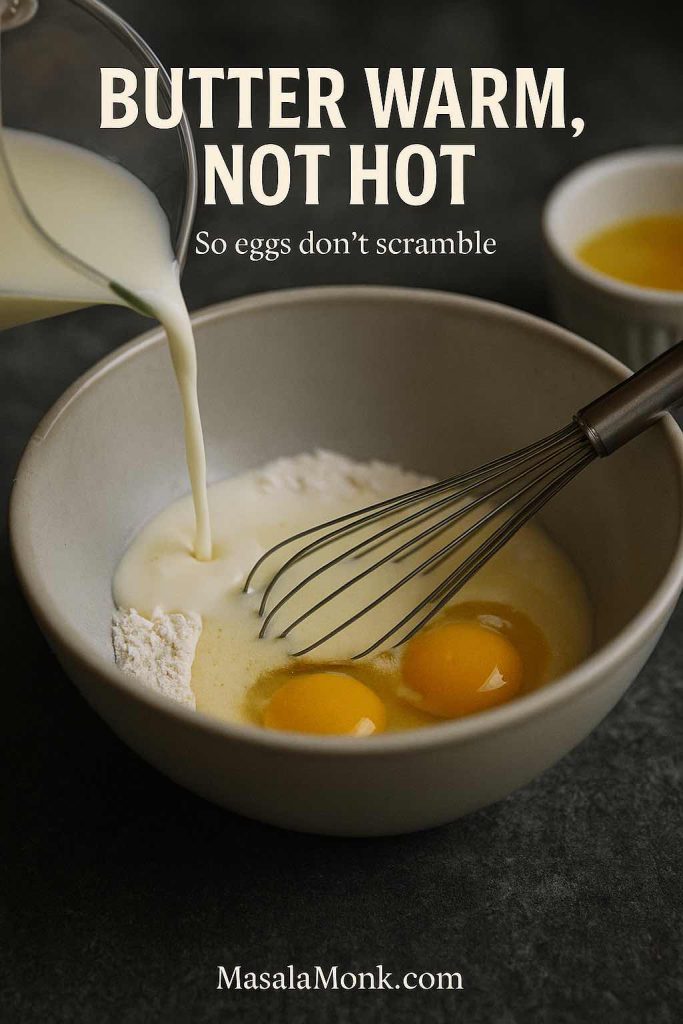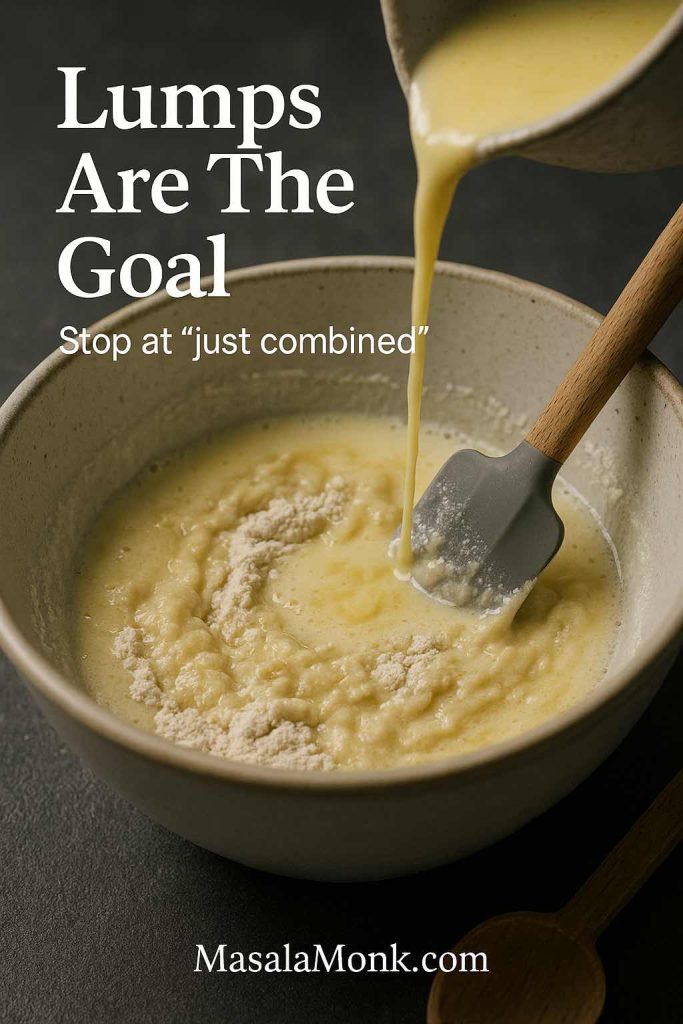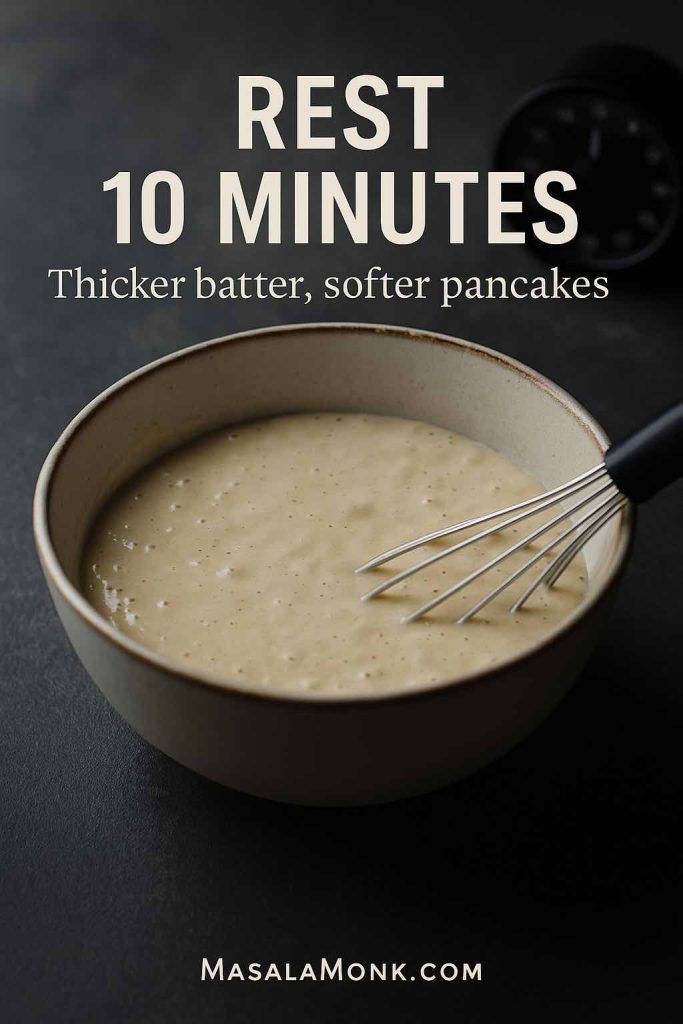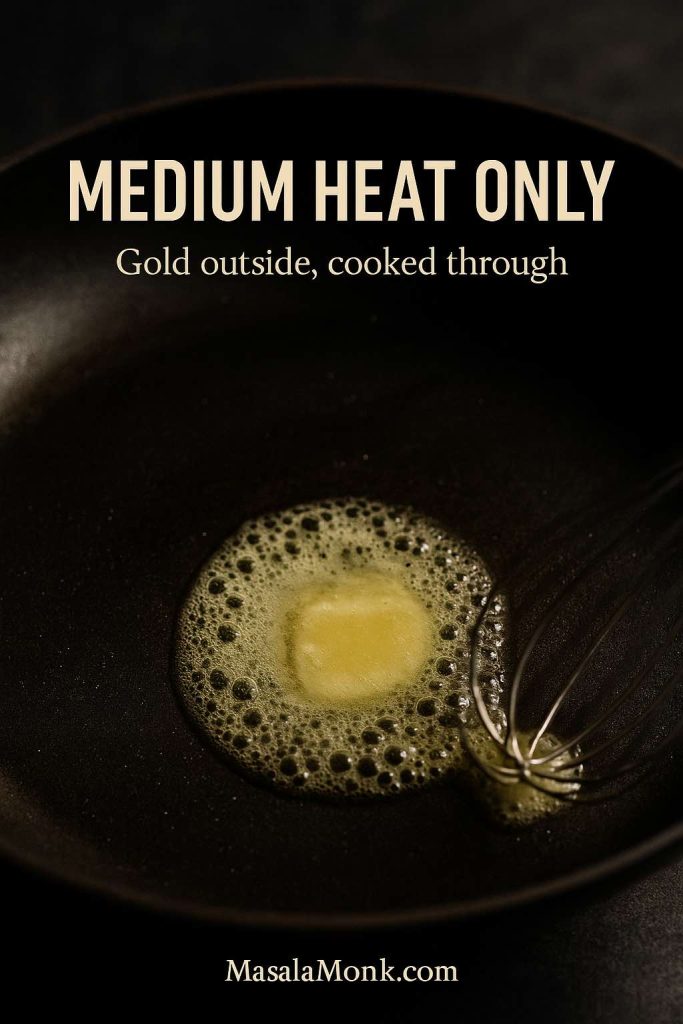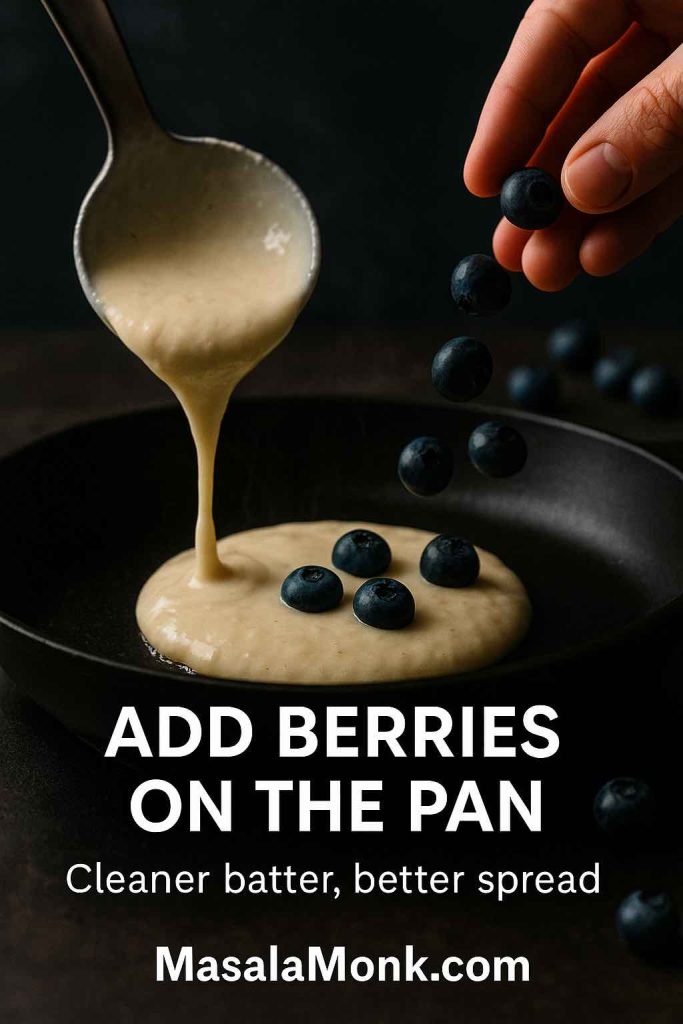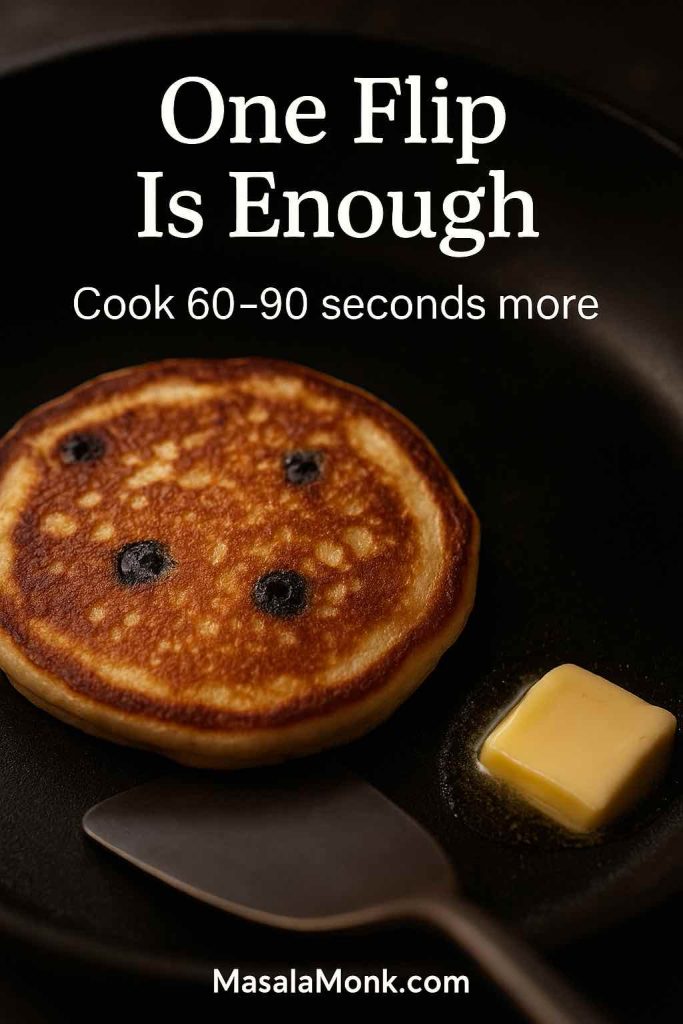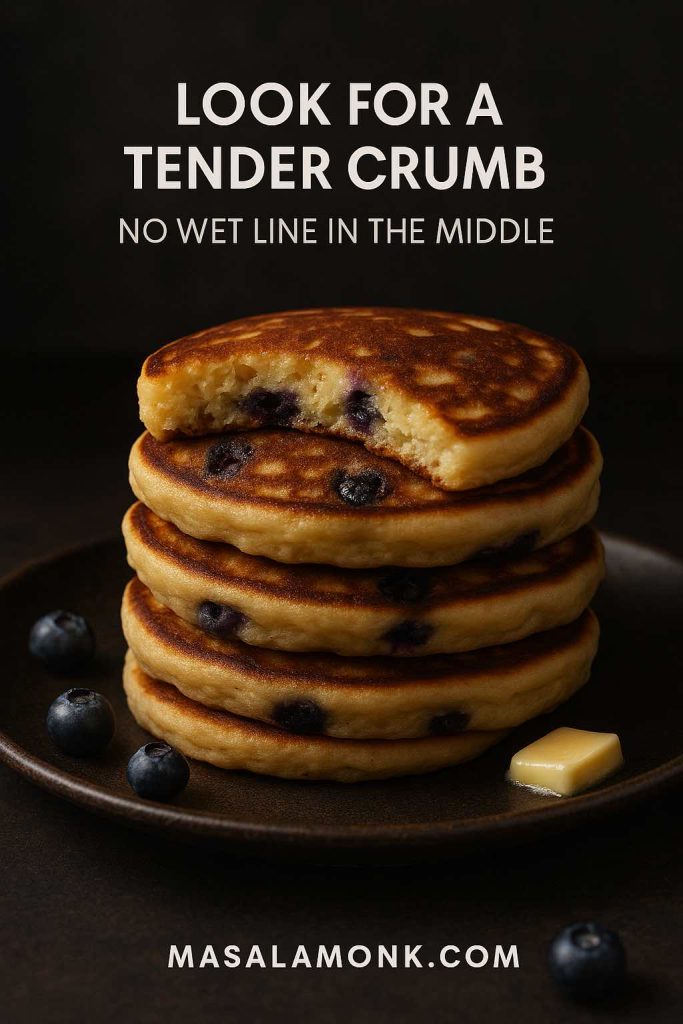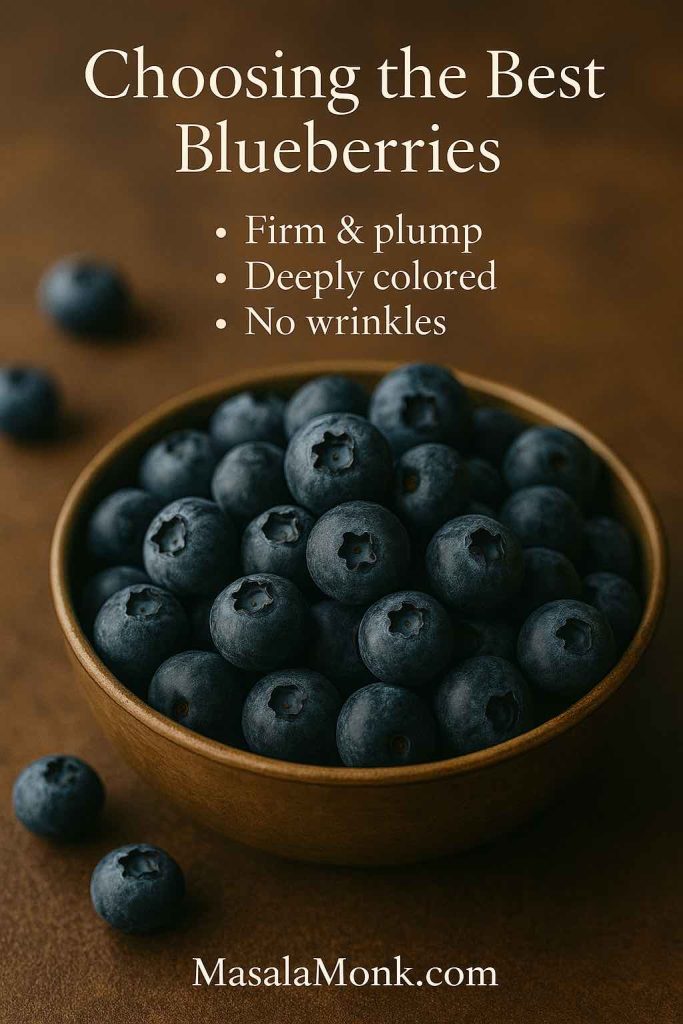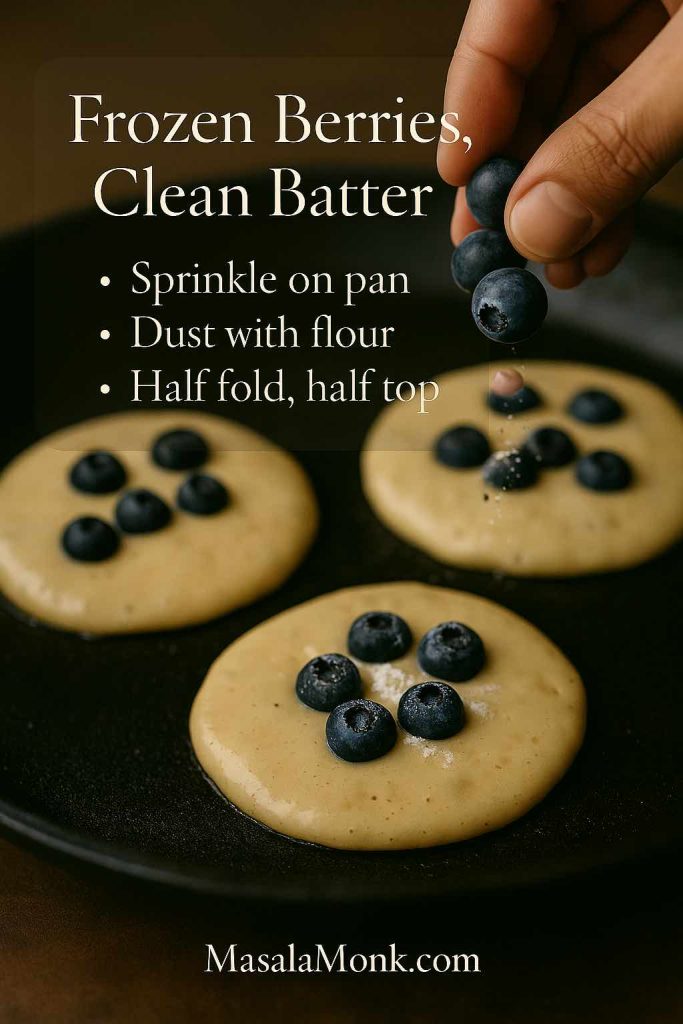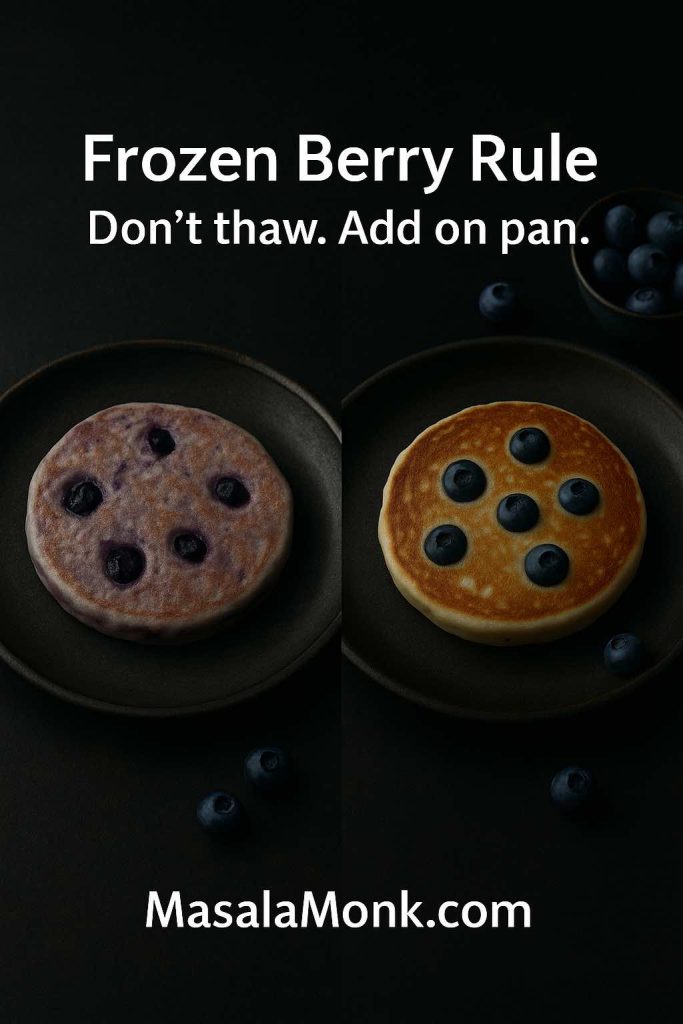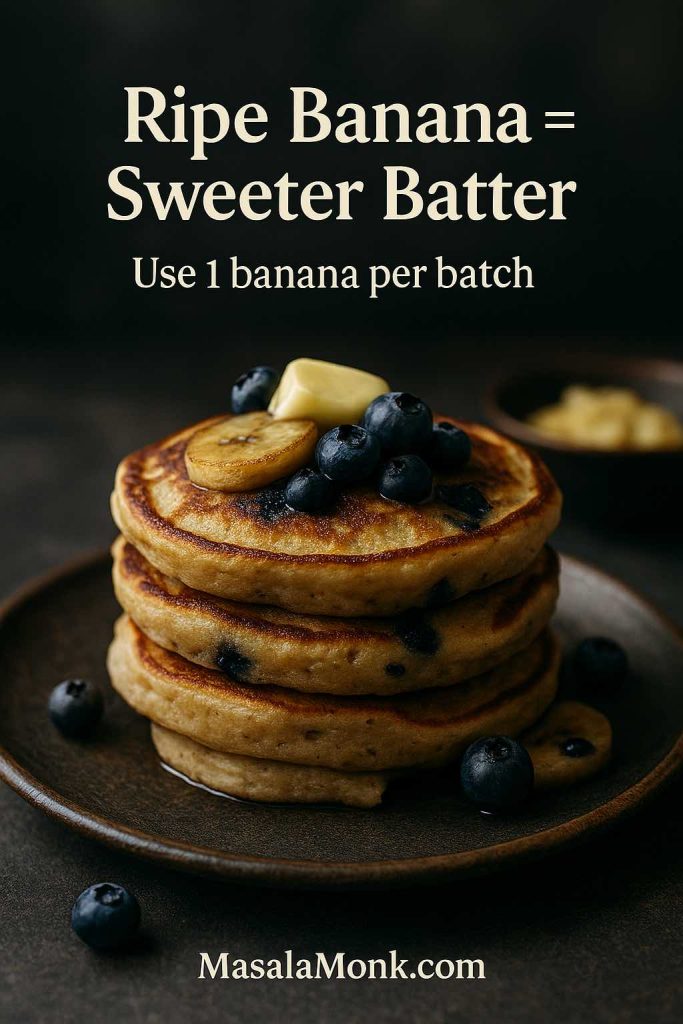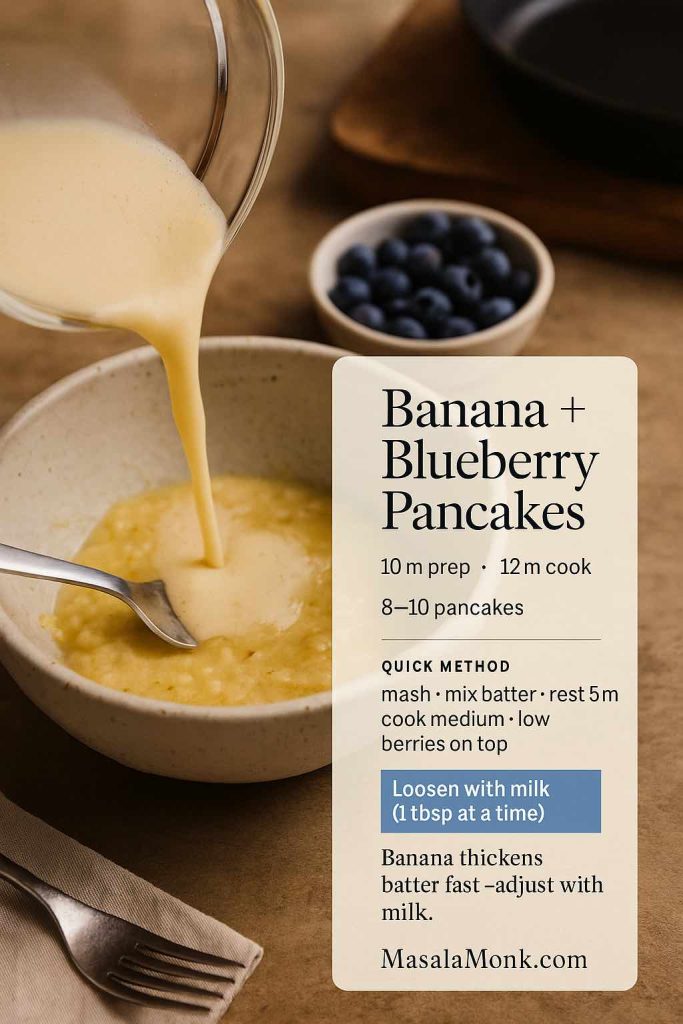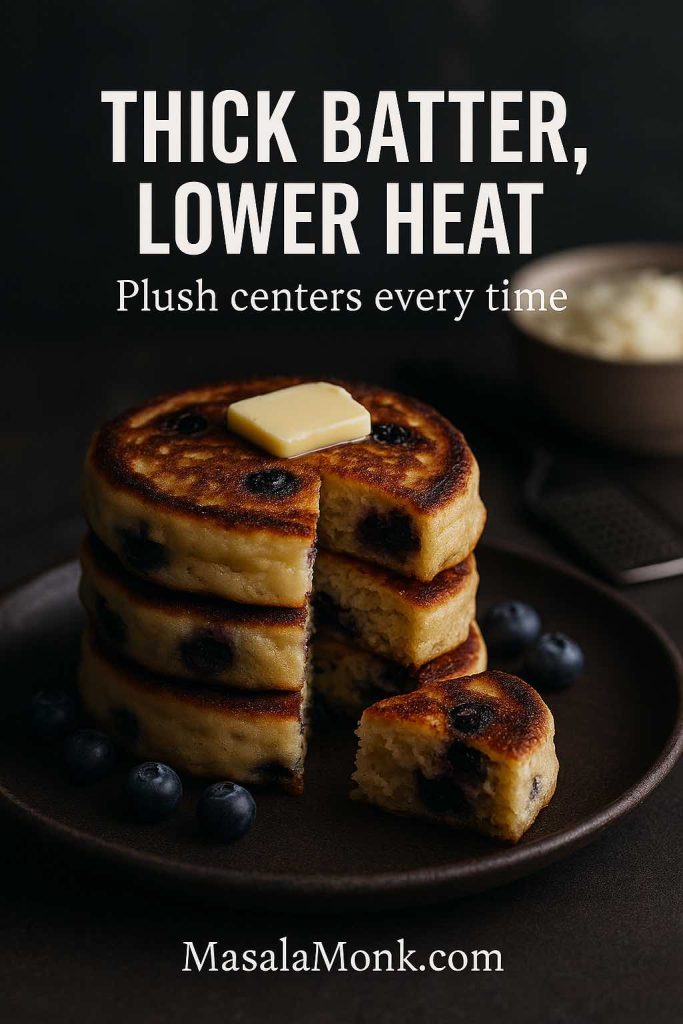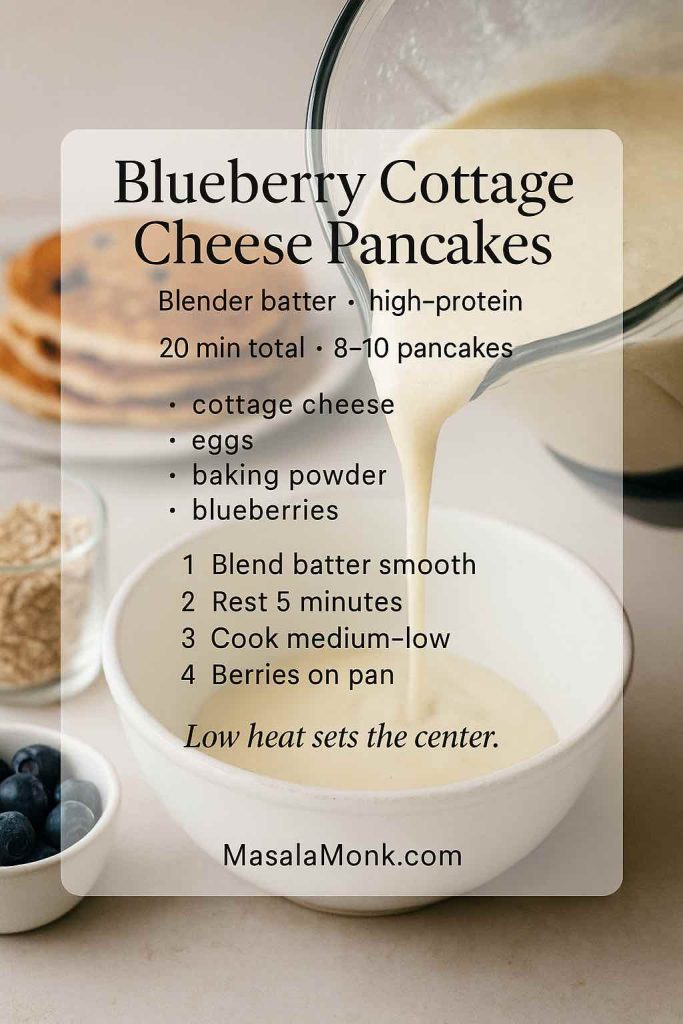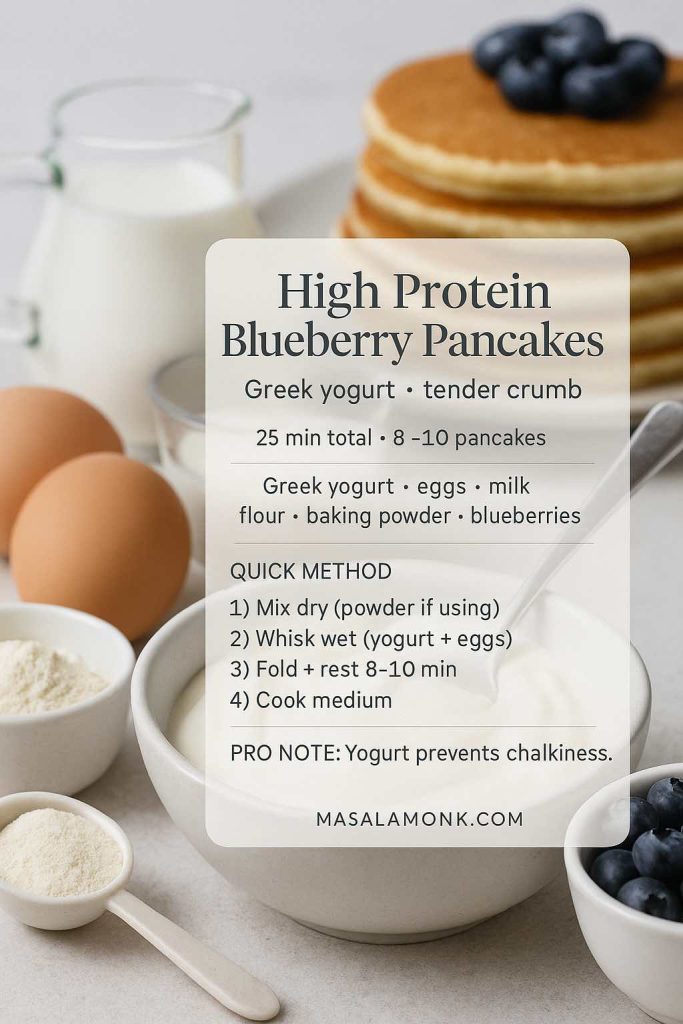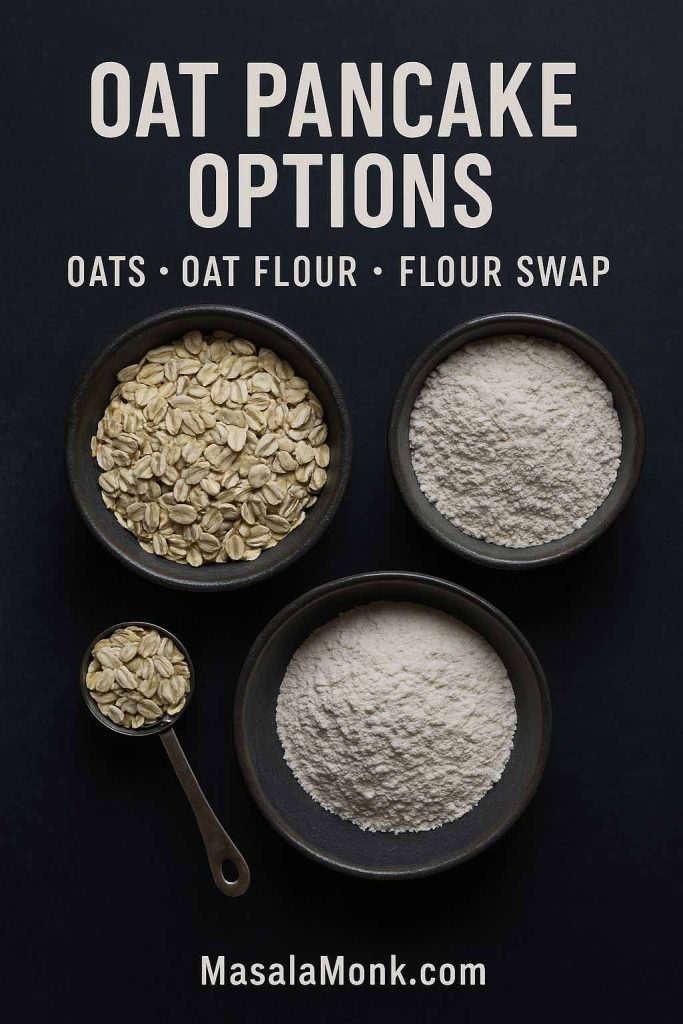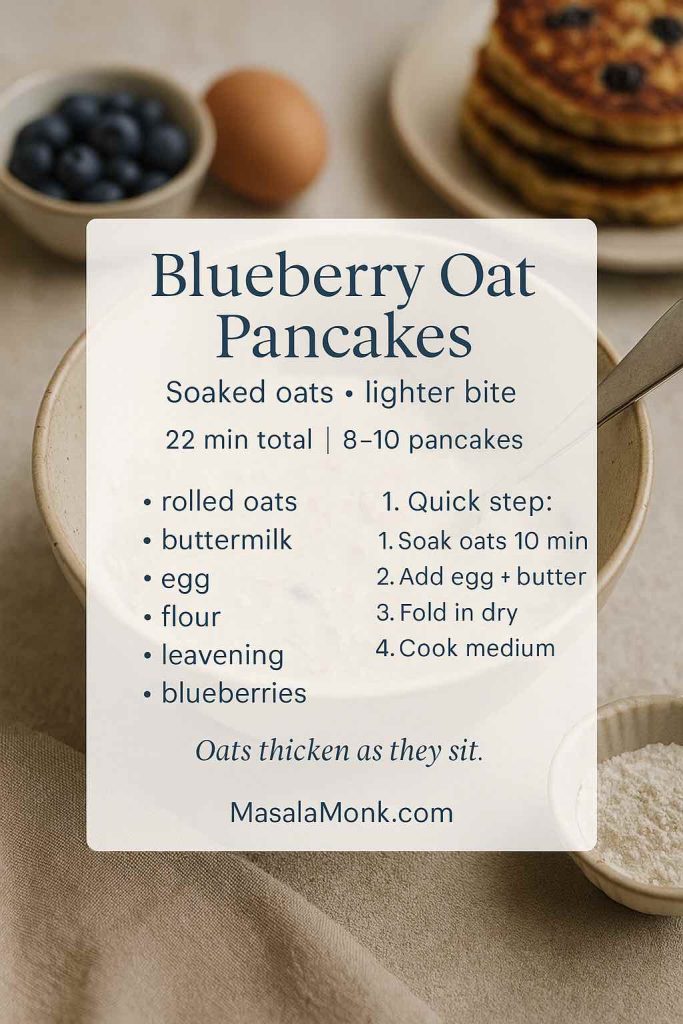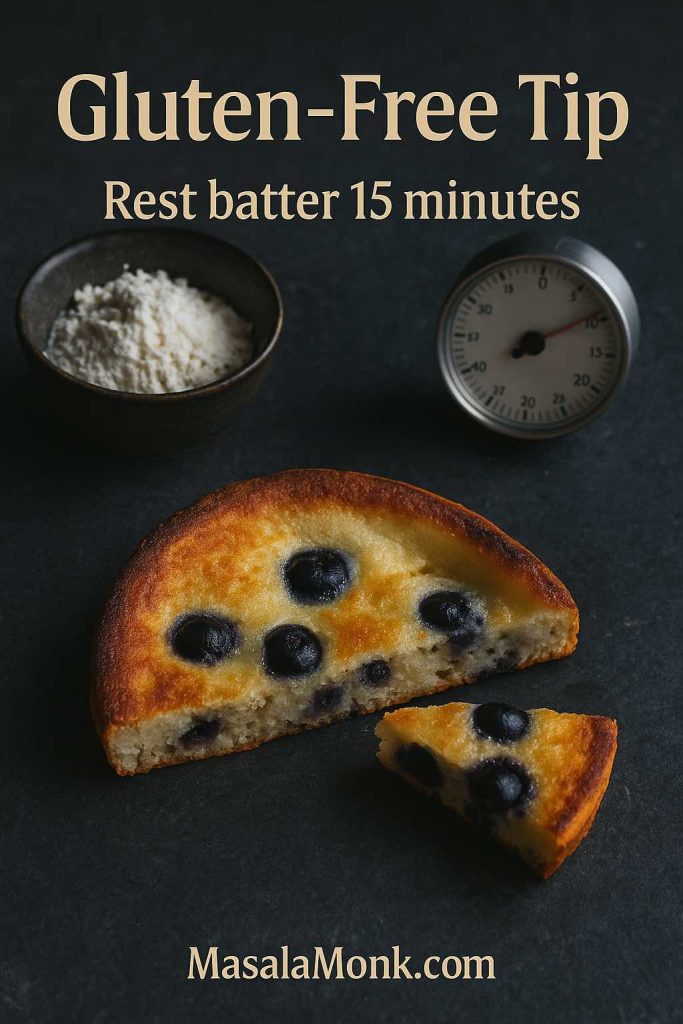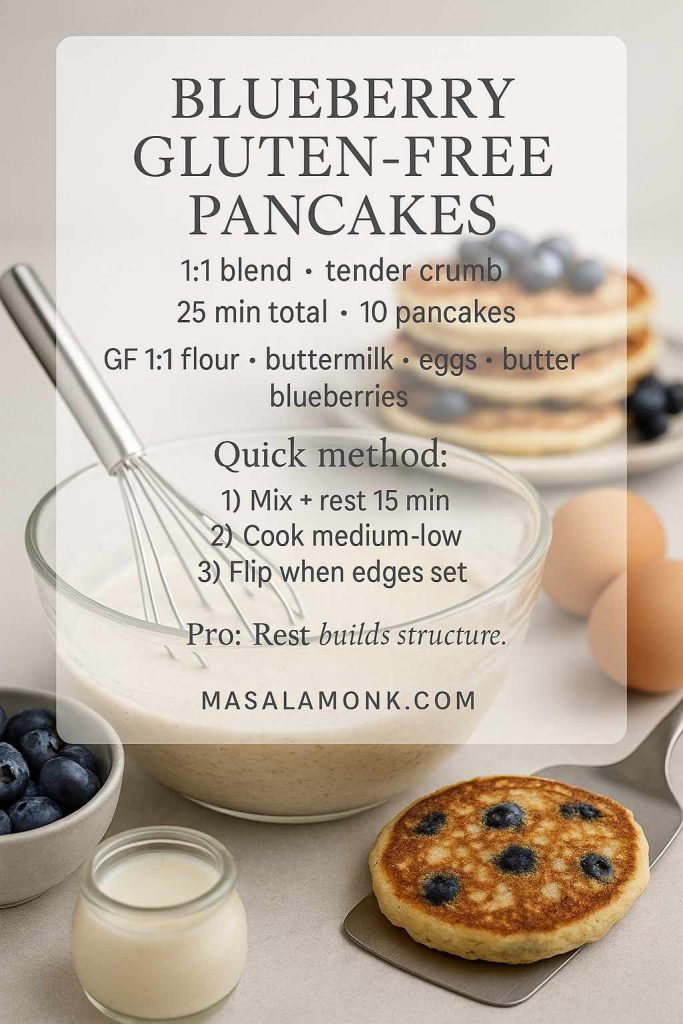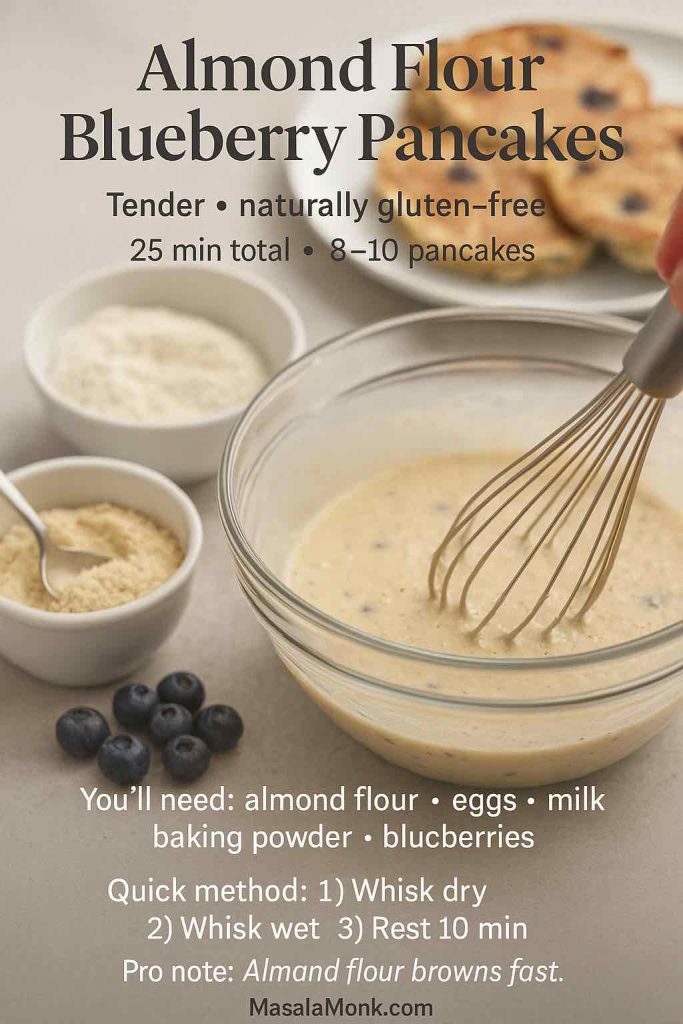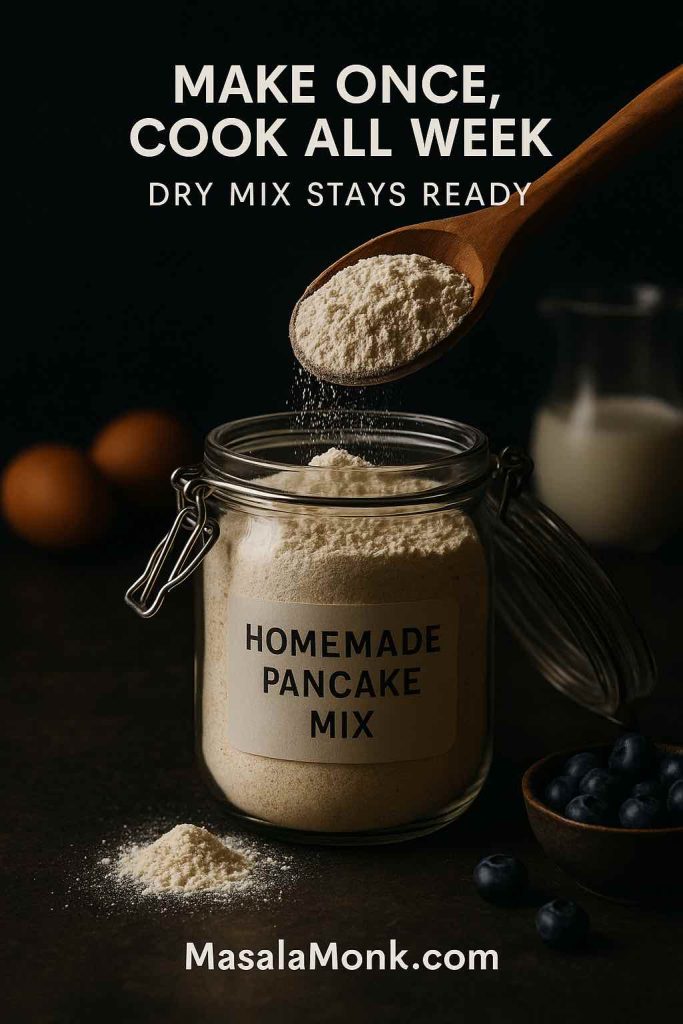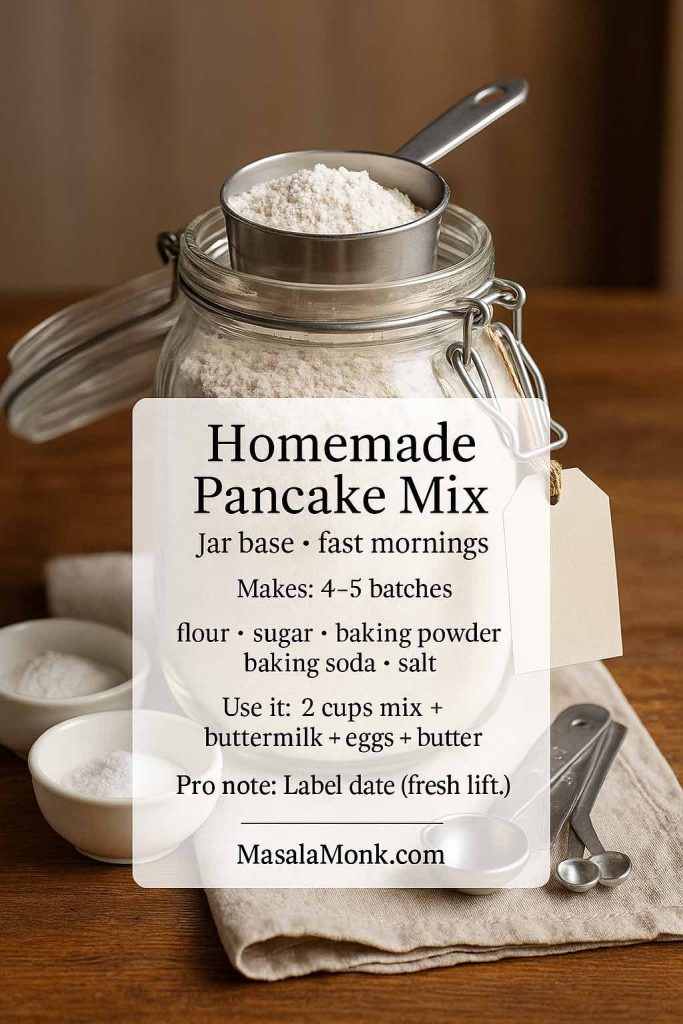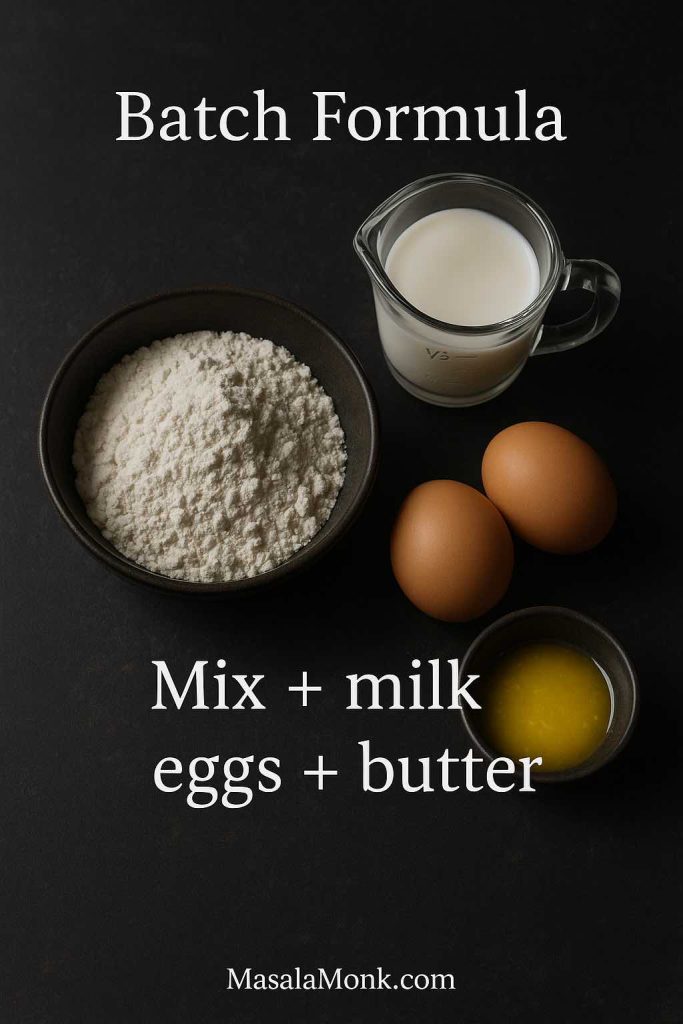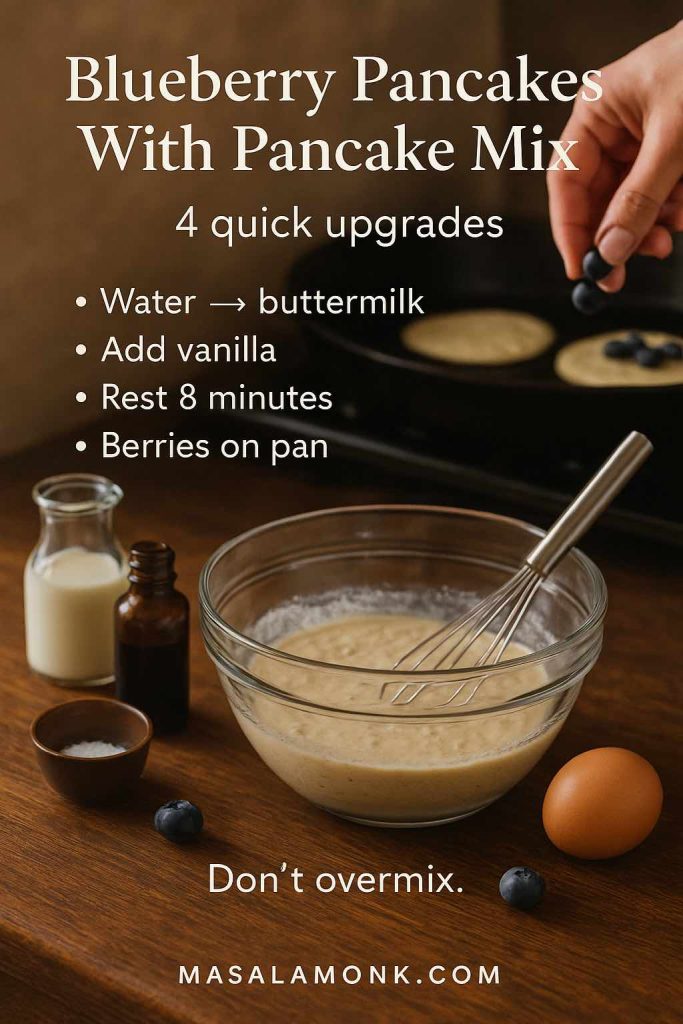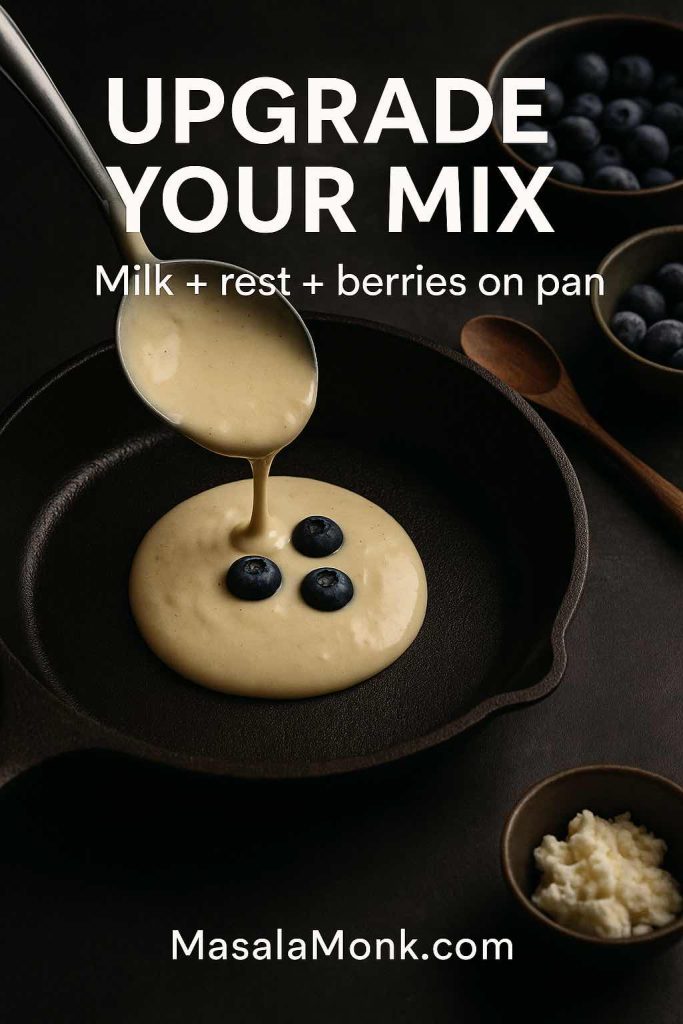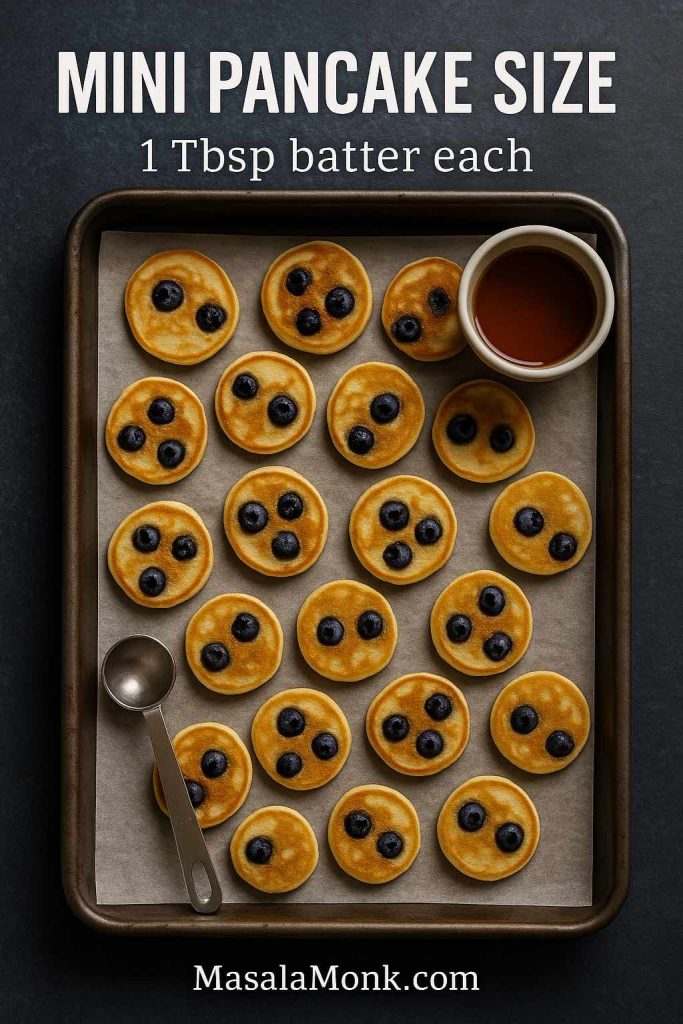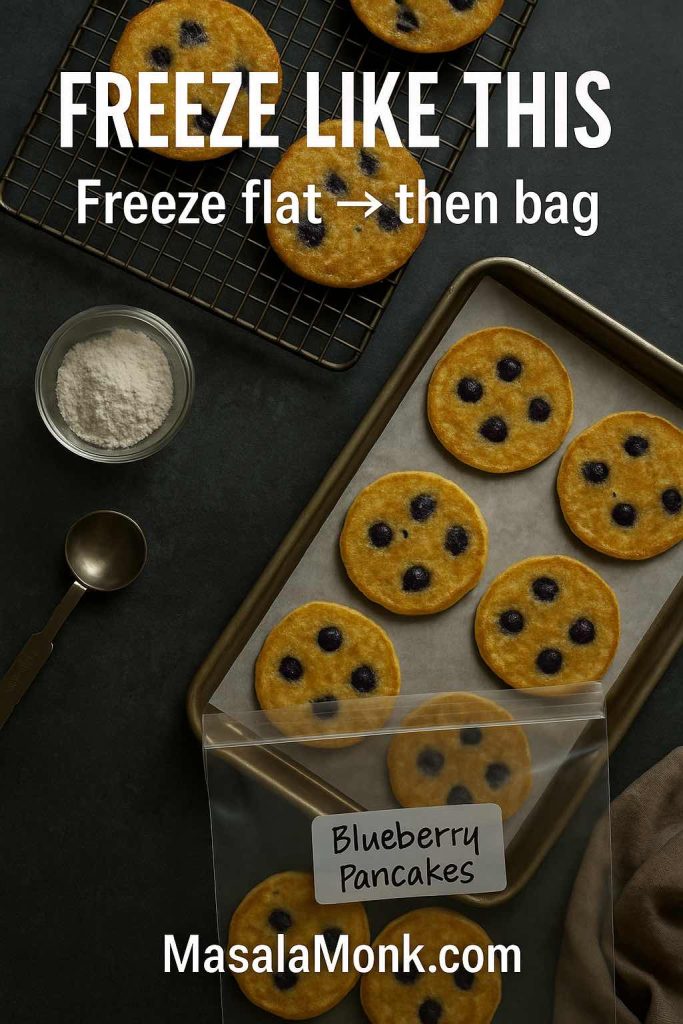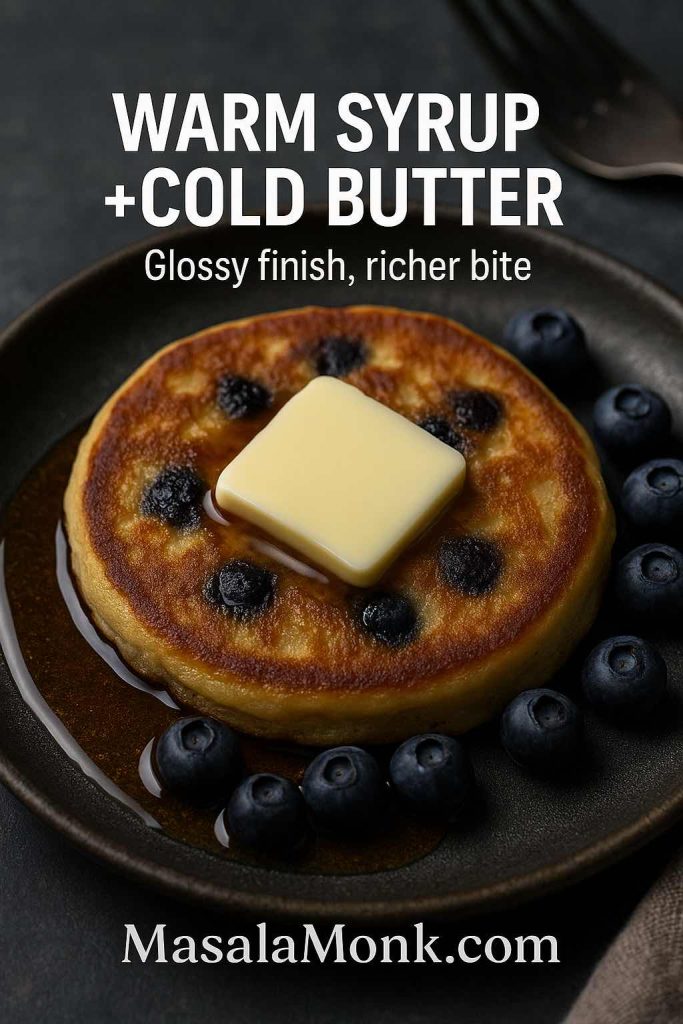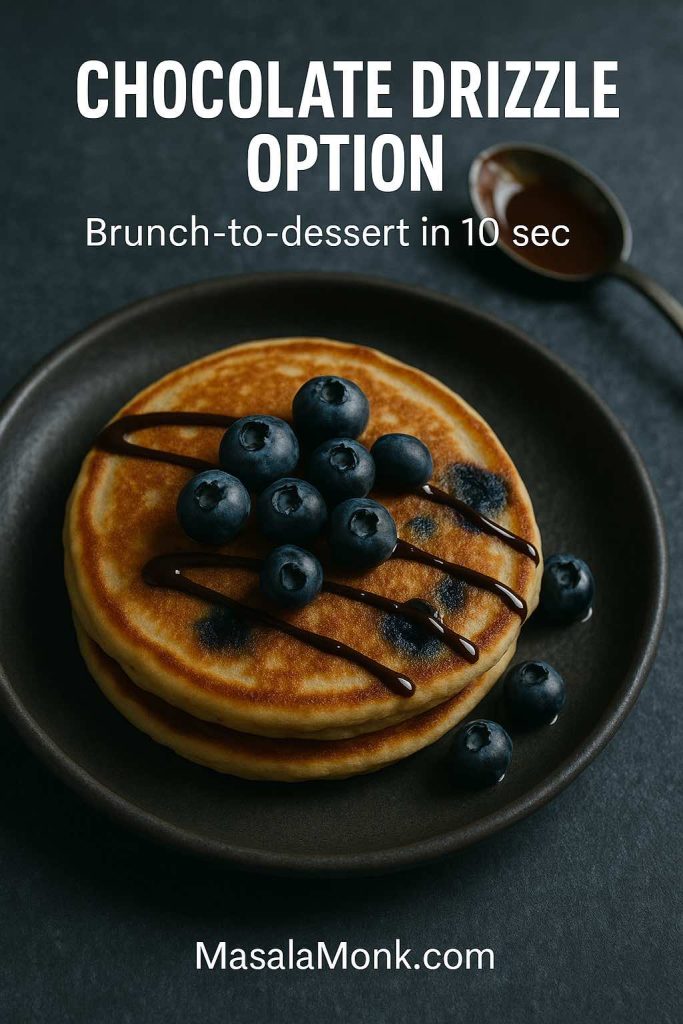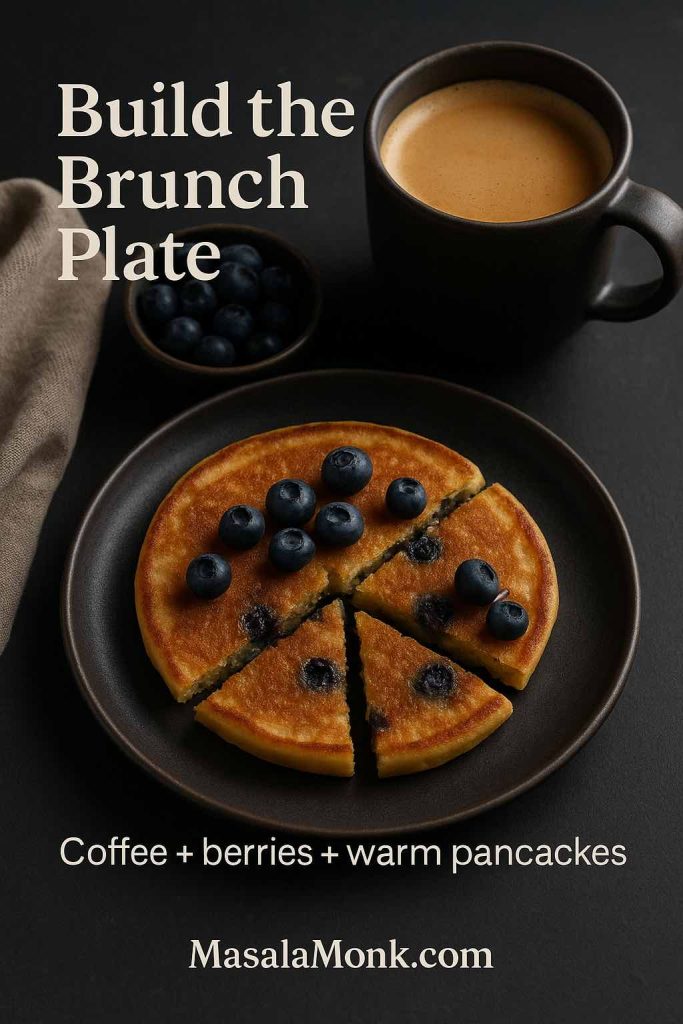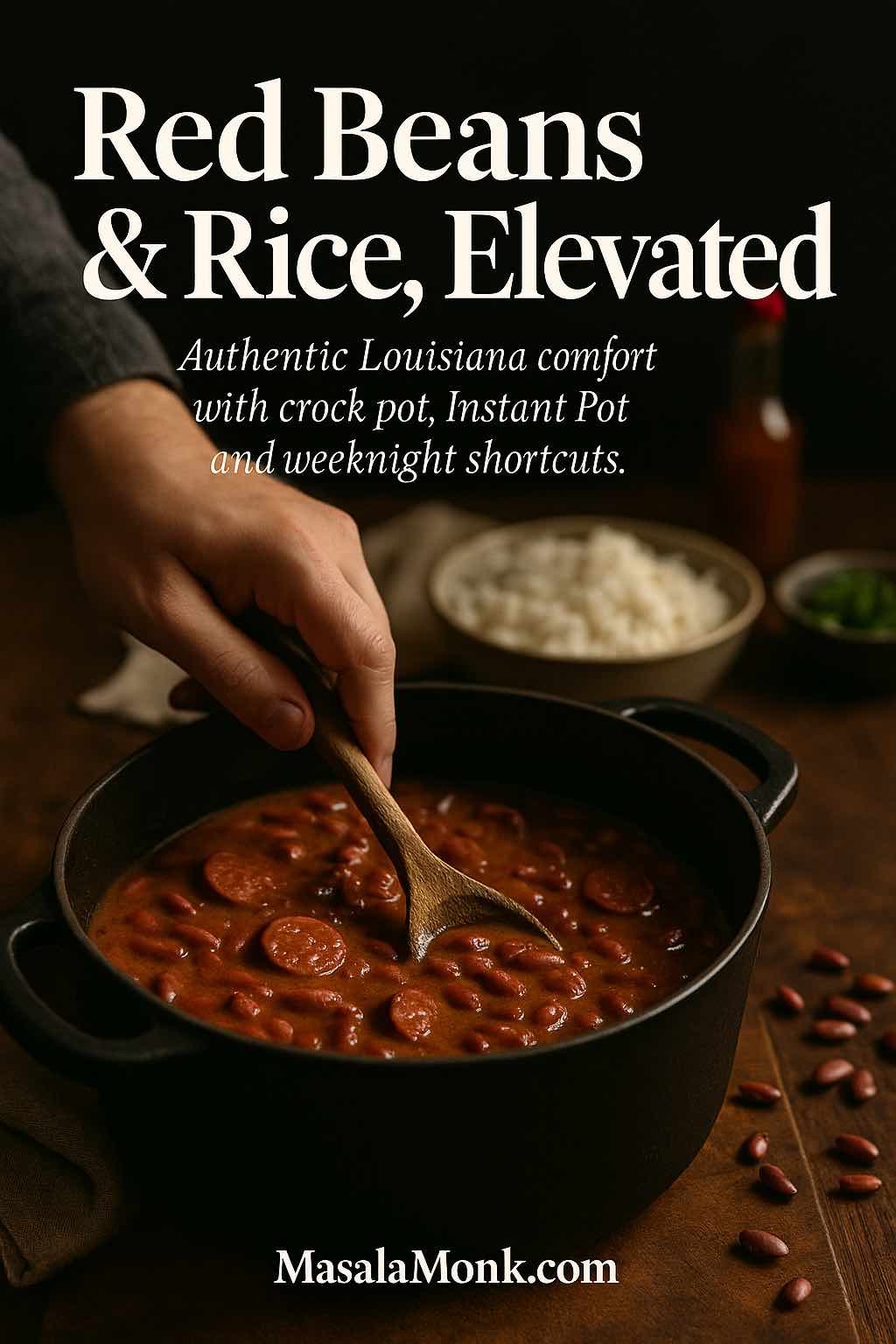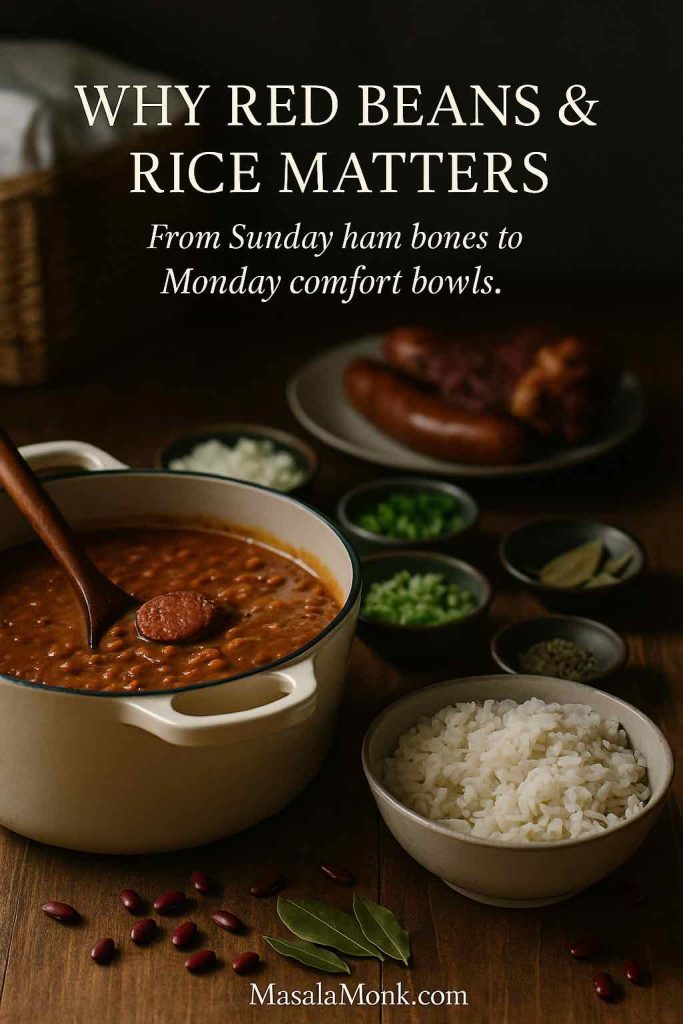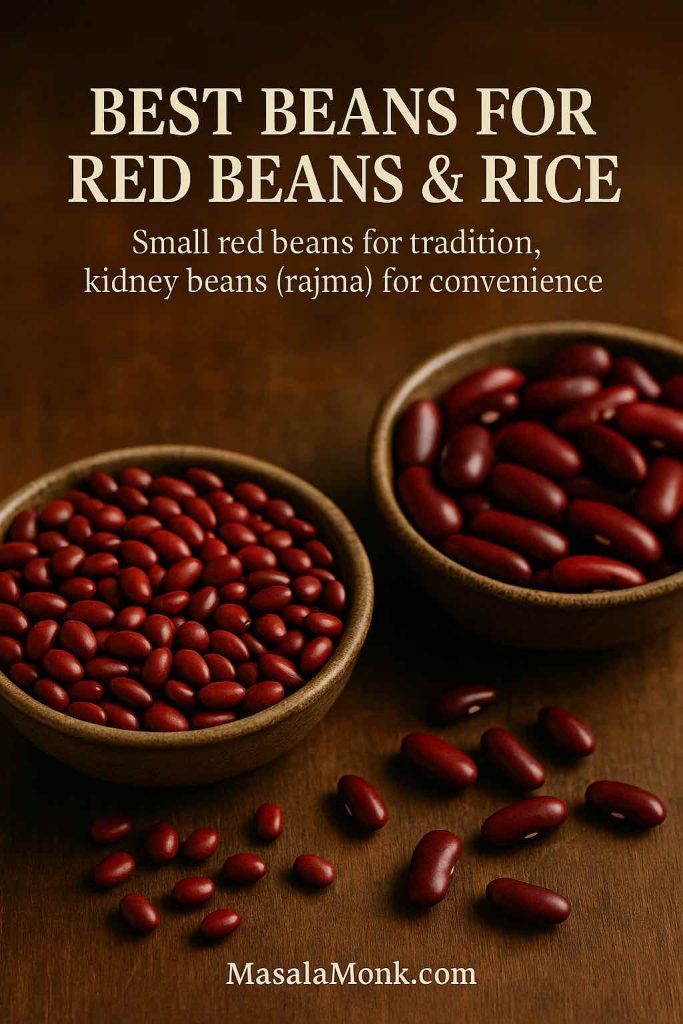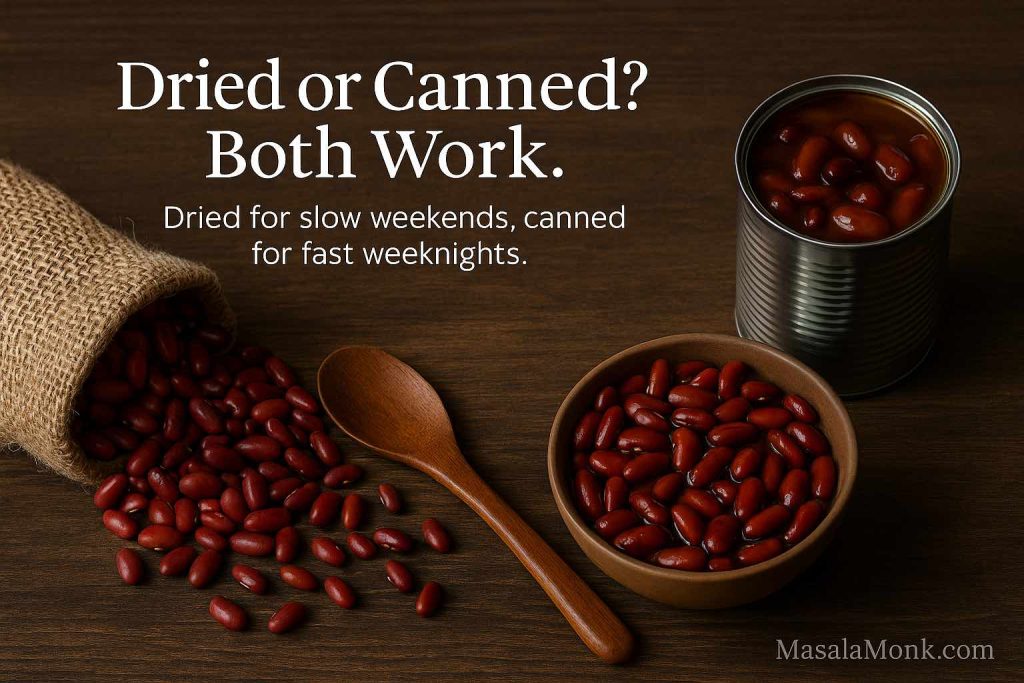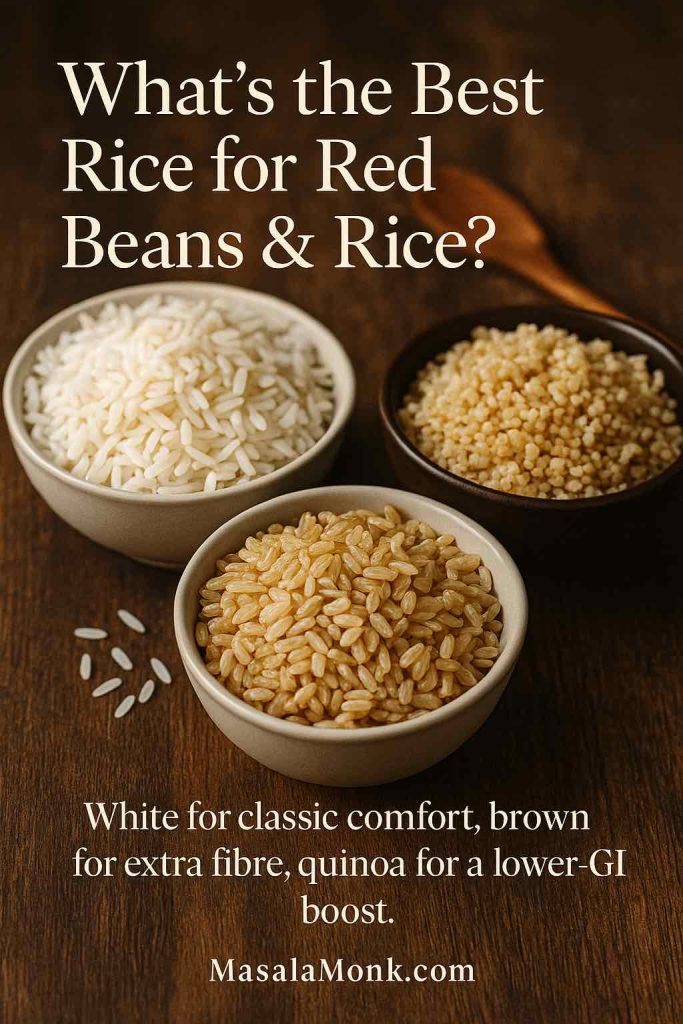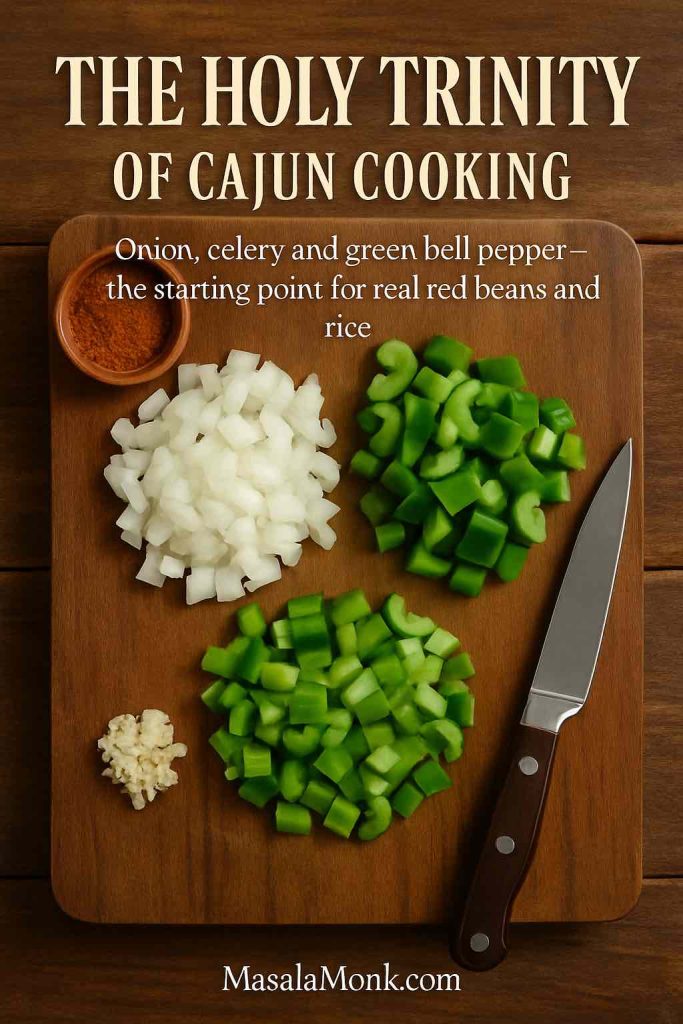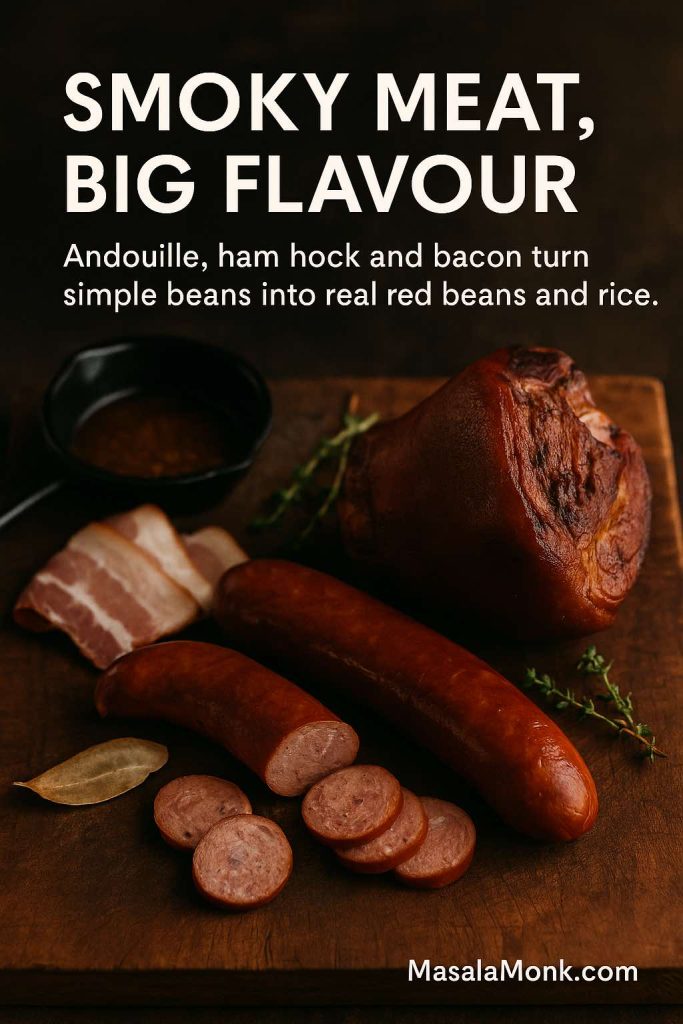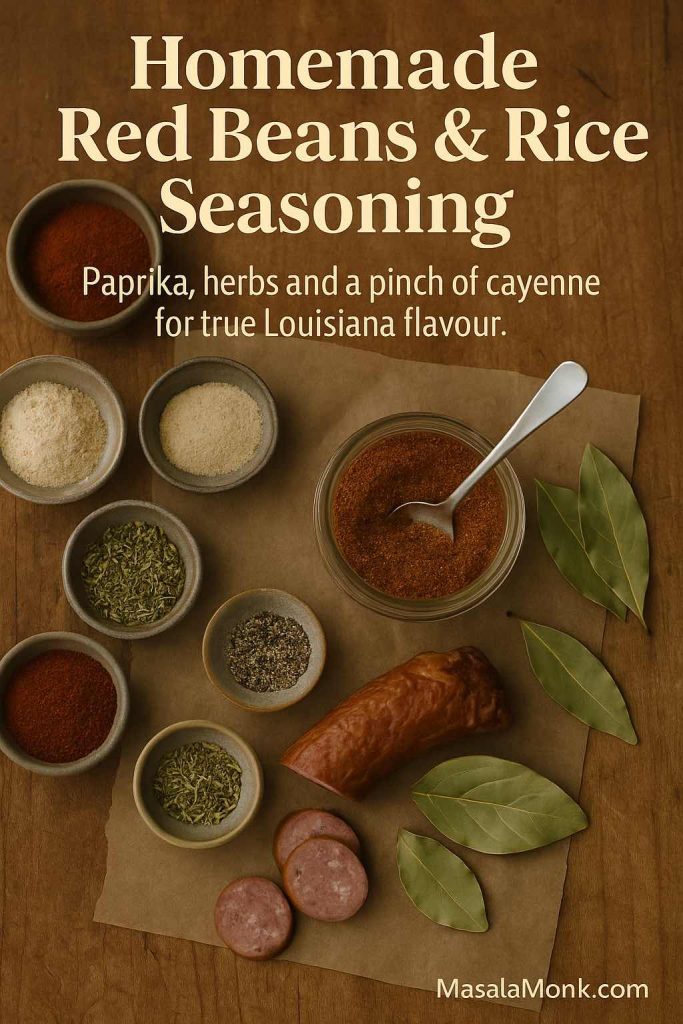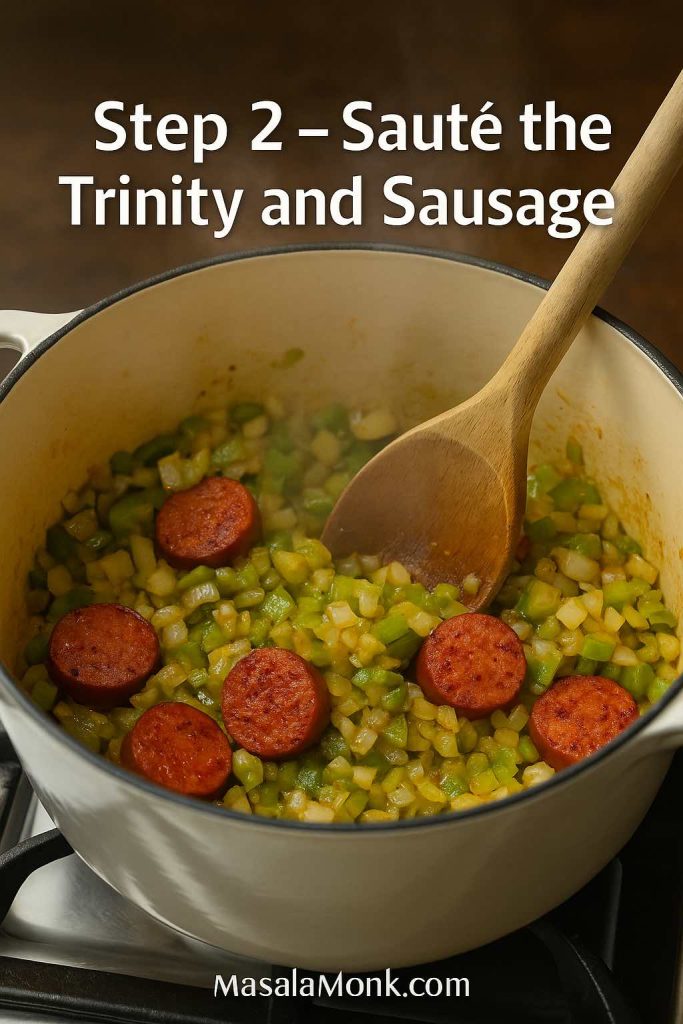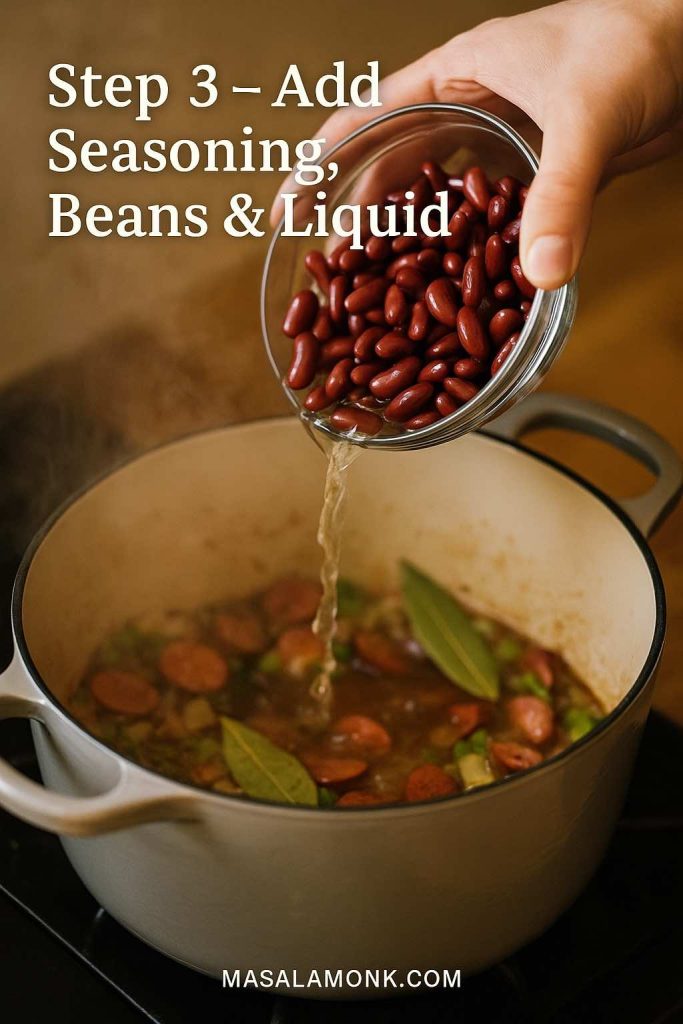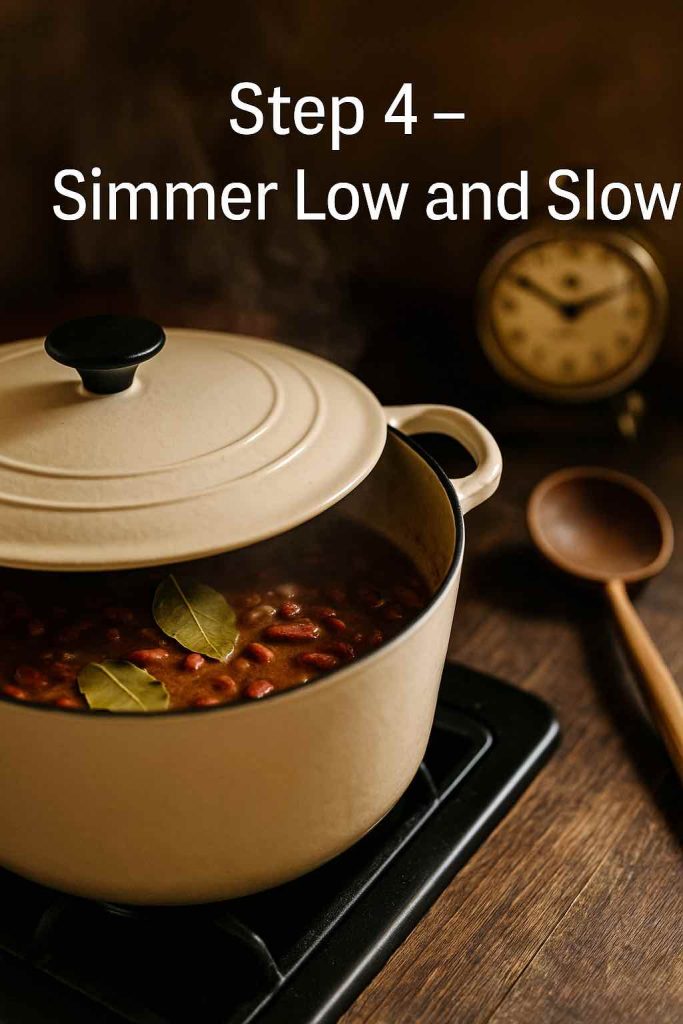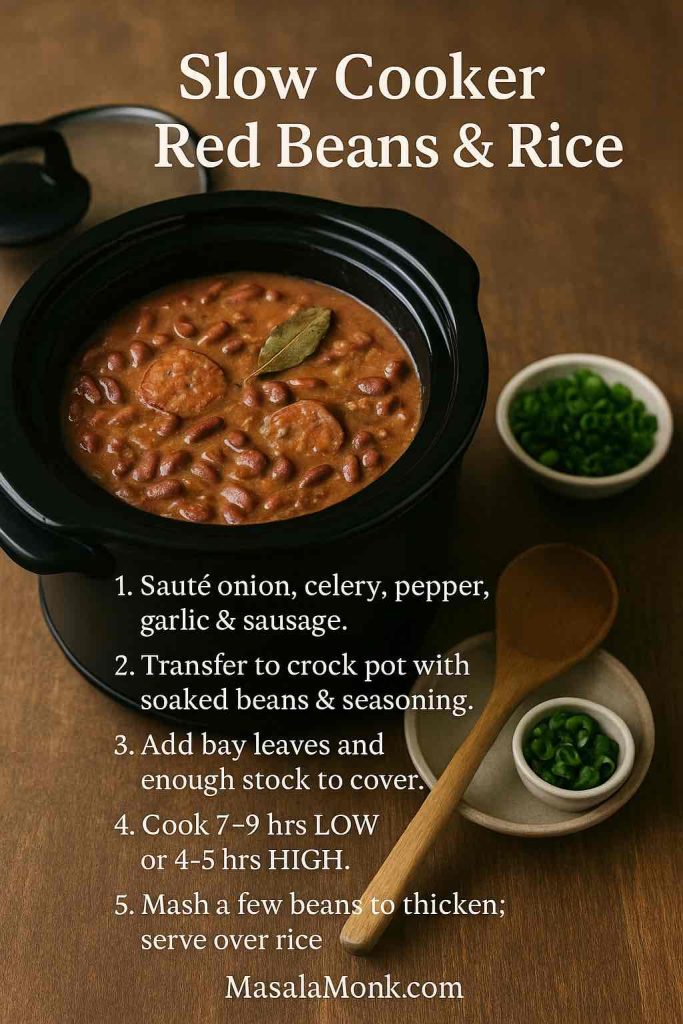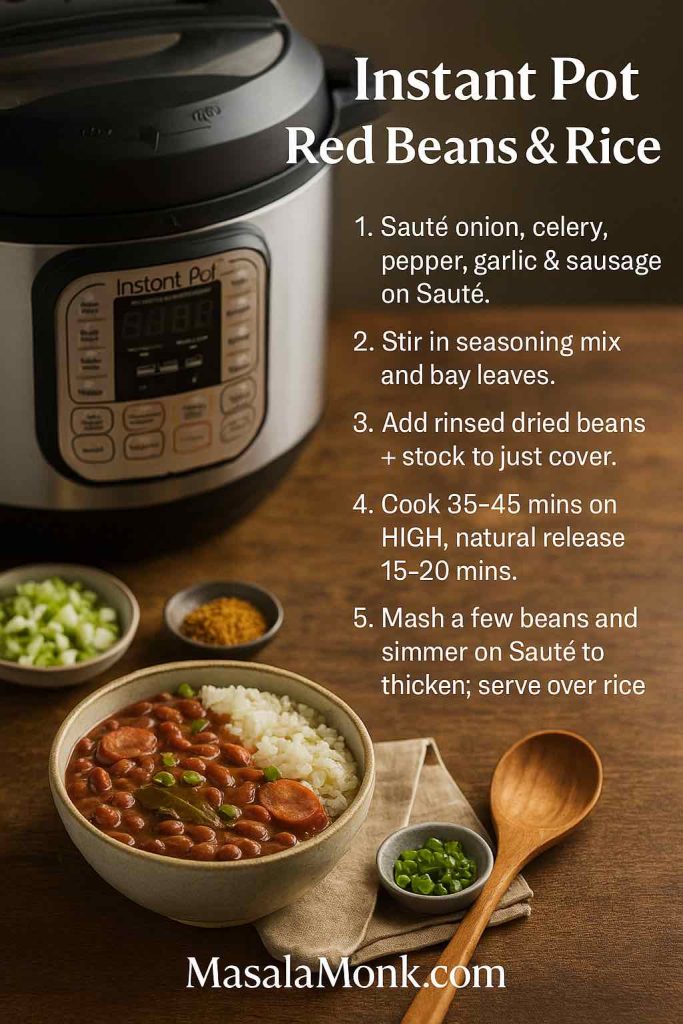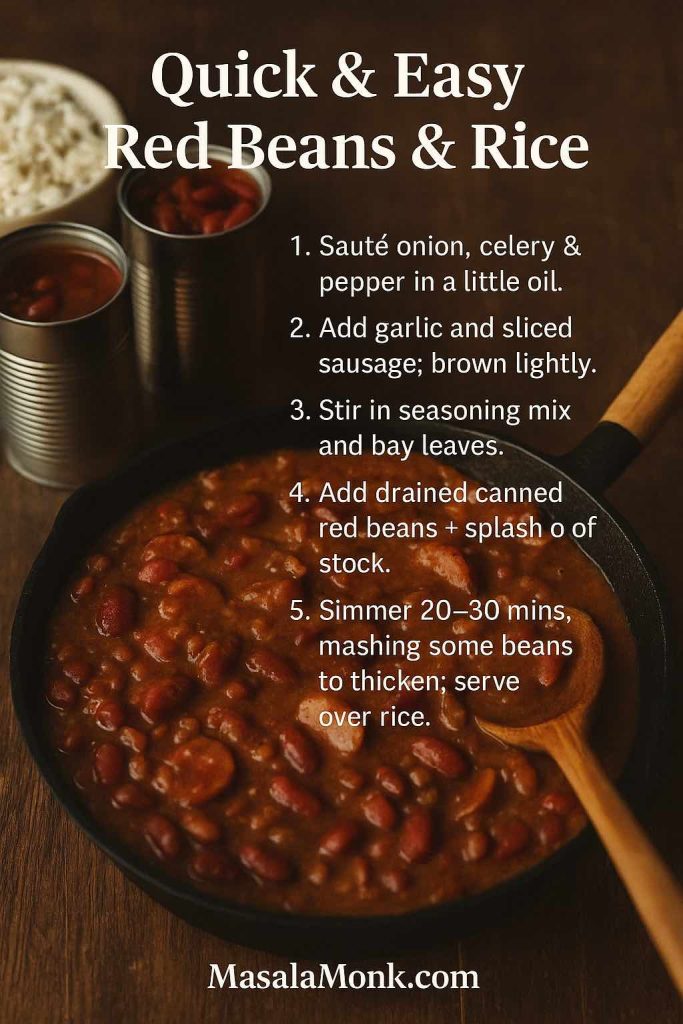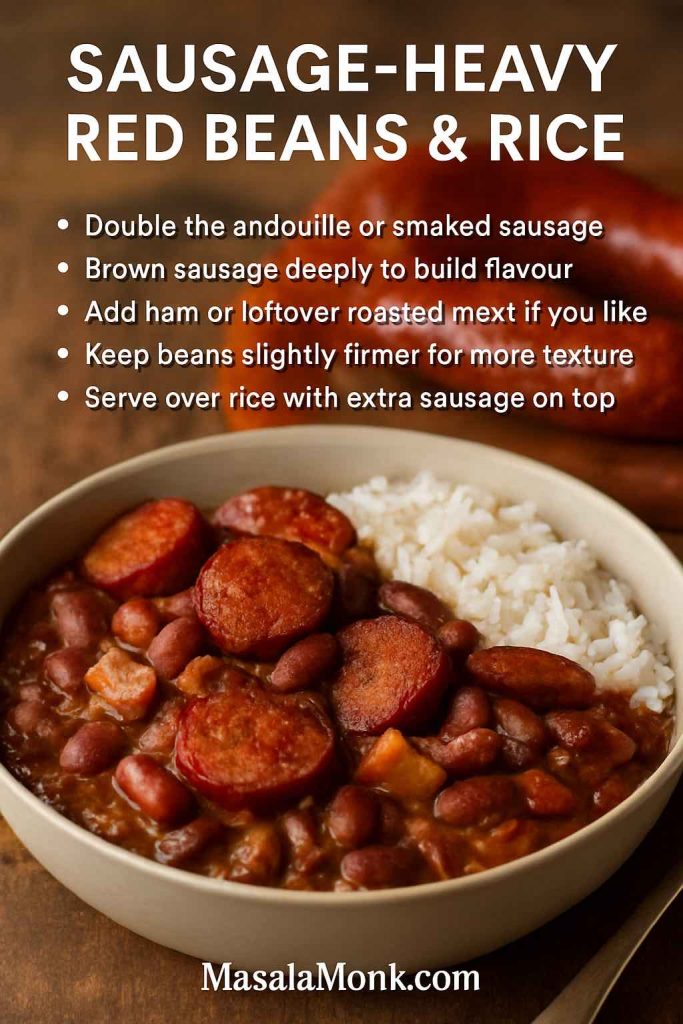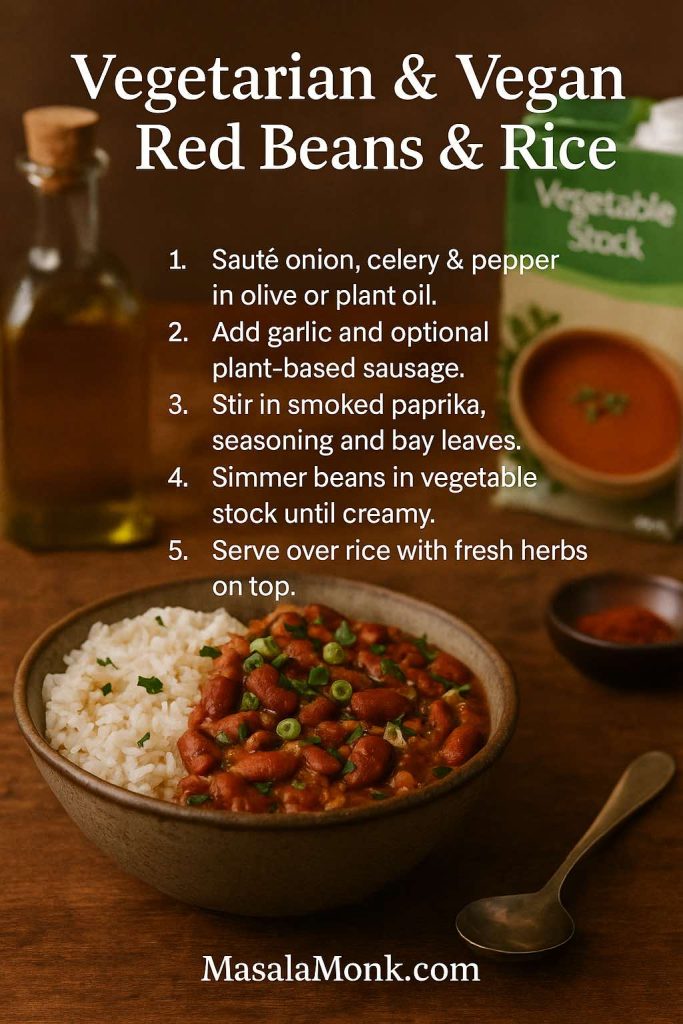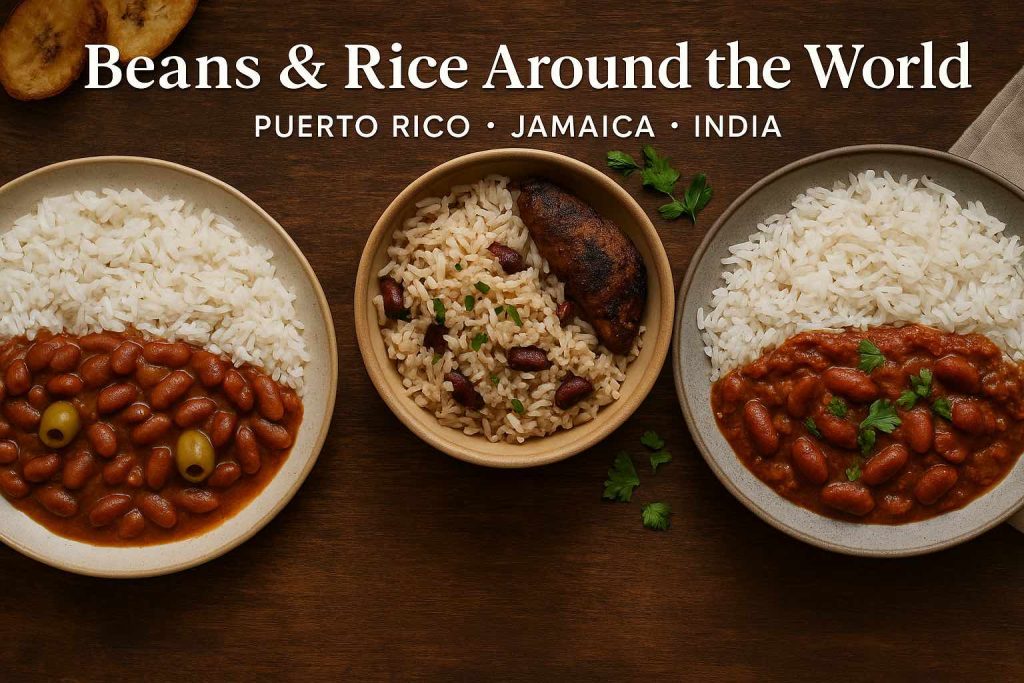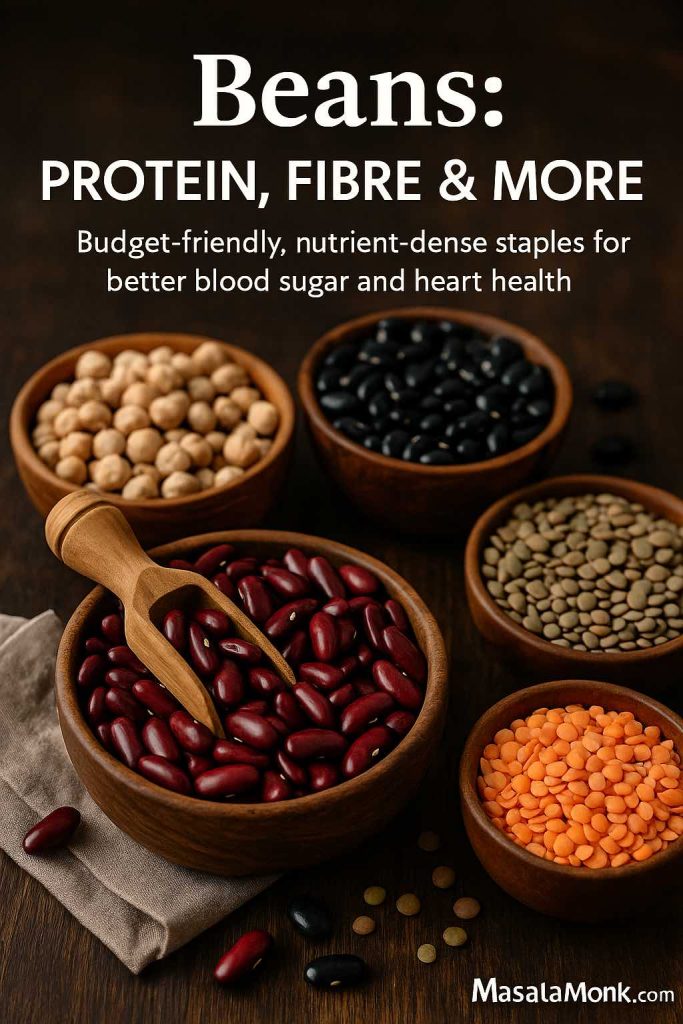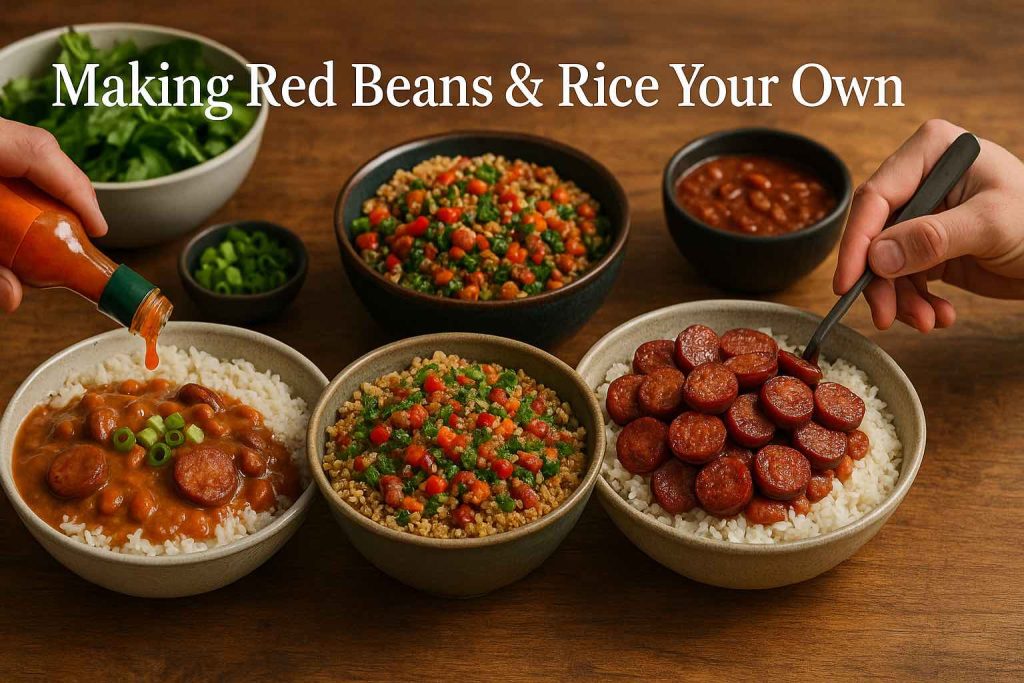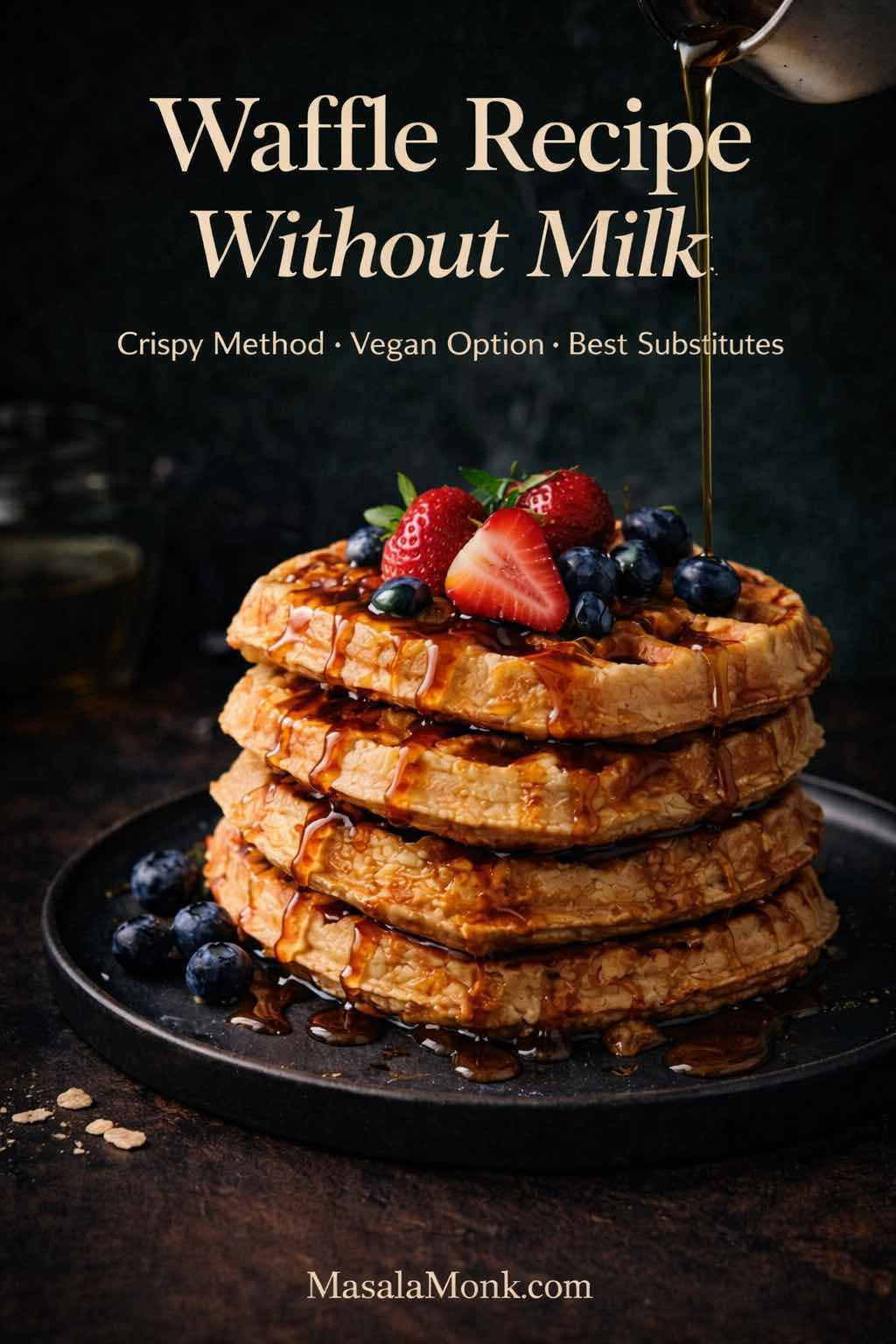
A waffle recipe without milk has a very specific kind of charm when it’s done right: the sound of batter meeting a hot iron, the steam that smells like toasted vanilla, and that first bite where the outside snaps lightly before giving way to a soft, warm center. It’s also the rare kind of breakfast that feels equally perfect on a quiet Tuesday and at a full-on weekend brunch.
Then you open the fridge and realize there’s no milk.
If you’re here because you are looking for a waffle recipe without milk, you’re not alone—and you’re not doomed to second-best waffles. With the right approach, waffles without milk can be indistinguishable from the classic version: crisp edges, airy interior, and that gentle sweetness that makes you reach for another bite even when you promised yourself you wouldn’t.
This post gives you one dependable no milk waffle recipe, and then shows you how to stretch it into multiple directions without losing the waffle magic. You’ll learn how to make waffles without milk using common substitutes (including water), how to keep a crunchy waffle texture even when you’re cooking in batches, how to handle waffle mix without milk if you’re starting with a box, and how to adapt your waffle batter without milk into a vegan waffle batter for days when you want waffles without eggs as well. You’ll also find a hearty oat flour waffles variation (which also covers oatmeal flour waffles), plus topping and serving ideas—from peanut butter waffles to fruit sauces—so the same recipe can feel different every time.
Set your waffle iron out, choose your milk substitute, and let’s make waffles.
Waffle batter without milk: what matters most
Milk is common in waffle recipes because it contributes moisture, a little sweetness, and some proteins and fats. Those can help with browning and flavor. Still, milk isn’t the reason waffles rise, and it isn’t the only pathway to crispness.
To consistently make great waffles without milk, focus on four pillars:
1) Moisture
Flour needs liquid to hydrate. Baking powder needs moisture to activate. As long as you provide enough liquid, you can build a batter that cooks up properly.
2) Leavening
Baking powder is the main lift in most quick waffle recipes. Eggs can help too, but the batter can work without them when you use a good replacement.
3) Fat
Fat is what helps waffles feel tender instead of bready, and it supports browning and crisp edges. When people complain that dairy free waffles taste “dry,” it’s often because the batter is too lean.
4) Heat + airflow
A waffle iron is basically a high-heat press. When it’s hot enough, it creates a crisp shell quickly. When finished waffles are allowed to breathe, they stay crisp. And then when they’re stacked, they steam and soften.
Once those pieces are in place, a waffle recipe no milk can be as reliable as any other recipe you make on repeat.
Also Read: Belgian Waffle Recipe + 5 Indian Twists on a Breakfast Classic
Choosing the best substitute for a waffle recipe without milk
When you’re making waffle batter without milk, the swap you choose affects two things: flavor and structure. There isn’t one “right” choice, so think about what you want your waffles to taste like, and what you have available today.
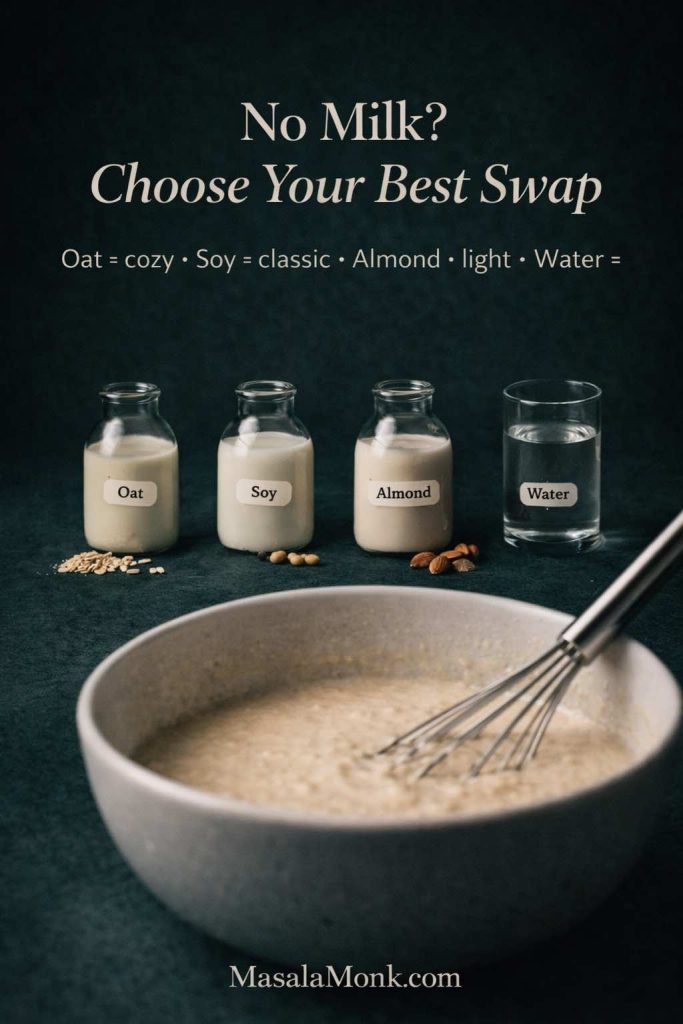
Plant milk for a waffle recipe without milk (dairy free waffle recipe option)
If your goal is a dairy free waffle recipe (and not just “I ran out of milk”), an unsweetened, unflavored plant milk is the easiest place to start. A practical overview of how non-dairy milk swaps work in baking can be found in King Arthur Baking’s guide on how to bake dairy-free. That same site also discusses how different plant milks behave in batters in their post on the best non-dairy milk for baking.
If you want a dependable, classic waffle texture, soy milk is usually the safest bet. It tends to create a batter with good body and a cooked waffle with a satisfying structure. Oat milk is another excellent option—mild, cozy, and often good for browning. Almond milk works too; it tends to produce a slightly lighter, more delicate waffle.
If you enjoy homemade versions, you can use them in this recipe as well. Homemade plant milks can vary in thickness, so you’ll adjust batter consistency by eye (you’ll learn how in a bit). If you want a good method, MasalaMonk has a helpful guide to easy homemade oat milk and a step-by-step for how to make almond milk at home.
Water in a without milk waffle recipe: when it works best
If you’re making a no milk waffle recipe because there’s simply nothing in the fridge, water is absolutely workable. The trade-off is flavor and browning: water doesn’t add sweetness or proteins, so waffles can taste a bit more neutral unless you balance with fat and a touch of sugar.
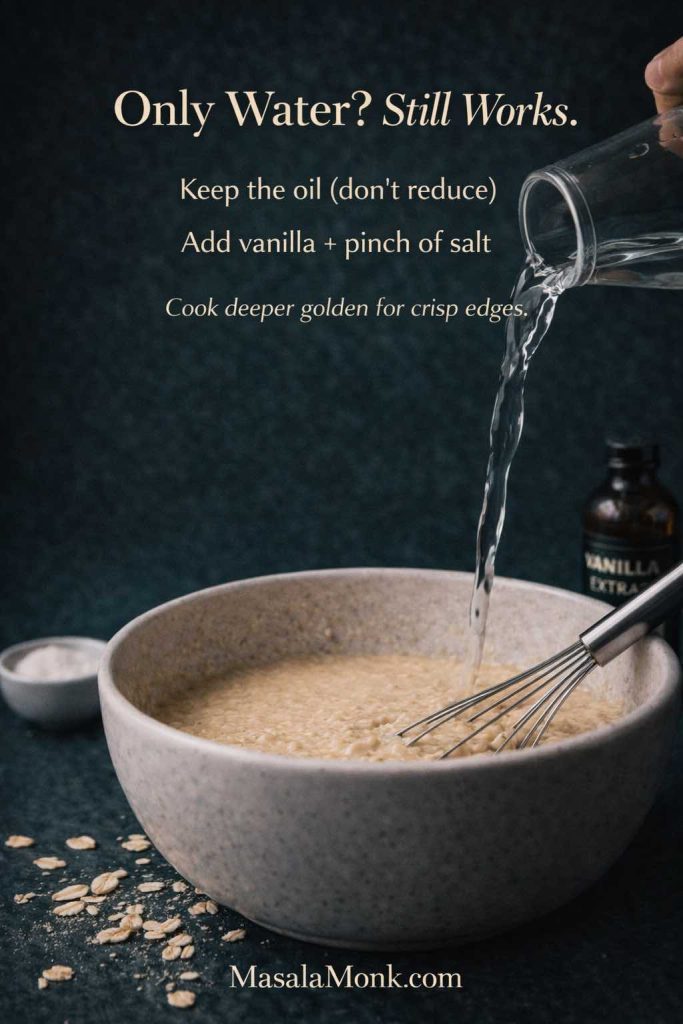
The upside is that water-based waffles pair beautifully with bold toppings. If you love peanut butter waffles, chocolate drizzle, or fruit sauces, water makes a surprisingly good “blank canvas.”
Sweetened or flavored plant milk
Vanilla almond milk or sweetened oat milk can be convenient, though it can push waffles toward dessert fast. If you’re planning toppings like syrup, fruit compote, or chocolate sauce, using unsweetened milk keeps you in control of sweetness.
Also Read: Almond Flour Pancakes (Easy Recipes) Fluffy, High-Protein, Keto & More
Waffle recipe without milk: the base you can memorize
This is the core waffle recipe without milk. It’s intentionally simple, yet it produces waffles that feel like a proper weekend breakfast: crisp outside, fluffy inside, and sturdy enough to hold toppings without turning soggy.
Ingredients (makes about 6–8 waffles, depending on your iron)
- 2 cups (250 g) all-purpose flour
- 2 tablespoons sugar (use 1 tablespoon for less sweet waffles)
- 1 tablespoon baking powder
- 1/2 teaspoon fine salt
- 2 large eggs
- 1 3/4 cups (420 ml) unsweetened plant milk (soy/oat/almond) or water
- 1/3 cup (80 ml) neutral oil (or melted dairy-free butter)
- 1 teaspoon vanilla extract (optional)
Method
- Preheat the waffle iron fully. Give it a few minutes beyond the “ready” indicator if your waffles tend to come out pale.
- Mix the dry ingredients. In a large bowl, whisk flour, sugar, baking powder, and salt until evenly combined.
- Mix the wet ingredients. In a second bowl or large measuring jug, whisk eggs, your chosen milk substitute (or water), oil, and vanilla.
- Combine gently. Pour wet into dry and stir just until the flour disappears. Small lumps are fine; overmixing makes waffles tough.
- Rest the batter. Let it sit 5–10 minutes. During this pause, flour hydrates and the batter becomes more consistent.
- Cook. Add batter to the hot waffle iron and cook according to the manufacturer’s directions. Avoid opening too early; it’s still steaming and setting.
- Serve or hold properly. Eat immediately, or keep waffles crisp using the oven-rack method described below.
That’s your waffle batter without milk. From here, you can keep it classic or branch out.
Also Read: Mayo Recipe: 15+ Homemade Mayonnaise Variations
How to keep a waffle recipe without milk crisp & crunchy
A common complaint with dairy free waffles (and waffles in general) is that they start crisp and then soften quickly. The reason is almost always steam. Fresh waffles release moisture. If you stack them on a plate, that moisture condenses and softens the crust.
The simplest fix is airflow. Epicurious explains crisp waffle technique—especially holding waffles on a rack in a warm oven—in their guide on how to make crispy waffles.
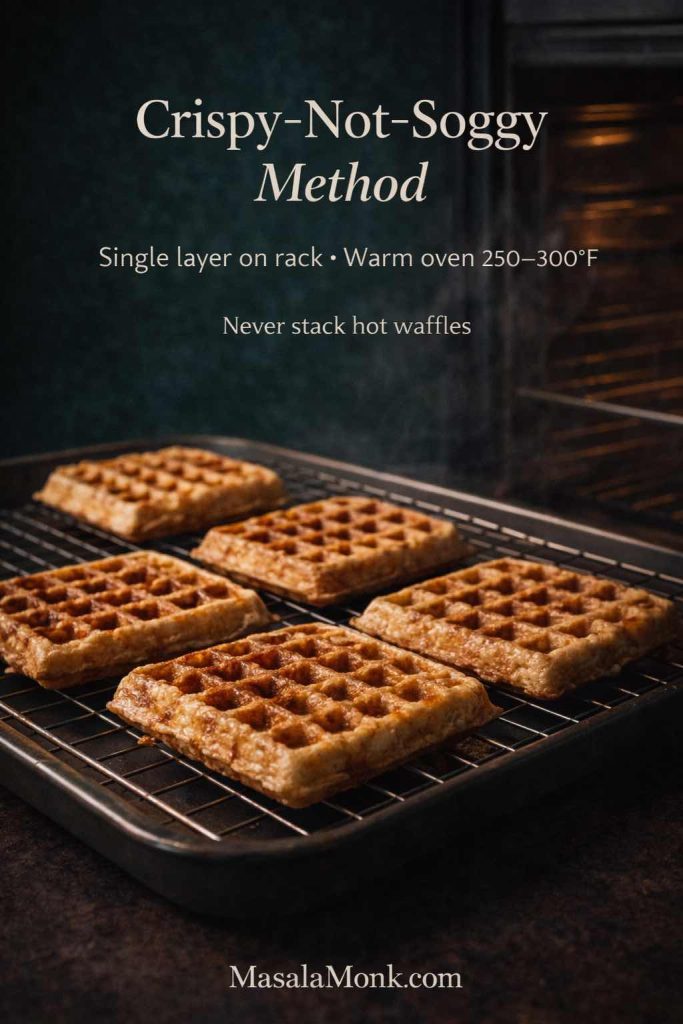
The crisp-holding method (works for every batch)
- Heat your oven to 250–300°F (120–150°C).
- Place a wire rack on a sheet pan.
- As each waffle finishes, place it on the rack in a single layer.
This method lets steam escape. As a result, your crunchy waffle stays crunchy while you cook the rest.
A few small moves that make a big difference
Cook a shade darker.
If your waffles are pale, they’re almost always soft. Let them go until deep golden.
Don’t skimp on fat.
Oil isn’t only richness—it helps crispness. Reducing oil too much can make waffles bready.
Let the iron preheat properly.
If the iron isn’t hot enough, waffles cook slowly and steam rather than crisp.
Avoid the “peek.”
Opening the iron early releases steam at the wrong moment. Waiting helps the waffle set and release cleanly.
Once you start doing these consistently, you’ll be able to make waffles without milk that stay crisp long enough to actually enjoy them.
Also Read: Negroni Recipe: Classic Cocktail & Its Variation Drinks
Waffle batter without milk: how to judge the consistency
Even a consistent recipe can feel different depending on flour brand, humidity, and the thickness of your plant milk. Instead of relying on a fixed look, aim for a familiar texture:
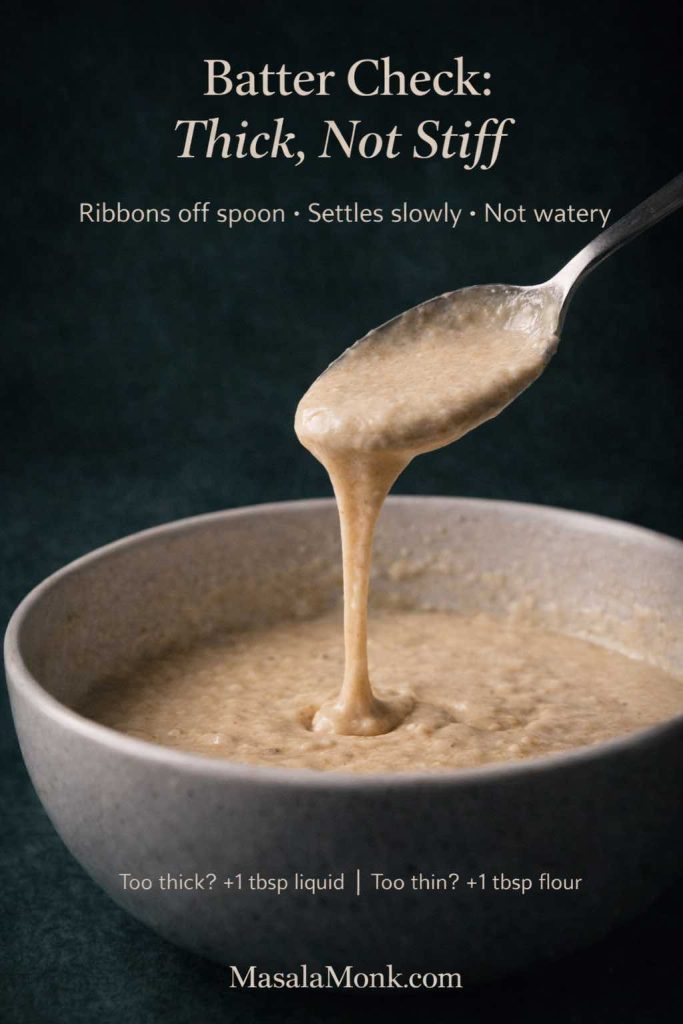
- The batter should be thick but pourable.
- It should flow off a spoon in a steady ribbon and settle slowly.
- It should not be watery, and it should not sit in a stiff mound.
If the batter is too thick
This can happen with oat milk that’s very thick, homemade plant milk, or oat flour variations. Add liquid one tablespoon at a time until it loosens slightly.
If the batter is too thin
If your plant milk is very watery, add 1–2 tablespoons flour, stir gently, then rest another few minutes.
This small adjustment prevents thin batter from spreading too much and producing flat waffles.
Also Read: 10 Best Espresso Martini Recipe Variations (Bar-Tested)
Dairy free waffle recipe: keeping it simple and still delicious
If your goal is truly dairy free waffles, the base recipe already gets you there as long as you choose:
- a plant milk (or water)
- oil or dairy-free butter
From there, toppings are where you can make breakfast feel special. For a quick option that stays dairy-free and pairs beautifully with crisp waffles, MasalaMonk’s 3-minute homemade chocolate syrup is an easy win.
If you prefer fruit over chocolate, you’ll love having a tart sauce ready to spoon over waffles.
Vegan waffle batter: waffles without milk and without eggs
Sometimes you want more than a dairy free waffle recipe—you want a vegan waffle recipe. That means building a vegan waffle batter: no milk, no eggs, still crisp, still fluffy.
Eggs do a few things in waffle batter: they add structure, bind ingredients, and support browning. When you remove them, you’ll want a replacement that adds some binding without weighing the waffles down.
A common, accessible approach is the flax egg. Cookie and Kate lays out the classic method in their guide on how to make a flax egg. For a broader look at egg substitutes, Bob’s Red Mill also discusses options in their article on egg substitutes for baking.
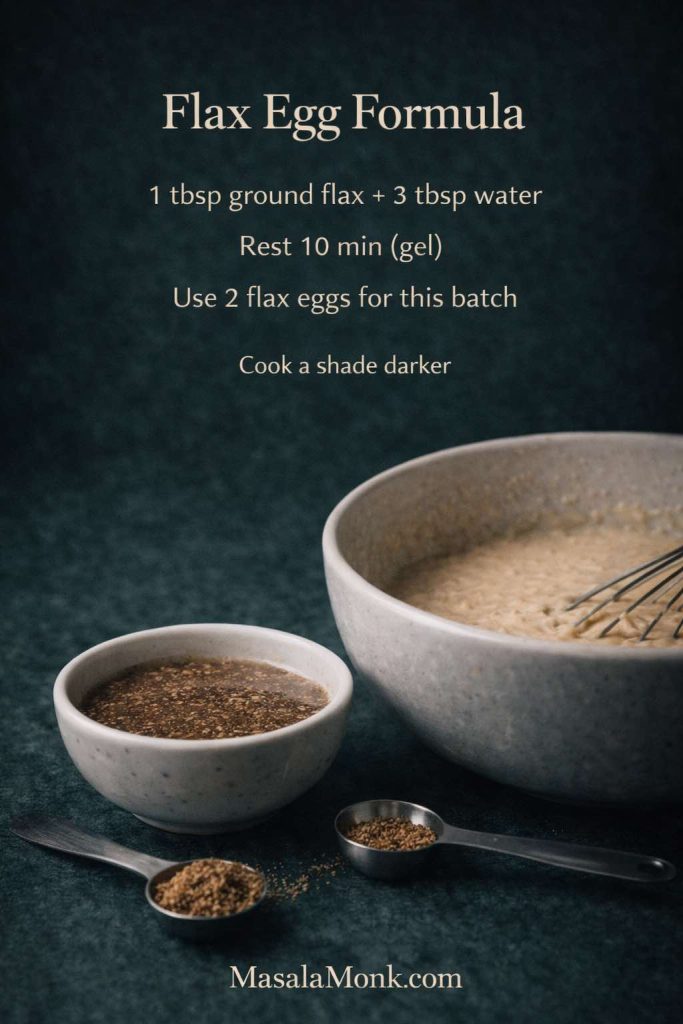
Vegan waffle recipe variation (flax egg method)
To convert the base batter into vegan waffles:
- Replace the 2 eggs with 2 flax eggs:
- 2 tablespoons ground flaxseed + 6 tablespoons water
- Stir and rest 5–10 minutes until gel-like
- Use plant milk (soy or oat tends to give better body than very thin milks).
- Keep the oil amount the same.
After mixing, let vegan waffle batter rest a little longer—around 10 minutes—so the flax has time to hydrate properly. When cooking, expect slightly longer cook times than the egg version. Rather than turning up the heat, let the waffle cook until it releases easily and looks richly golden.
If you’re making a plant-based brunch spread, it’s fun to offer more than one main. MasalaMonk’s vegan French toast recipes fit beautifully alongside vegan waffles, especially if you’re feeding a group with different preferences.
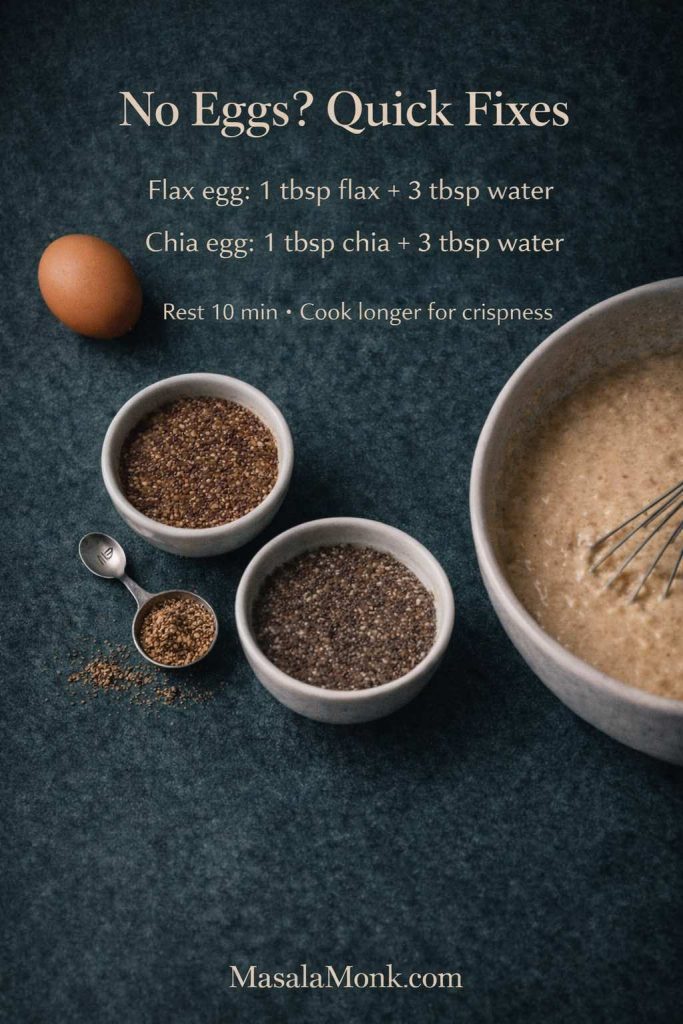
Eggless waffles and “no egg waffles” without going fully vegan
A lot of people search eggless waffles or no egg waffles because they ran out of eggs, not because they want a fully vegan breakfast. The flax egg method still works in that situation, and it’s often the simplest fix because it uses pantry ingredients.
If you want another eggless breakfast idea that still feels comforting and classic, MasalaMonk’s eggless French toast is worth bookmarking for those “no eggs in the fridge” mornings.
Vegetarian waffles: what people usually mean
“Vegetarian waffles” can mean a few different things depending on who’s searching. Many waffles are already vegetarian by default. Often, the person asking for vegetarian waffles is actually asking for eggless waffles, or for dairy free waffles. The easiest way to keep everyone happy is to start with the base waffle recipe without milk, then choose the variation that matches what you need:
- plant milk + eggs = dairy free waffle recipe (not vegan)
- plant milk + flax eggs = vegan waffle recipe
- water + eggs = no milk waffle recipe in a pinch
- water + flax eggs = vegan waffles when the pantry is bare
Once you see it that way, the labels stop being confusing and the waffles become predictable.
Also Read: 10 Creative Chia Pudding Recipes for Every Taste
Oat flour waffles and oatmeal flour waffles: a hearty, cozy variation
If you like waffles that feel a bit more filling—warm, slightly nutty, and perfect with fruit—oat flour waffles are the move. You’ll also see the phrase oatmeal flour waffles used often, usually to describe oat flour made by blending rolled oats into flour.
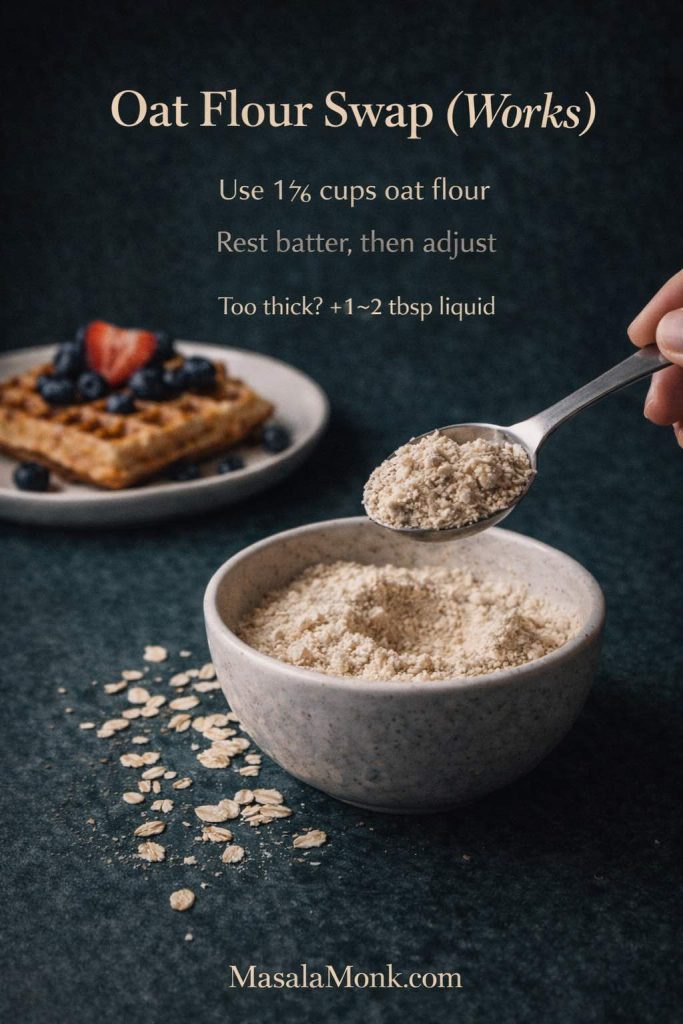
How to convert the base into oat flour waffles
Use the same recipe, with this swap:
- Replace the all-purpose flour with 1 3/4 cups oat flour.
After you mix and rest the batter, check the consistency. Oat flour absorbs liquid differently, and batter can thicken while it sits. If it becomes too thick, add 1–2 tablespoons plant milk or water and stir gently.
Oat flour waffles can be wonderfully crisp if the iron is hot and the batter includes enough fat. The oven-rack method is especially helpful here because oat flour waffles can soften faster if stacked.
For topping ideas that match oat flour especially well, fruit compote is a great choice. MasalaMonk’s spiced plum and dragon fruit compote adds color, fragrance, and a sweet-tart finish that feels special without being heavy.
Waffle mix without milk: how to make boxed waffles work
There are mornings when you want waffles but you don’t want to measure flour. Waffle mix exists for a reason. The only catch is that many boxes assume you’ll use dairy milk.

You can still make waffle mix without milk easily:
- Replace the milk with an equal amount of unsweetened plant milk.
- If you must use water, consider adding a tablespoon of oil (especially if the mix is lean) to support browning and crispness.
If you’re curious about how milk swaps behave in baked goods, King Arthur’s post on how to bake dairy-free is a helpful general reference.
Making waffle mix without milk taste more “homemade”
Instead of rewriting the mix, focus on a few small upgrades:
- Add vanilla extract for warmth.
- Rest the batter for 5–8 minutes so it hydrates evenly.
- Cook thoroughly and hold finished waffles on a rack so steam doesn’t soften the crust (again, the technique from Epicurious’ crispy waffle guide matters here).
If you like the idea of “mix upgrades” for breakfast batters, you might also enjoy MasalaMonk’s approach to pancakes, especially the mix-friendly ideas in blueberry pancakes and homemade pancake mix.
Peanut butter waffles and waffles and peanut butter: two easy ways to go nutty
Peanut butter is one of the easiest ways to make dairy free waffles feel richer and more satisfying. You can bake it into the waffle or treat it as the star topping.
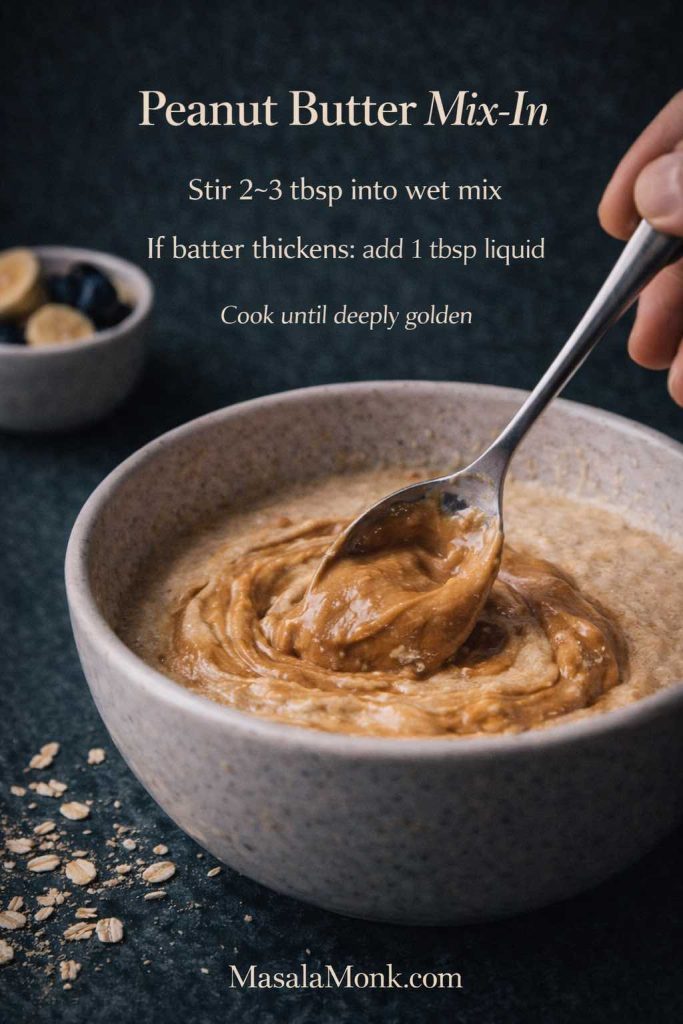
Peanut butter waffles (peanut butter in the batter)
For peanut butter waffles, whisk 2–3 tablespoons peanut butter into the wet ingredients before combining wet and dry. This adds richness and a gentle roasted-nut aroma. It’s particularly helpful if you’re using water in your waffle batter without milk, because peanut butter adds flavor and body that water doesn’t provide.
If the batter becomes slightly thicker, don’t panic. Let it rest, then loosen with a tablespoon of liquid if needed.
Waffles and peanut butter (topping-style)
For waffles and peanut butter, keep the base recipe unchanged. Spread peanut butter over a hot waffle so it melts into the pockets, then add banana slices, berries, or a drizzle of syrup. This method is faster and lets everyone choose their own amount.
To make it feel like a dessert without turning breakfast into a project, add a drizzle of MasalaMonk’s dairy-free chocolate syrup. Peanut butter plus chocolate on a crisp waffle is hard to beat.
Fruit toppings that make waffles without milk feel festive
Waffles without milk taste especially good with bright fruit because the base flavor stays clean and neutral. You don’t need whipped cream or butter to make waffles feel special—fruit does a lot of work on its own.
A standout option is cranberry-orange sauce: tart, fragrant, glossy, and perfect for spooning. MasalaMonk’s cranberry sauce with orange juice works beautifully on classic waffles, vegan waffles, and oat flour waffles alike.
If you prefer a softer, spiced fruit profile, the plum and dragon fruit compote mentioned earlier is another great direction—especially if you like the idea of waffles feeling a little more “brunchy” and a little less “dessert.”
Turning dairy free waffles savory
Sweet waffles are iconic. Even so, waffles can be a fantastic savory base—especially if you reduce the sugar in the batter to 1 teaspoon or skip it altogether. Suddenly the waffle becomes more like a crisp bread: a platform for herbs, sauces, and savory spreads.
Two sauces that work surprisingly well with savory waffles are pesto and chimichurri:
- MasalaMonk’s pesto recipes include variations that can keep things dairy-free while still tasting bold and fresh.
- MasalaMonk’s chimichurri recipe adds tang and brightness that contrasts beautifully with crisp waffles.
Savory waffles are also a great way to use waffles for lunch rather than breakfast, especially when you want something quick that still feels intentional.
Syrup choices and sweetener curiosity
Most people reach for syrup automatically. Others like to think more carefully about sweeteners and how they compare. If you enjoy that kind of exploration, MasalaMonk’s article on maple syrup vs sugar is an interesting read and can help you choose toppings that match your taste and goals.
Even if you never change what you pour on top, it’s nice to understand why some sweeteners taste richer, why some feel “sharper,” and how those flavors play with fruit or peanut butter.
Make-ahead waffles without milk: storing and reheating without losing crispness
Waffles are one of the best make-ahead breakfasts because they reheat well—if you store them properly.

Cooling first (so they don’t steam themselves soft)
Let waffles cool on a rack before refrigerating or freezing. If you store them hot, steam gets trapped, moisture condenses, and the crust softens.
Fridge vs freezer
For short-term plans, the fridge works. For longer storage, the freezer is better.
If you want general cold storage guidance, FoodSafety.gov provides useful references in their cold food storage charts. For a broader food safety overview on refrigeration, the USDA FSIS page on refrigeration and food safety is a straightforward resource. If you like seeing a clear chart for storage timing, the FDA’s refrigerator and freezer storage chart is another widely used reference.
Reheating for a crunchy waffle finish
To bring waffles back to life:
- Toaster: fast and crisp, especially for standard-sized waffles
- Oven: best for batches; place waffles on a rack so air circulates
- Air fryer: great for quick crisping with even heat
No matter which method you choose, airflow and heat restore crispness. Stacking and microwaving, by contrast, tend to soften waffles.
Also Read: Double Chocolate Chip Cookies – Easy Recipe with 7 Variations
Troubleshooting: when waffles without milk don’t behave
Even a dependable waffle recipe without milk can occasionally surprise you. Instead of guessing, use these practical fixes.
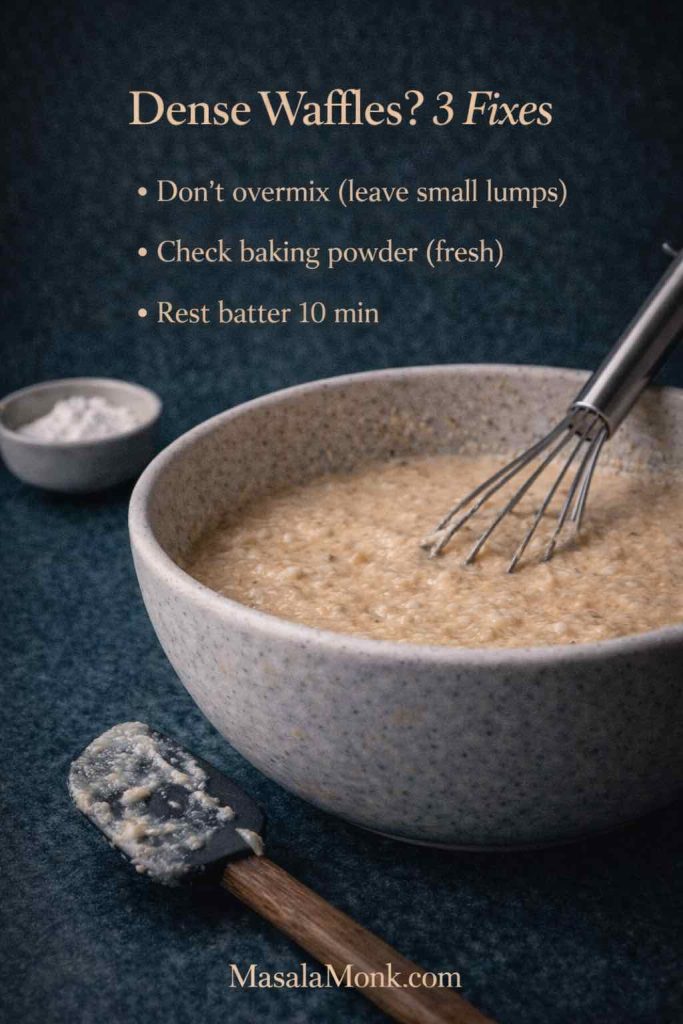
Problem: waffles are dense
- Your baking powder may be old.
- The batter may be overmixed.
- The iron might not be hot enough.
Try mixing more gently, resting the batter, and cooking fully until deep golden.
Problem: waffles are pale
- Preheat longer.
- Cook longer.
- If using water, consider adding a touch more sugar (even a teaspoon) to help browning.
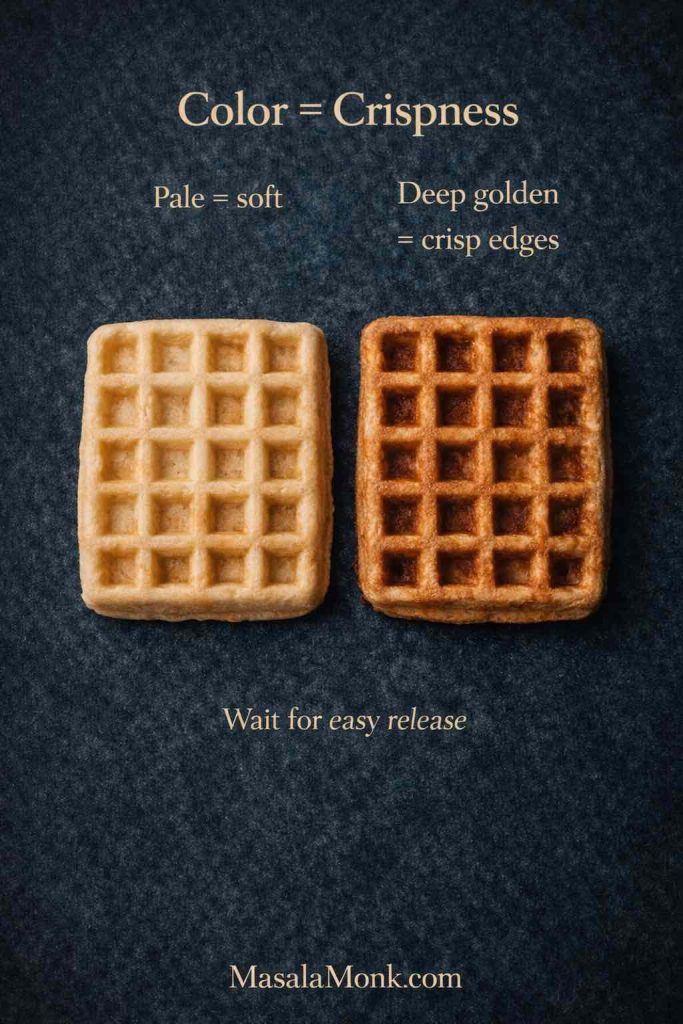
Problem: waffles soften quickly
This is almost always steam. Use the rack-in-the-oven method from the Epicurious crispy waffle guide. Avoid stacking until waffles have cooled.
Problem: vegan waffles feel gummy
Make sure your flax mixture has time to gel (the process described in Cookie and Kate’s flax egg method helps here). Also, cook vegan waffles a bit longer and let them crisp on a rack rather than stacking.
Serving ideas that keep breakfast interesting
A waffle recipe without milk is a base. The fun comes from how you serve it. Here are a few directions that keep things fresh:
- Classic and simple: syrup, fruit, and a pinch of salt to sharpen sweetness
- Peanut butter waffles: peanut butter mixed into batter + banana slices
- Waffles and peanut butter: peanut butter on top + berries + chocolate drizzle
- Fruit-forward: cranberry-orange sauce or spiced fruit compote
- Brunch spread: waffles + pancakes + coffee-style drink
If you want to build an easy “choose-your-own” breakfast table, it helps to offer one more main besides waffles. MasalaMonk’s almond flour pancakes are a good contrast if you want something different from classic flour-based batters. For a more playful weekend option, blueberry pancakes add variety and feel festive without much extra work.
And if you like a warm, cozy drink with your waffles—especially when you’re leaning into cinnamon, vanilla, or fruit—MasalaMonk’s healthy pumpkin spice latte fits the mood nicely.
The big picture: one base batter, many waffle styles
After you’ve made this a few times, the recipe stops feeling like a workaround and starts feeling like your go-to. The same waffle recipe without milk can lean classic with soy milk, softer and sweet with oat milk, or wonderfully straightforward with water when that’s all you have.
From there, the variations almost build themselves. Swap in plant milk and a dairy-free fat, and it becomes dairy free waffles that still taste familiar. Trade the eggs for a flax-based option, and vegan waffle batter turns into waffles without milk and without eggs—still golden, still satisfying.
Even the flour can shift without changing the whole method. Oat flour waffles (and oatmeal flour waffles) fit right into the same rhythm with a simple swap and a quick consistency check. Meanwhile, crispness becomes predictable once airflow is part of the routine—no stacking, no steam, just a crunchy waffle that holds its texture while the next batch cooks.
Boxed batter fits too. Waffle mix without milk works with the same logic, and it’s easy to keep a few topping directions ready—peanut butter waffles, waffles and peanut butter with fruit, chocolate drizzle, or bright sauces—so breakfast never feels repetitive.
Most importantly, milk stops being a gatekeeper. Waffles happen whenever you want them.
Also Read: Peanut Butter Cookies (Classic Recipe & 3 Variations)
FAQs about Waffle Recipe Without Milk
1) Can I make a waffle recipe without milk and still get crispy waffles?
Yes. A waffle recipe without milk can turn out crisp on the outside and fluffy in the middle as long as your waffle iron is fully preheated, the batter has enough fat, and the waffles are cooked until deeply golden rather than pale.
2) What’s the easiest no milk waffle recipe substitution if I’m out of everything?
If you have no milk substitutes, you can use water in a no milk waffle recipe. Even so, expect a slightly more neutral flavor, so toppings like fruit, syrup, or nut butter can make the waffles taste more rounded.
3) How do I make waffle batter without milk taste less “plain”?
To add more flavor to waffle batter without milk, use vanilla, a pinch of salt, and a bit of sugar for balance. Additionally, using plant milk instead of water usually brings a softer sweetness and better browning.
4) Which milk substitute works best for waffles without milk?
Generally, unsweetened soy milk gives the most “classic” structure for waffles without milk. Meanwhile, oat milk often browns nicely and tastes mild, while almond milk can make a lighter, more delicate waffle.
5) Can I use waffle mix without milk?
Absolutely. Waffle mix without milk works well with plant milk substitutes or water. However, if you use water, adding a little oil often helps the waffles brown better and stay crisp longer.
6) How do I fix thick waffle batter without milk?
If waffle batter without milk is too thick, stir in extra liquid one tablespoon at a time until it becomes thick-but-pourable. Afterward, let the batter rest briefly again so it hydrates evenly.
7) How do I fix thin waffle batter without milk?
If the batter seems too thin, mix in a small amount of flour, then rest the batter for a few minutes. As it sits, the flour absorbs moisture, which helps waffles cook up thicker and less fragile.
8) Why are my waffles without milk turning soft after cooking?
Most often, it’s trapped steam. Instead of stacking waffles, place them in a single layer so air can circulate. Otherwise, the crust softens quickly even if the waffle was crisp at first.
9) Can I make vegan waffle batter without milk and without eggs?
Yes. Vegan waffle batter without milk typically uses a plant milk plus an egg replacement like flax or chia. As a result, you can still make vegan waffles that are tender inside and crisp outside.
10) Are eggless waffles the same as vegan waffles?
Not always. Eggless waffles remove eggs but may still include dairy ingredients. In contrast, a vegan waffle recipe removes both eggs and dairy, meaning it’s waffles without milk and without eggs.
11) How do I stop vegan waffles without milk from feeling gummy?
First, let the egg replacer mixture thicken properly before mixing the batter. Next, cook the waffles a little longer until they release easily. Finally, let them cool briefly in a single layer so steam doesn’t soften the crust.
12) Can I make oat flour waffles without milk?
Yes. Oat flour waffles without milk work well with plant milk or water. Still, oat flour absorbs more liquid, so you may need a small splash of extra liquid after the batter rests.
13) Is “oatmeal flour waffles without milk” different from oat flour waffles?
Usually, no. “Oatmeal flour” often refers to oat flour made by blending oats. Therefore, oatmeal flour waffles without milk can be made using the same method as oat flour waffles without milk.
14) Can I make peanut butter waffles with a waffle recipe without milk?
Definitely. Peanut butter waffles can be made by mixing peanut butter into the wet ingredients, then cooking as usual. Alternatively, you can keep the batter plain and top the waffles with peanut butter for a similar flavor.
15) What’s the best way to do waffles and peanut butter so it doesn’t feel heavy?
Try spreading a thin layer of peanut butter on a hot waffle so it melts, then add fruit like banana or berries. That combination keeps waffles and peanut butter balanced rather than overly rich.
16) Why are my waffles without milk coming out pale?
Typically, the iron isn’t hot enough or the waffles aren’t cooked long enough. Also, if you used water instead of plant milk, browning can be lighter, so cooking a bit longer helps.
17) Can I make dairy free waffles with the same waffle recipe without milk?
Yes. A waffle recipe without milk becomes dairy free waffles when you use plant milk (or water) and choose a dairy-free fat. Consequently, the same base recipe can work for many dietary needs.
18) How far ahead can I make waffles without milk?
You can make waffles without milk ahead of time and store them for later. For best texture, cool them fully before storing so they don’t trap steam and soften.
19) What’s the best way to reheat a waffle recipe without milk?
To bring back crispness, reheat waffles in a toaster or oven rather than the microwave. In particular, dry heat restores the crust better than steaming.
20) Do waffles without milk taste different from regular waffles?
Sometimes slightly, depending on the substitute. Plant milk versions usually taste very close to classic waffles, while water-based waffles can taste lighter and more neutral—making toppings even more important for flavor.

